

Top Destinations in Peru
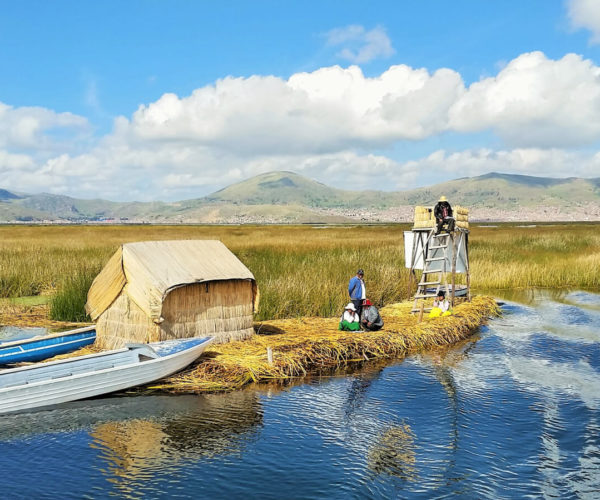
Colca Canyon
- TOURS FROM AREQUIPA
- TOURS FROM CUSCO
- COLCA CANYON TOURS
Most Popular Tours
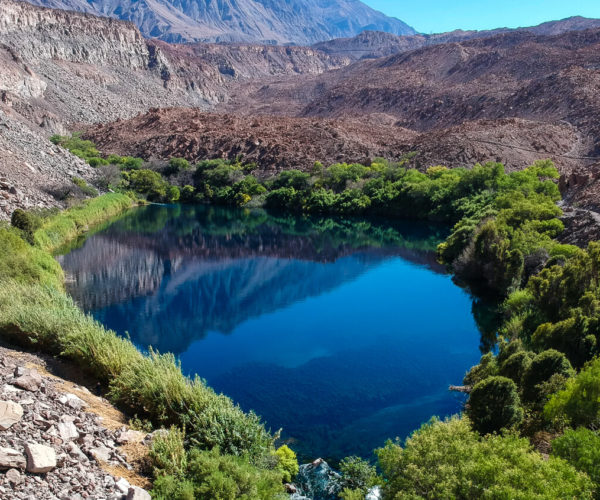
Valle de los Volcanes (Valley of the Volcanoes) – 3 Days
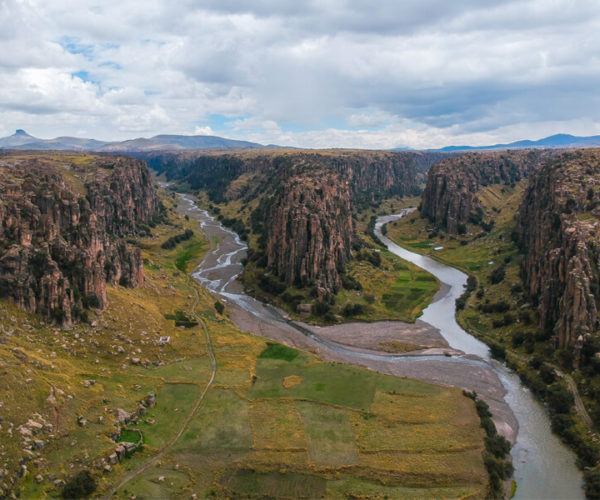
Cusco to Arequipa via Colca Canyon – 3 Day Off the Beaten Path Overland
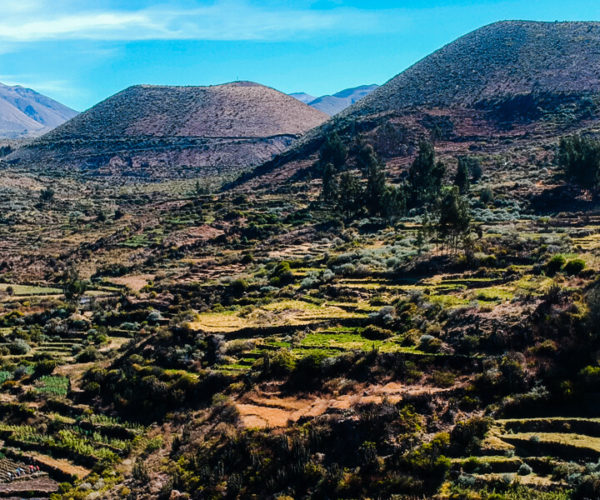
Colca Canyon & Valley of the Volcanoes Off the Beaten Path Tour from Arequipa – 4 Days
Use the form below to contact us directly..
Please complete all required fields.
Booking details
Submit booking, confirmation, booking info.
First name:
Special requirements:
Total price:
We wish you a pleasant trip your Inca Frontiers LLC team
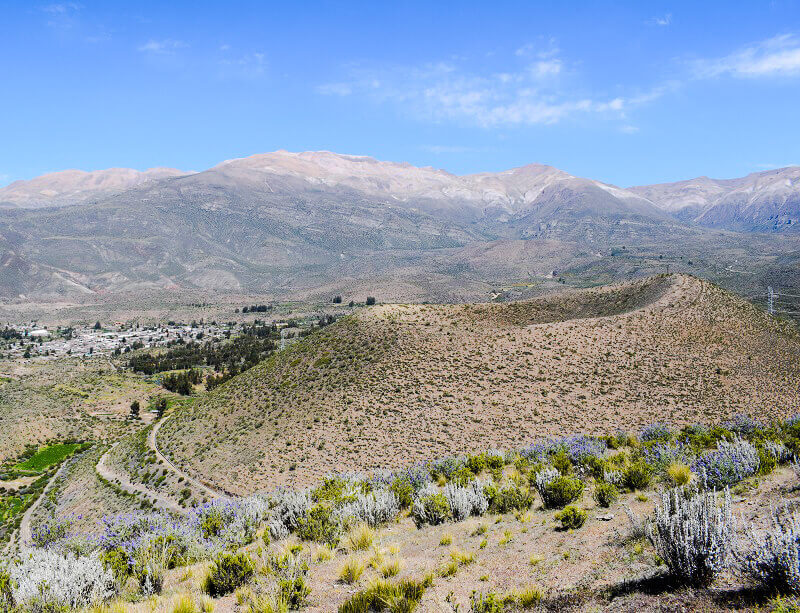
Unlike Macchu Picchu in Cuzco, the Cotahuasi and Colca Canyons of Arequipa are two underrated pockets of undiscovered beauty. Our ambitious journey encompasses both of the world’s deepest canyons plus a wealth of culture and nature, taking in traditional Andean villages only accessible by off-road vehicle, snow-capped volcanic peaks, lush valley landscapes and a fascinating colonial history.
- Deep canyons - Get to know both of the world’s deepest canyons (deeper than the Grand Canyon)
- Volcanoes - Visit the undiscovered Valley of the Volcanoes
- Condors - Marvel at the Condor of the Andes gliding over Mirador Cruz del Condor in Colca Canyon
- Hot springs - Relax in natural pools of medicinal hot springs
- Laguna Mamacocha - Discover this hidden jewel of a pristine lake deep in the Valley of the Volcanoes
- Wildlife - View flamingos, vicuñas, vizcachas, condors and plenty more Andean animals
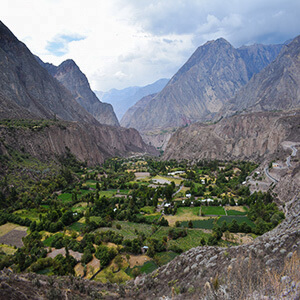
This morning depart Arequipa and head northwest through the Panamerican highway at sea level and then through the highlands at the base of Mt. Coropuna - about 4.500m - before descending into the Cotahuasi valley. Enjoy a scenic picnic lunch en route, and view endemic Andean flora and fauna such as the ‘Kheñua’ tree, vicuñas, llamas, alpacas and birds. Admire Andean lagoons and arrive to your lodge in the evening. Time depending, you can explore Cotahuasi village on your own, or just relax and freshen up before dinner.
- Meals included: Lunch, Dinner
- Accommodation: Basic and Standard levels available (click/tap here for more info)
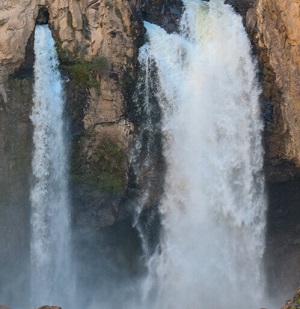
Rise early and hike deeper into the Cotahuasi Canyon, beating everyone else (not that there will be many) who may be coming to experience the unique waterfalls of Sipia in the world’s deepest canyon. Once you have explored the area thanks to an active morning, return to the village for a quick rest and lunch.
Following lunch you will set back out into the highlands along the base of Mt. Coropuna but this time driving through the vast expanse of the Altiplano desert with awe-inspiring views of the snow-capped peaks until you reach a remote pass at the top of this plateau. After arriving at this pass, descend once again but this time into the undiscovered Valley of the Volcanoes. Arrive at your local guesthouse in the early evening
- Meals: Breakfast | Lunch | Dinner
- Accommodation: Basic level only (homestay)(click/tap here for more info)
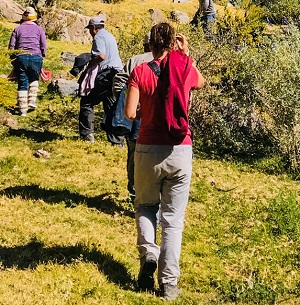
This morning you will awaken with a spectacular sunrise over the Valle de los Volcanes - a region so rich in geological history that it was recently declared a UNESCO Global Geopark. After breakfast, pack up for a scenic hike (or horse ride) down the 5-8km path to the Shankillay Waterfalls OR the Twin Volcanoes (your choice). Once you arrive back at the town, enjoy walking around it on your own and take in the quiet surroundings of a truly traditional Peruvian village or relax at your quaint guesthouse in the company of your local hosts.
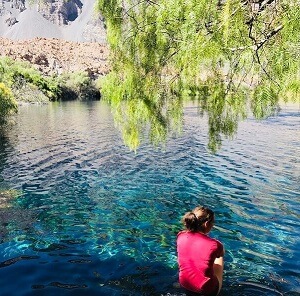
Embark this morning on a fascinating drive south through the canyon landscapes of the Valley of the Volcanoes, past lush agricultural terraces and petrified lava formations to eventually arrive at your final destination - the pristine and stunning Laguna Mamacocha. Here you can enjoy the pleasant breeze and the sound of silence as well as an optional and refreshing swim in its crystal-clear waters. If lucky, we may get a glimpse of the elusive otter that makes this large freshwater spring its home.After an idyllic picnic lunch, climb aboard our vehicle and drive through more canyon country headed for the Colca Canyon where you arrive in the late afternoon. Spend your last evening relaxing under the southern hemisphere stars at the natural hot springs of Yanque (Basic and Standard) or in your own hotel (Plus and Premium levels).
- Accommodation: Basic, Standard, Plus and Premium levels available.(click/tap here for more info)
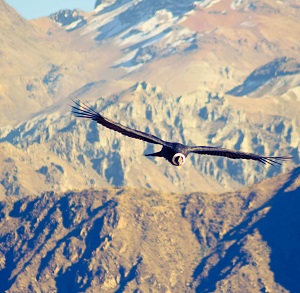
Another memorable experience awaits you today: being a witness of the majestic Condor of the Andes gliding above you! Head out into the cool morning with your guide to get the best possible spot at Mirador Cruz del Condor viewpoint before the crowds arrive. Watch the awe-inspiring flight of this Andean bird mere meters from you. Later, enjoy a tasty buffet lunch in a local town. Then, head back out on the road later in the afternoon for a picturesque nature drive across Salinas y Aguada Blanca Reserve before arriving back in the city of Arequipa where this trip of a lifetime ends.
- Meals: Breakfast | Lunch
- Accommodation: None
What's included
- Meals 5 lunches, 4 breakfasts, 4 dinners (vegetarian available
- Accommodation 4 nights of included accommodation in Basic, Standard, Plus or Premium hotels
- Transportation Private off-road vehicle (no local buses)
- Activities All places and activities as indicated in the itinerary
- Staff & experts
- Certified bilingual guide (English-Spanish)
- All admission fees
What's not included
- Soft/fizzy and alcoholic drinks
- Optional tips/gratuities (suggested)
- Anything not mentioned under What’s included
Is this trip right for you?
- Five days several hours’ drive on paved roads and off-road trails
- A couple of high passes at almost 5.000m are reached on a couple of days
- Ideal for trekking/hiking enthusiasts
- Some accommodation is very Basic (at least one night) as no other options are available
- Food/meals are provided as a combination of outdoor picnics and local restaurants
- Different types of climates are experienced, from scorching hot days to freezing mornings so it is important to be prepared with good equipment
- This trip is enjoyed the most if you enjoy time in the outdoors and undiscovered areas away from the crowds
Service levels
* Order of preference is suggested and is subject to availability
** Subject to availability. If no availability, a Plus alternative will be offered.
1. How does pricing for this trip work?
We offer two types of pricing for this trip: Private and Group/Shared. Private pricing is per person and varies according to the size of your party but it has the added advantage of being a tour exclusively for your group (no third parties are allowed to join) and departing ANY date of your choice. On the other hand, group/shared pricing is also per person but has the advantage of being set/fixed for everyone as long as the minimum number of participants needed is reached and departure dates are fixed, so you must adapt to our dates.
2. How do I get the prices?
Simply submit your inquiry using the SEND INQUIRY button on this page. Please mention whether you are interested in a private or group/shared trip and the size of your party. We will respond within a few hours with your price.
3. Does this trip depart every day?
No, this trip does NOT depart on a daily basis. We offer set/fixed dates that you can join if suitable for you for a group/shared departure. If your dates are not flexible, you can opt for our private departures which can leave any date of your choice. See below for dates or contact us using the SEND INQUIRY button
4. How do I book this trip?
Once you have decided whether a private OR group/shared departure suits you better, just let us know and we will send you a booking form online. You will need to pay a minimum, secure deposit online by credit card or PayPal to book your place. You may choose to pay the balance upon arrival or online.
Private departures
Our private tours have the added advantage of departing on ANY date of our customers’ choice and being completely flexible/customizable during the trip. However, the price will vary according to the size of YOUR party and provided you are happy with the quote given, you can choose to book it for immediate confirmation. Just click on the blue SEND INQUIRY button to receive a prompt quote (don't forget to mention the number of travelers).
We are sorry, there are no reviews yet for this tour.
Frequently asked questions
1. when is the best time of the year to take this trip.
We offer this trip year-round but the best months to join are from May to December (dry season) when all roads are fully accessible and sunny, dry days are the norm. During the rainy months of January to April (varies each year) departures are possible provided you don’t mind a cloudy day or two, are prepared for potential showers and the conditions are not too adverse (unlikely but possible).
2. How does pricing for this trip work?
3. how do i get the prices, 4. does this trip depart every day.
No, this trip does NOT depart on a daily basis. We offer set/fixed dates that you can join if suitable for you for a group/shared departure. If your dates are not flexible, you can opt for our private departures which can leave any date of your choice. See the tab Booking & Departures for dates or contact us using the SEND INQUIRY button
5. How do I book this trip?
6. how far in advance should i book this trip.
As early as you possibly can. We are admittedly and proudly a small-medium sized company so our availability is limited as well as that of our accommodation partners. That said, we do accept last-minute bookings provided you have contacted us to inquire about availability and we have confirmed its existence. In general, people book a few months in advance to ensure their place in the tour and plan around it.
7. Being off the beaten path and remote, is this trip safe to take?
Yes. We take all necessary precautions such as providing a professional driver, a properly maintained vehicle equipped with phone (satellite phone is not necessary but is available for an additional fee for extra safety), first aid kit, oxygen and emergency supplies. In addition, the reason why we offer trips in these regions is because we know them upside down, have emergency contacts, know all roads and locations perfectly and always have a back up plan.
8. Where do I sleep during this trip?
We use local lodges, guesthouses and basic hotels in parts where infrastructure is basic. Where more options are available, we give you the option of choosing between a Basic, Standard, Plus or Premium hotel according to your budget. See each day’s itinerary for more info.
9. Can I book this trip if I am a solo traveler?
Solo travelers are welcome to book this trip on a group/shared or private basis. Please note that our group/shared departures are fixed, so you must have a flexible schedule to join. If you are not flexible and don’t mind paying the 1-person price for a private departure, we are ready to depart on any date.
10. Where does this trip start and end?
This trip starts at your doorstep in the city of Arequipa and ends in downtown of the same city (may be back in your hotel based on its location, otherwise downtown is the drop off point unless you are a private group in which case your accommodation is the drop off point).
11. Where do I eat during this trip?
We provide a mix of eating outdoors as picnic and also in local, reliable restaurants/hotels.
12. Can I take this trip if I haven’t had the chance to acclimatize?
It is highly suggested you have spent prior time at high altitude to avoid the unpleasant effects of altitude sickness. However, many people on a tight schedule have joined us and taken their own precautions such as talking to their doctor to be prescribed altitude medication. In any way, we adapt to the condition of our participants and if you did not have the chance to do neither suggestion above, you should just take it slowly and stay hydrated, chew coca leaves, drink coca tea, etc.
13. Do I need travel insurance to participate in this trip?
We highly recommend having travel insurance to participate in ANY activity outside your home country. We will provide all assistance in the case of a medical emergency (transportation, translation, request documents for insurance claims, etc) but will not be responsible for costs associated with treatment.
14. What is the typical size of the group?
In the case of private groups/departures, the size of the group is dictated by your party size. In the case of group/shared departures, group size is limited to a maximum of six participants per vehicle/guide.
15. Who are my travel companions?
In the case of a private group/departure no third parties are allowed to join, so your party is limited to yourselves. In the case of group/shared departures, your companions are likely to be international travelers with similar interests, looking for off the beaten path, grassroots experiences and who dislike traditional tourism in large coaches full of people.
16. Who is this trip for?
As mentioned above, travelers looking for authentic experiences in far-away, little-known places where mass tourism is nonexistent and where cultural and natural interaction takes place.
17. Who is this trip NOT for?
People looking for luxury and the classic way of traveling in comfortable coaches. People who are not interested in meeting the local population and people who do not enjoy the outdoors and active experiences. People who are only interested in ticking off another place on their list will not enjoy this trip either.
18. Is everything included or do I need to pay for things on the way?
Our quoted price includes everything mentioned in the What’s included section and you can be certain that those items will be covered. No surprise charges nor unpleasant experiences. Other than the items under the What’s not included section, everything else is included in the price.
19. Do I need a sleeping bag?
If you are booking into the Basic level of service, a sleeping bag may come in very handy but is not essential. All accommodations will provide as many blankets as you need, but if you prefer to sleep in your own bag, do bring it.


A journey to Cotahuasi Canyon, Peru – one of the deepest canyons in the world
The Andes are the longest continental mountain range on Earth, stretching along the whole length of South America. This range reaches 7000 m altitude, and many of the other high peaks rise above 5000 m, in contrast to the nearby Pacific Coast. And it is some points, it is cut by deep canyons, like trenches on the surface of the planet. One of them is Cotahuasi Canyon- a spectacular abyss with giant steep slopes, surrounded by snowcapped mountains. Let’s go on a journey to Cotahuasi and get the best of it!
Table of Contents
Basic facts about Cotahuasi Canyon
Open the physical map of Peru. Here you can see the Andean mountain range along the Pacific coast of South America. And if you zoom at the southern part of the country, you can see two deep trenches that cut the mountains. These are two giant canyons. The southeastern one is called Colca, and the northwestern one is Cotahuasi .
Natural facts
Look at the satellite map of the Andes. Their giant mountains are quite high, with peaks reaching more than 5000, even 6000 m altitude. And there are some glacial lakes scattered here and there.
One of these lakes, located at about 4700 m altitude is called Wansuqucha (or Huanso). The lake is not closed, but its waters exit through a small stream called Cotahuasi. It is like many other streams in the high mountain, but this one is destined to cut the mountain ridges deeper and deeper, forming one of the largest canyons in the world .

Cotahuasi River
Cotahuasi River is about 130 km long. It starts from 4700 m (Lake Huanso) and reaches a larger river, called Ocona at 910 m near the town of Chaucalla. In fact, here the canyons of Cotahuasi and Ocona merge into one valley that reaches the Pacific Ocean at the town of Ocona.
How long is Cotahuasi Canyon? It is difficult to say because the river flows almost entirely on the bottom of a canyon-type valley. So, it doesn’t have a clear starting and ending point. In fact, the canyon terrain proceeds further downward on the Ocona River, and it remains as such until its mouth at the Pacific Ocean.
But how about its depth? It is clearer. The deepest point of Cotahuasi Canyon is located in the village of Quechualla (between the town of Cotahuasi and the merging point with the Ocona River). Here the bottom is at 1580 m altitude while the highest edge is at 5115 m, near the top of Mount Solimana (6093 m). With that altitude difference- 3535 m, it is the third deepest canyon on the Earth, slightly deeper than its southeastern neighbor Colca Canyon .
Terrain and nature
The area around Cotahuasi Canyon is spectacular. And you can imagine- the lowest point of the canyon (without its extension of Ocona River valley further downwards) is below 1000 m while the highest point in the area is Mount Coropuna (6425 m), located in the middle between Cotahuasi and Colca canyons. That’s more than a 5 km elevation difference!
And this is what you can see on the satellite map- a giant trench with a bit smaller branch (Ocona Canyon) like a cut on the Andean mountain range. This area is covered by 12 ecosystems- from a mountainous subtropical type of landscape to ice caps like in Antarctica. Today, this is protected by the establishment of the Cotahuasi Natural Reserve.

At the same time, this elevation difference speaks about an extremely difficult terrain. Yet this place has been inhabited for thousands of years…
History and local culture
Cotahuasi Canyon and the area around it are difficult to access. So, the people, their culture, and their traces from ancient times have remained well-preserved here. You can see petroglyphs, tombs, and other artifacts from Pre-Inca and Inca times, as well as some Spanish influence from the colonial period.
Nowadays, the population here consists mainly of native ethnic groups, descendants of the ancient people. You can see their lifestyle which hasn’t changed much since ancient times. In the lower elevations, they work mainly on agriculture- you can see the terrace fields on the steep slopes they’ve made, and these terraces exist for centuries. And in higher elevations they raise livestock.
So, all of the facts above is a very attractive reason to visit and explore Cotahuasi Canyon. But before we get into detail, let’s make a comparison.
Cotahuasi vs Colca
Both Cotahuasi and Colca belong to the largest canyons in the world. They are quite close to each other, in the same mountain range, with similar landscapes, and similar cultures. If you can visit them all, that would be the best, although most probably after you have visited one of them, visiting the second one would look like a useless “repetition” of the first visit.
Yet there are some differences. First, Colca is much more famous and touristy. As a result, it is much better developed for tourists, with better roads, more resorts, hotels, restaurants, parking lots, panoramic terraces, and more. It is closer to the large city of Arequipa and can be much more easily accessed.
On the other side, Cotahuasi is much wilder and off the beaten. There is only one road that reaches the canyon from the “civilization”, not without many hours of adventurous traveling, and tourism in general is much less developed. As a result, only a few tourists go there.
So, we can say that Colca is for tourists and adventurous travelers, but Cotahuasi is only for the latter type of people. If you are looking for something untouched, authentic, wild, and adventurous, far from crowds- choose Cotahuasi instead of Colca!

Include a travel insurance as a part of your trip preparation by pressing the button below:
How to explore Cotahuasi Canyon
Unlike the neighboring Colca Canyon, Cotahuasi doesn’t have clear “starting and ending” points. The valley of the Cotahuasi River is canyon-shaped almost along its entire length. Besides, the canyon is much more difficult to access- there is only one normal starting point for exploring the canyon, and this can be your “base camp”. This is the town of Cotahuasi.
And the best way to explore Cotahuasi Canyon is to follow its length upstream (upward from the town of Cotahuasi), and downstream (downward from this town), reaching various points of interest on the way.
Points of interest
Let’s start from the town of Cotahuasi
Cotahuasi Town
The town of Cotahuasi is very small, the only settlement in the area that has some tourism. It is established on the southern slope of the canyon, at about 2670 m altitude. It has some hotels, hostels, and lodges, as well as some restaurants with local food and souvenir shops. Here you can taste the local culture while you walk on its narrow streets. And at some points, you can get some spectacular views of the Cotahuasi Canyon.
Right here, north of the town, there is a branch of Cotahuasi Canyon- a “sub-canyon” formed by the Pampamarca River, a right tributary of the Cotahuasi River. And it is worth exploring too, before start following the main course of the main canyon.
Pampamarca River source is located north of Cotahuasi. Its starts from around 4700 m altitude and flows southward. Most of its course is on a soft high mountain valley, and only the lowest 20 km before it merges with the Cotahuasi River is canyon-shaped.
The main point here is the village of Pampamarca. It is connected by a dirt mountain road that winds up to the northern rim of the canyon into the high plateau. You can reach it by local taxi (or your own 4×4 vehicle) after about 20 km ride- for between 40 to 80 min, depending on the conditions.

Pampamarca hikes
Once you reach this village, it can be your starting point for hiking. There are three points of interest in this area, accessible by the hike (this hiking area is called Pata Capilla:
- Eastern panoramic terrace and Uscuni Falls . This is the easiest and shortest hike from Pampamarca. It goes east of the village and guides you (about 1 km) to a small panoramic point with a bench. From here, you can enjoy a stunning view of Pampamarca Canyon, and you can see a waterfall on the other side of the canyon, called Uscuni .
- Bosque de Piedras de Huito . This is an area with weird rock formations that look like conical towers. They raise on the top of a ridge over the canyon and are accessible by a 3km steep winding trail, from 3370 m (the village) to the rock formations at 3950 m.
- Qoslla Thermal Baths . This is a small lodge with a mineral spring. There is a small pool with hot water (occasionally closed), located at the bottom of Pampamarca Canyon. It can be reached by another trail from the village, about 3 km long.
If you want to explore more of this small “sub-canyon”, you can proceed on the trail to Qoslla, but turn left on another trail before reaching the thermal baths. This trail will lead you to the high areas of the canyon until finally you reach the village of Tecca. Have in mind that it is not touristy. It is wild and used only by locals and adventurous hikers.
Downward from Cotahuasi Town
The bottom of the canyon under the town of Cotahuasi is at 2500 m altitude. From here, the wild river descends downwards and the canyon gets deeper. Another dirt road descends from the town to the bottom of the canyon, then branches to three other roads (first on the right, and a bit further- on the left).
The right and left roads lead you to the edges of both sides of the canyon (and they are good for mountain biking). But you follow the middle one, following the river. Soon, you will reach one of the most popular attractions in Cotahuasi Canyon- Sipia Waterfalls.
Sipia Waterfalls
This is the highest and most impressive waterfall in Cotahuasi Canyon. Here the Cotahuasi River drops spectacularly from a height of 150 m into a crack-shaped point of the canyon. The waterfall is about 10 km from the town of Cotahuasi on the dirt roads described above. A small trail starts on the right side of the dirt road and descends to a panoramic terrace in front of the waterfall.

Judiopampa Cactus Forest
Back to the main dirt road, then proceed following the Cotahuasi River downstream. After about 12 km (passing through the village of Rosariopampa) you will see an area with tall cactuses (some rising to 10 m). This is one of the cactus “forests” in the canyon. The cactuses add some weird nuance to the landscape and it is a great place for photos.
The dirt road proceeds downwards. The next village is Velinga, a tranquil settlement full of native culture. Then, another 10 km of the road leads you to Quechualla (on the way, you will see another cactus forest). Here is the deepest point of Cotahuasi Canyon. You can’t really see it from the bottom, but if you hike up on the slopes on the trails around, you will see the whole canyon in its most magnificent image.
Quechualla is another nice native village that has even some tourist features- a restaurant and a hostel. It is located in a vineyard area, and there are some ancient Wari ruins nearby.

Beyond Quechualla
Here the dirt road ends, at 1580 m altitude. The river proceeds further downwards, but there are no roads following it. There aren’t even hiking trails (only narrow, dangerous paths here and there, used by locals). So, if you want to follow the Cotahuasi Canyon further, it is possible only by wild canyoneering.
However, two trails start from here and ascend upward to the edges of the canyon. The trail on the right (northward) ascends to Pichuilla- another ancient site. Then it proceeds to the canyon’s edge and reaches the village of Charcana.
And the other trail ascends to the village of Huachay, on the other side of the canyon, and proceeds further to Marpo. Then another trail descends again to Cotahuasi River at Yachau Oasis. From here, you can follow the bottom of the canyon again until you reach the Ocona River at Chaucalla.
Now, let’s back to the town of Cotahuasi.
Upward from Cotahuasi Town
Here the canyon is better arranged. There is a paved road that follows it to the village of Pallanguiri (almost until the upper end of the canyon-shaped part of the Cotahuasi River) before it leaves it and ascends to the highlands in the north.
And there are several points of interest worth visiting. The area also offers some other hiking opportunities.
Huaynacotas
Drive (or get local transport) 13 km on the road. Then turn left on a narrow dirt road that crosses the river and ascend for another 10 km to the village of Huaynacotas (there is another Huaynacotas far north from here, don’t confuse it with it). On the way, the road winds like a serpent on the steep slope, revealing breathtaking views of the canyon.
Once you reach the village (at 3300 m altitude), you can proceed hiking on the dirt road (or by 4×4 vehicle), until you reach the edge between Cotahuasi and Pampamarca canyons. Here is Mt Llamoja (4522 m) – a spectacular peak revealing fantastic views, with ruins of an ancient sanctuary.
Not far from it (actually, about 1 km before Llamoja), you can enjoy another stunning rock formation- the Martian-colored rock towers of Huarmunta .

Thermal baths of Luicho
Back to the main road and proceed on it. On the 17th km, you will reach another popular point in the Cotahuasi Canyon- the thermal baths of Luicho. They are established around hot water sources with temperature between 33 and 38°C and consists of three pools (two outdoor and one indoor). There is also a restaurant, a toilet, and some other facilities. Entrance to the pools: 6 sol.
Not far from the thermal baths is the village of Alca- a picturesque place, full of local culture, a great place to relax.
The ancient ruins of Maucallacta and Puyca village
Proceed further on the road, following the canyon. The next point of interest is located on the 42nd km from the town of Cotahuasi. This is the most spectacular ancient ruins in the canyon- the ruins of Maucallacta.
These ruins date from pre-Inca times. They were a citadel built by the Wari people who occupied the area for thousands of years. Today, they are the best-preserved ruins in the area. They can be reached by a short but steep hike with more spectacular views.

Lauripampa and further upward
From Puyca, the road proceeds upward, following the river, until finally it leaves the canyon at 4200 m. Only small trails proceed further. Here the valley gets softer and gradually changes its landscape into high-altitude tundra-covered mountains. You can see here and there some scattered villages with locals raising livestock- alpacas and llamas.
This area is known as Lauripampa Plateau. If you proceed following these trails, finally you can reach Lake Huanso at Culipampa. This is the upper end of the Cotahuasi River and its canyon.
How to get to Cotahuasi Canyon
This is how the Cotahuasi Canyon itinerary would look like- the full itinerary would include these main points of interest described above. But first- how can you reach this canyon?
Transport for independent travelers
The best starting point for a journey to Cotahuasi Canyon is the city of Arequipa. If you are an independent traveler, you have two options to reach the town of Cotahuasi from there. The first option is by bus. Three bus companies offer transport to Cotahuasi- Reyna, Alex, and Imaculada Concepcion. Each one of them has one bus per day from Arequipa to Cotahuasi:
- Reyna bus departs at 19:00 and arrives in Cotahuasi the next day at around 3:50 in the morning. Price: from 35 sol
- Imaculada Concepcion bus departs again at 19:00 but is a bit faster and more expensive, usually arriving about 30 min earlier. Price: from 40 sol
- Alex bus departs at 17:00 and is slower. It arrives around 5:00 am on the next day. Price: from 30 sol.
The second option is by rental car. But have in mind that only the section until the town of Chiquibamba is paved. From Chiquibamba the road is dirt/gravel, and 4×4/combi is recommended. You can rent it from Arequipa. The road is again paved only around the town of Cotahuasi.

On the road to Cotahuasi
The whole road from Arequipa to Cotahuasi is 369 km. If you travel by car (which is a better option), you can start early in the morning and you can stop at several points of interest on the road:
- Toro Muerto – a historical landmark with more than 1000 years old petroglyphs, dated from the pre-Inca period. They are located about 160 km from Arequipa.
- Diaz Waterfall – an attractive waterfall, located near the edge of Salamanca Canyon (a side canyon connected to the Ocona River valley. It is located on the 271st km from Arequipa.
- View of Mount Coropuna . Mt Coropuna (6426 m) is a dormant snow-capped volcano, and you can enjoy magnificent views of its peak on the right side of the road.
- View of Mount Solimana . While the road approaches Cotahuasi, it leaves the area around Coropuna and passes northeast of Solimana. The views of the Andean plateau and Mt Solimana is another spectacular moment.
Cotahuasi Canyon itineraries
If you visit all of the points of interest, described above, it will give you a full impression of the Cotahuasi Canyon. But it requires about two weeks! Only 5 to 7 days would be the exploration of the downstream of the canyon (downward from the town of Cotahuasi), and another week for the upstream.
Yes, you can do it more quickly, everything even within a week, especially if you are stronger and can run uphill on the steep slopes. However, it is worth not only to walk and drive, but to do it more slowly, to stop and relax, and to enjoy the fantastic scenery.
Check for accommodations in Cotahuasi on Booking!
Check for accommodations in Cotahuasi on Agoda!
Check for accommodations in Cotahuasi on Airbnb!
So, if you have only 4 days, better focus only on the most popular sites- Sipia Waterfall, down to Quechualla, then only to the thermal baths of Luicho and to the ruins of Maucallacta, probably with some short hikes. And you can do it only with well-arranged logistics.
Of course, independent traveling would be the best- you have your own itinerary and freedom. But it requires more days. If you have enough days and experience to travel alone- do it! Otherwise, if your time is limited and you are not confident to explore this stunning place alone, join an organized tour.
It is advisable to get your travel insurance when you go to adventures! So, if you still haven’t applied for it, you can do it from here:
Get your travel insurance on Safety Wing!

Cotahuasi Canyon Trek
Since Cotahuasi Canyon is not a developed tourist place like Colca Canyon, there are only a few tours that are currently focused on this destination. You can join one of them by Bookmundi .
The good thing is that this tour is flexible and can be customized. That’s normal since the area is less developed and factors like weather, seasons, and lack of developed infrastructure and facilities can make the whole itinerary too unpredictable. Also, don’t forget the high altitude! Some people can’t bear it and would need a longer time to adapt to it!
This tour offers a lot of trekking, which is the best way to taste the environment of the canyon. It can be from 4 to 10 days, including travel from Arequipa to Cotahuasi and back. You will spend the nights in homestays, lodges, or just camping. The shortest option (4 days) focuses only on Sipia Waterfalls, Luicho thermal baths, and Maucallacta ruins.
Another option is to do it for 7 days. It focuses only on the downstream section of the canyon, only by trekking from Cotahuasi to Chaucalla- the merging point of the Cotahuasi and Ocona rivers. Then, you don’t need to back to the town of Cotahuasi again, but a means of transport will take you directly from Chaucalla back to Arequipa.
Arrange your customized Cotahuasi Canyon tour by Bookmundi!

Finally, what is the best time to visit Cotahuasi?
In general, the temperature here is between 10 and 25°C all year long, and it varies depending on the altitude, not on the seasonal changes. There are two seasons- wet and dry. The wet season is from November to May, and the rest is the dry season. Yes, the difference between these two seasons is not too big- there can be sunny days during the wet season, and rainy days during the dry season.
When it rains, the dirt roads can cause real suffering, in some places they can be even dangerous. Yes, when it is dry, the roads can be dusty, but it is still much better than mud. In high altitude areas, above 3500-4000 m altitude, snowfall is also possible.
So, the best season is from May to September. The weather is mostly sunny and beautiful (with a deep blue sky and white clouds), and the air is fresh with a pleasant temperature. Anyway, bring more clothes, because it can be chilly at night, especially if you sleep in a higher spot.
This is Cotahuasi Canyon- one of the deepest and largest canyons in the world. If you want to explore Peru, this amazing country with ancient history and fantastic landscapes, and if you are more adventurous, open the map and take a look at Cotahuasi. Exploring this amazing place would richly satisfy your wanderlust!
Take a look at this video for more impressions from Cotahuasi Canyon
Check some travel books about Peru:

Disclaimer: Journey Beyond the Horizon is a participant in the Amazon Services LLC Associates Program, an affiliate advertising program designed to provide a means for us to earn fees by linking to Amazon and affiliated sites at no additional cost to you.
Like it? Pin it here⇓! Follow us on Facebook , Twitter and Instagram !

Hi, we are Krasen and Ying Ying. Krasen is from Bulgaria, and Ying Ying is from China. We are passionate about geography and history, and we believe that the best way to experience it is by exploring the Earth in reality, not in a school, and not virtually.
So, we created this blog Journey Beyond the Horizon, where we share geographical knowledge, travel guides and tips how to experience it when you explore our planet, and a lot of inspiration.
And we wish you a happy journey, not just virtually, but most of all- in reality.
You may also like

There are so many different forms of the Earth's surface. From flat plains to sharp…

The Andes is the longest continental mountain range on Earth, stretching along the whole length…

The southern part of Africa presents a lot of fantastic landscapes, formed by mountains, gorges,…
Related Posts

How to Find the Best Cruise For Galapagos

Top 5 Sea Coast Adventures in South America
Leave a comment cancel reply.
Your email address will not be published. Required fields are marked *
Cotahuasi Canyon: Explore The World’s 3rd Deepest Canyon

Cotahuasi Canyon, located about 200 kilometers (124 miles) from Arequipa in the heart of the Southern Andes, is one of the deepest canyons in the world. It is formed by the flow of the Cotahuasi River as it carves its way between two peaks, Coropuna and Sulimana, each of which towers over the ravine at more than 20,000 feet above sea level. At its deepest point, the canyon cuts roughly 3,534 meters (11,595 feet) into the earth – only slightly shallower than its famous neighbor, Colca Canyon .
Where is Cotahuasi Canyon?
Must-see attractions, plan a trip to peru.
While Colca Canyon is a more popular attraction due to its greater accessibility, Cotahuasi Canyon is the preferred destination of off-the-beaten path thrill-seekers and extreme outdoor recreation enthusiasts. To get the full experience of this natural wonder, you need to set aside about a week.
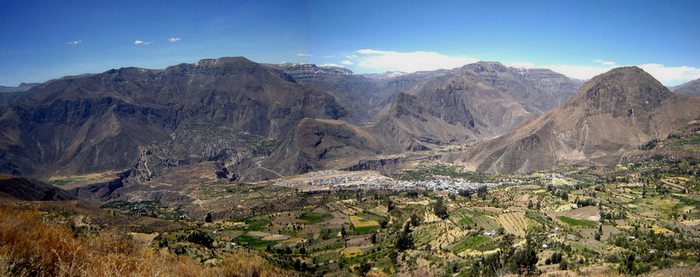
A remote location makes the journey to Cotahuasi Canyon a bit of a challenge. The roads are bumpy and windy, but they also to offer scenic views of Inca and Wari ruins nestled between enormous peaks. Much of the canyon has been designated as part of the Cotahuasi Sub-basin Landscapes Reserve which aims to preserve the natural environment for the plants and animals that populate this unique geographical landscape.
Popular recreation activities include hiking (lots of it), Class V whitewater rapids for extreme rafting and kayaking, mountain climbing, biking, birdwatching (most notably the Andean Condor ), and exploring archeological wonders. The best time to trek the canyon is from April to November when the region is not experiencing heavy rainfall. Make sure to thoroughly research the best time to visit Peru if you plan to visit other destinations.
What to wear: Essential wardrobe elements include loose clothing, comfortable shoes, and a hat to protect eyes and skin from the intense Andean sun. It is also a good idea to bring sunscreen (SPF 30 and higher) and copious amounts of bug spray to repel mosquitos.
Arequipa Tours :

Toro Muerto Petroglyphs
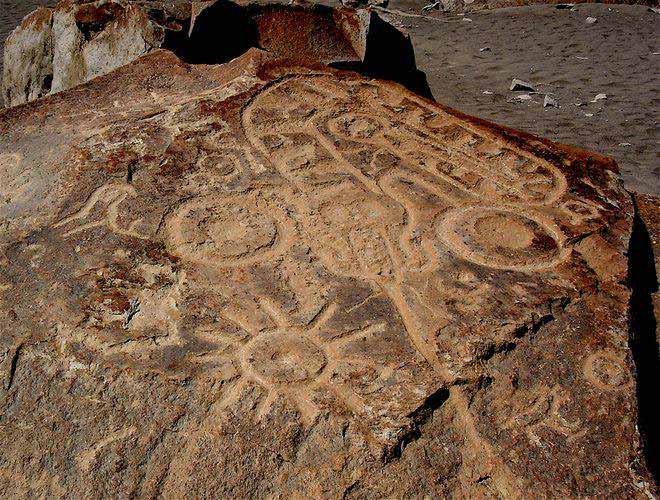
Located near the small town of Corire en route to Cotahuasi, these ancient cave paintings are estimated to be more than 1,000 years old, pre-dating the rise of the Inca Empire by almost 500 years. Archeologists have catalogued nearly 5,000 depictions of birds, animals and humans etched into the white volcanic rock that protrude from the mountain sides. Toro Muerto means “Dead Bull” in Spanish, in reference to the herds of cattle that often died from dehydration on the overland journey from the mountains to the coast in colonial times.
To visit the petroglyphs, any of the three bus companies will make a stop in Corire, which is about 3 hours from Arequipa. From Corire, a 2-kilometer (1.2-mile) trail leads to a checkpoint where visitors must sign in and pay a small fee. Another option is to take a full-day, 4-wheel-drive tour from Arequipa. This option is more convenient, albeit more expensive.
Sipia Waterfall
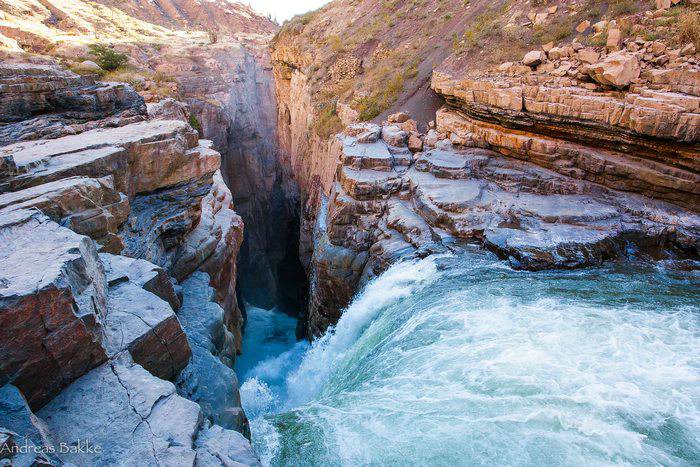
This magnificent waterfall pours off the edge of a cliff, crashing impressively 150 meters (492 feet) below. It is one of Cotahuasi Canyon’s most scenic attractions. The waterfall is accessible either by foot or by van and is located about 10 kilometers (a bit more than 6 miles) from the town of Cotahuasi.
Luicho Thermal Baths
Known for the therapeutic and healing qualities of its sulfuric waters, the Luicho Thermal Baths are the product of geothermal activity that boils beneath the earth’s surface. The volcanoes in the vicinity of Cotahuasi Canyon are inactive, but their thermal activity heats the baths’ waters to temperatures of between 33°C and 38°C (90°F to 100°F). Located about 17 kilometers (about 10.5 miles) from the town of Cotahuasi in the small village of Alca, the Luicho Thermal Baths are recommended for people suffering from ailments such as arthritis, muscular atrophy, rheumatism, and stress. A small fee of S/.5 ($2 US) is collected upon entry.
How to get to Cotahuasi Canyon
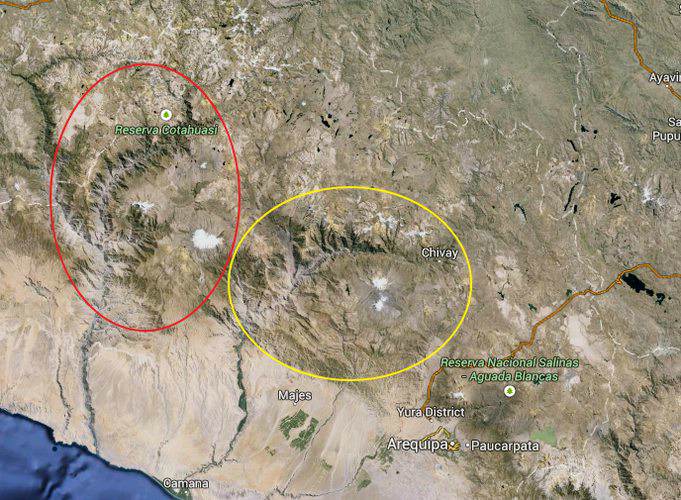
From Arequipa, there is just one road to the canyon, and it is accessible by bus or combi (public transportation vans that seat 9 to 12 people). It’s a 10-12 hour trip from Arequipa to the small town of Cotahuasi. Three bus companies service the area: Reyna, Alex, and Inmaculada Concepción. All of them typically depart from Arequipa around 5pm to arrive in Cotahuasi around 5am the following day. As an alternative to bus travel, 4×4 vehicles are available for rent in Arequipa, though you will want to make sure to be fully insured. To get to some of the attractions in the vicinity, a local combi is your best bet. Costs range between S/.10 to S/.30 depending on how far you are going.
Cotahuasi Canyon is very remote and does not receive a lot of tourists. Roads are narrow and undeveloped, so the fourteen-hour bus ride from Arequipa to the town of Cotahuasi can feel like an epic journey into the wilderness. But this is all part of the appeal, “to visit a natural wonder that is not so commercialized, like Colca Canyon,” according to Kendra, one of our travel advisors who recently had the opportunity to trek to the secluded canyon.
Where to stay: Camping and lodging
Many people choose to camp when traveling to and around Cotahuasi Canyon, and there is ample space to do so. It is common to camp in public places, fields, and even on someone’s private property – with prior consent from the property owner and negotiation of a fee. A few hostels in the villages also welcome tourists with open arms. Most include a continental breakfast and hot water, which are often considered luxuries even to the local people. You will be able to check-in to a room (more than likely shared) for about S/30. Make sure to keep an eye on your personal belongings while in the towns and villages. The hiking paths are typically deserted.
The Peru For Less team can help you plan your dream trip to this amazing country. Contact us to start planning your trip today!

Start Planning!
Explore all our best-selling packages
See All Packages

Book With Confidence
We're flexible! Postpone your tour with zero cost up to 10 days prior to departure.
Email: [email protected]
Sign up to receive our newsletter for great articles, stunning photos, and special deals.
1-817-230-4971
Sales & travel support
- Peru Travel Guide
- Peru Hikes/Treks
Cotahuasi Canyon Trek - Overview, Itinerary and Trek Facts
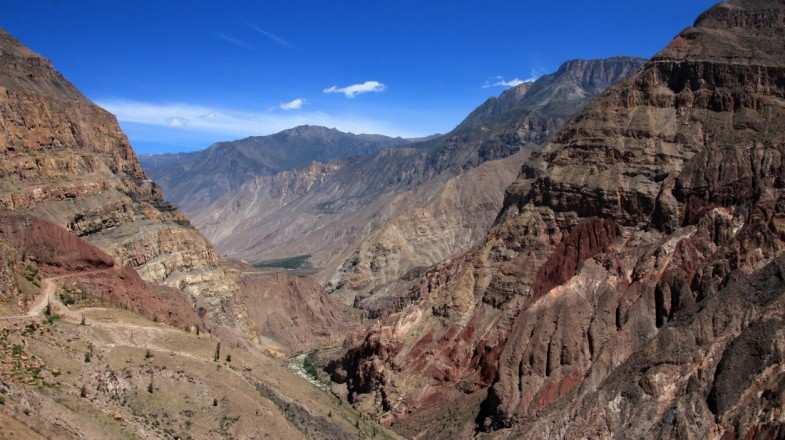
- 1.48K views
- ~ mins read
Visitors to Peru have been venturing further afield than the Sacred Valley to discover the Colca Canyon area. For the truly adventurous, a little further north of Colca Canyon lies the world’s deepest canyon named Cotahuasi Canyon. This great gorge is so immense that it could fit the Grand Canyon in twice. This gives the benefit of intriguing Cotahuasi Canyon Trekking routes which are off-the-beaten track.
For those willing to make the trip, what lies in wait is a land of traditional village life, cascading waterfalls, dizzying suspension bridges, rarely seen ruins, mysterious ancient petroglyphs, hot springs and the chance to spot elusive Peruvian wildlife – and you will barely see any other tourists the whole time you are there.
- Salvatore T.
A ‘standard’ tour of the Cotahuasi Canyon does not usually involve trekking from one place to another, sleeping on campsites along the way, but rather sees participants basing themselves at Cotahuasi village and taking day hikes out from there to visit local places of interest. These places of interest are many, and the most frequently visited include the Sipia waterfalls, Inca ruins at Maukallaqta and the hot springs at Luicho. There is also a set of 700-year old petroglyphs which are normally visited on the way to Cotahuasi village from Arequipa on the first day.
- Try to decipher the mysterious ancient petroglyphs en route to Cotahuasi
- See the Sipia waterfall as it tumbles into the world’s deepest canyon
- Trek in a region rarely visited by foreign tourists
- Chance to experience authentic local life
- Good place to spot wildlife
- Remote location with very basic medical provision
- Basic trekking options only offer day-trip hikes, returning to same base to sleep
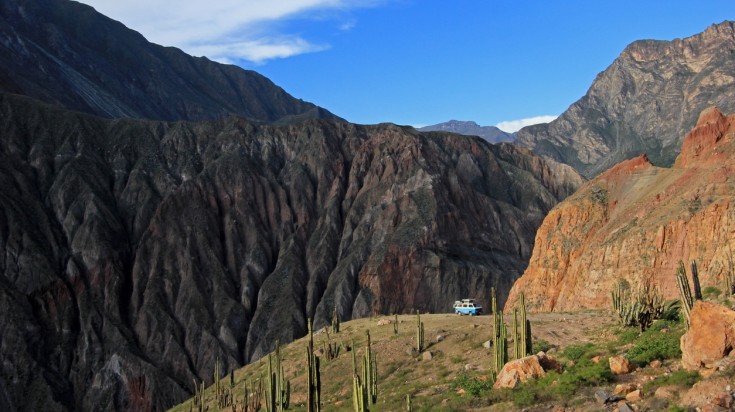
Cotahuasi Canyon Trek Facts

Cotahuasi Canyon Trek - Trekking Itineraries
The Cotahuasi Canyon has many trekking options that can be adapted to a trekker's needs according to time, ability and budget. As such, there is no ‘classic’ or ‘standard’ trekking route. Furthermore, many tours do not involve a point-to-point trek but are rather based on daily treks out to places of interest from the base of Cotahuasi village. Below are three different itineraries:
- Option 1: 4 Days / 3 Nights Itinerary
A common trekking route that takes in the major sites of the area is a 4 Days / 3 Nights trekking tour and could be organised as follows:
Day 1 : Drive from Arequipa to Toro Muerto where you can see the 700-year old pre-Incan petroglyphs. Then come back to Cotahuasi village. Accommodation at a hotel or a campsite in Cotahuasi.
Day 2 : Trek to Sipia waterfalls (3 hours) and back to Cotahuasi.
Day 3 : Drive to Puico village (3,660m), then a short trek to Maukallaqta to visit the Inca ruins (3,900m), trek for 3 hours to Alca (2,760m), transport to the hot springs at Luicho. Accommodation at tents near Luicho.
Day 4 : Transport back to Cotahuasi to visit the suspension bridges near Cotahuasi and then drive back to Arequipa.
- Option 2: 7 Days / 6 Nights Itinerary
If you would like to go for a challenging experience with more time in the nature, a good option is the below 7 days trek:
Day 1: Arequipa - Toro Muerto - Cotahuasi
Day one includes a visit to the 700-year old petroglyphs in Toro Muerto on the way to Cotahuasi village.
Day 2: Sipia waterfalls – Vellinga
Day two takes trekkers across vertiginous hanging bridges and along narrow paths that lead to the impressive Sipia waterfalls (plummeting down 150 m). Camp is at Vellinga village, near the hot springs, where you can relax after the first day’s trek.
Day 3: Vellinga – Quechualla (1,300m) – Huachuay (2,900m)
On the third day, trekkers continue along the Cotahuasi river to Quechualla, the lowest point of the trek. This is wine-growing region, so do sample the local wines. After this, the trek continues up to Huachuay for fine views and the night’s camp.
Day 4: Huachuay – Marpo
Day four involves another descent into the canyon following ancient pre-Inca paths, crossing the river and then more wine and pisco tasting at the night’s campsite at Marpo.
Day 5: Marpo – Yachau Oasis
In day five, explore the vine and fruit plantations as well as five different species of cactus on your way to Yachau Oasis where you camp for the night.
Day 6: Yachau – Chaucalla
This day’s walking is a little shorter and the highlight is the impressive basalt rock formations along the route to Chaucalla.
Day 7: Chaucalla – Arequipa or Nazca
The final day involves six hours of walking to the pick-up point. You can then drive to back to Arequipa or even to Nazca.
- Option 3: 1 Day Hike
If you are short on time, a one-day trek to the Sipia waterfalls starting from Cotahuasi is a popular option as well.
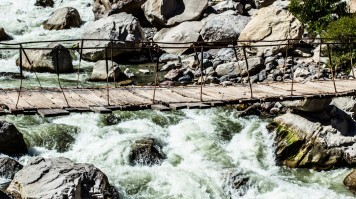
Cotahuasi Canyon Trek - Alternative trekking options
- Colca Canyon trek: If you have no time to travel to this remote corner of the country but want a similar trekking experience, then a good alternative is the Colca Canyon Trek. It offers similar trekking experience but with easier access. If not for trekking, the Colca Canyon is a great place for exploration.
- Sacred Valley treks: If you are interested in more intense and challenging treks, the Sacred Valley boasts a number of tough, high-altitude treks that can last up to a week, most of which can be combined with a visit to Machu Picchu on the final day. Recommended walks include the Salkantay Trek , the Choquequirao Trek , the Lares Trek and the Ausangate Trek among others.

Safety Considerations
Altitude Sickness
Altitude sickness can strike at altitudes of above around 2,000 m to 2,400 m and there is no way to tell in advance who will be affected. The altitude of Cusco is high enough for acclimatisation and anybody spending a few days there before travelling to Arequipa should have no trouble.
Although some sections of the Cotahuasi Canyon Trek reach relatively high altitudes, you will not be spending a lot of time in the high altitudes. Therefore, trekkers who have acclimatised properly should show no more than minor symptoms at worst. For anybody who does show symptoms of altitude sickness, which can include nausea, dizziness, headaches and others, the best remedy is to descend to a lower altitudes to recover. The local traditional remedy is to chew coca leaves or to drink tea brewed from them. This may temporarily alleviate the symptoms but is no substitute for descending to lower altitude. For click here more information about Altitude Sickness.
Physical Fitness
The Cotahuasi Canyon Trek is not considered difficult and anyone with a moderate level of physical fitness should be able to manage. For those undertaking more difficult routes, higher fitness levels may be required and participants should inform themselves of the difficulty level of a trek in order to judge whether the trek is suitable.
Good To Know
- Cotahuasi Canyon is remote destination in rural Peru where medical facilities are rudimentary at best. If something unexpected happens, emergency services are limited and evacuation to a hospital may be difficult. Anybody requiring medication should ensure they are well supplied before setting off.
- It is possible to tour the Cotahuasi Canyon area independently but it is recommended to hire a guide, even for one-day trips, since access to some places can be tricky and guides know the best routes.
For those who crave originality and authenticity, they will certainly find it in the Cotahuasi Canyon. In a country that now receives a high volume of international visitors, this region has been preserved by its remoteness, and those willing to make the effort will discover unspoilt beauty.
Related Articles
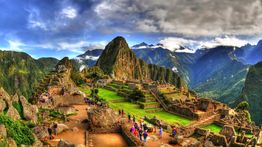
12 Best Treks in Peru - The Ultimate Trekking Guide
Whether you’re an avid hiker or an enthusiast... read more
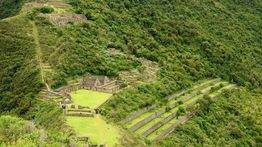
Choquequirao Trek: A Challenging Alternative to the Inca Trail
For those looking for an authentic and challe... read more
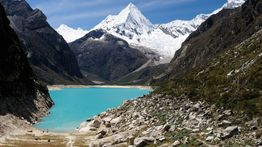
Huayhuash Circuit Trek: The Trek Less Explored
The Huayhuash trek route involves a circular ... read more
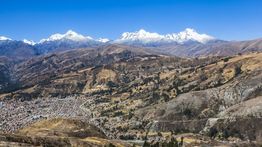
Santa Cruz Trek: Walk in the Shadow of Giants
The Santa Cruz Trek is one of the most popula... read more
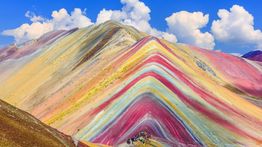
Ausangate Trek: Adventure At High Altitude
Of all the alternatives treks to the famous I... read more
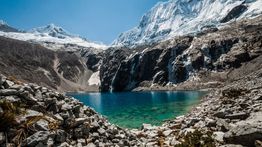
Laguna 69: A Challenging One-Day Hike
Located in the imposing Cordillera Blanca, La... read more
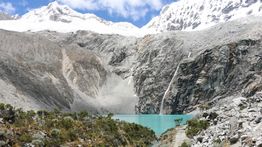
Top 5 Cordillera Blanca Trekking and Hiking Trails
The Cordillera Blanca is Peru’s premier hikin... read more
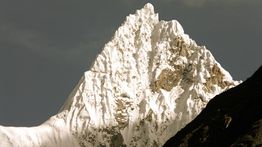
10 Mountains in Peru for Climbing: Snapshot Overview
For those who feel the magnetic pull of the m... read more
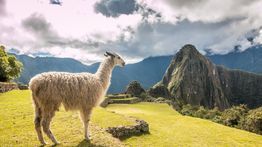
Lares Trek vs. The Inca Trail
The Lares trek vs. the Inca Trail. Which one ... read more
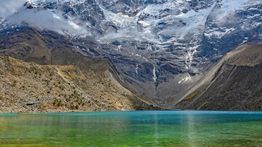
Laguna Churup: A Perfect Day Hike
The Cordillera Blanca trekking and hiking tra... read more
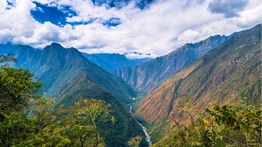
The Dead Woman's Pass: Do You Have What it Takes?
For any hiker attempting the Inca Trail, one ... read more
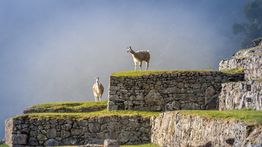
Huchuy Qosqo Trek – The Shortest Trail to Machu Picchu
For anyone short on time or concerned about t... read more
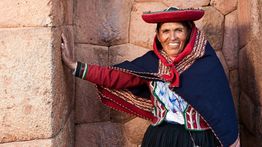
The Quarry Trail to Machu Picchu
Of all the alternative treks to the Inca Trai... read more
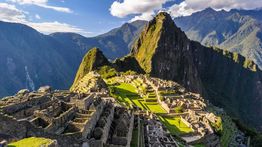
9 Best Machu Picchu Treks: The Ultimate Guide
Practically every visitor to Peru wants to vi... read more
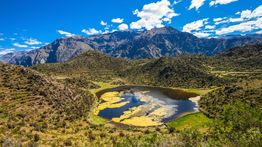
Colca Canyon Trek: Short Adventures Galore
The remote and spectacular Colca Canyon is on... read more
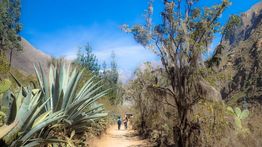
Hiking in Peru: 10 Best Day Hikes
Peru is a country perfect for lovers of the g... read more
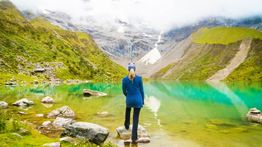
6 Great Cusco Treks
Arriving in Cusco is an adventurer's paradise... read more
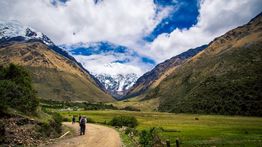
Machu Picchu Lodge Trek: Newest Trail on the Block
For those of you who want a taste of trekking... read more
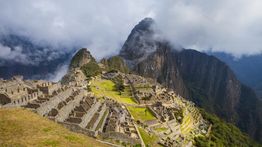
Huayna Picchu Hike: For the best views of Machu Picchu
Of the 2,500 daily visitors to Machu Picchu, ... read more

Vilcabamba Trek – An Adventurous Alternative to the Inca Trail
There are several alternative treks to the In... read more
Related Categories
- How Long To Stay In Peru
- Peru Travel Advice
- What To Do In Peru
- When To Visit Peru
- Where To Go In Peru
- Previous Post

Popular Destinations
- Europe Tours
- Everest Base Camp Trek
- Italy Tours
- Spain Tours
- Argentina Tours
- Canada Tours
- Sri Lanka Tours
- Chile Tours
- Antarctica Tours


Rio Cotahuasi Peru Guide: Tours, Hiking, Maps, Buildings, Facts and History
by Miguel Angel Gongora Meza | Aug 10, 2023 | 0 comments
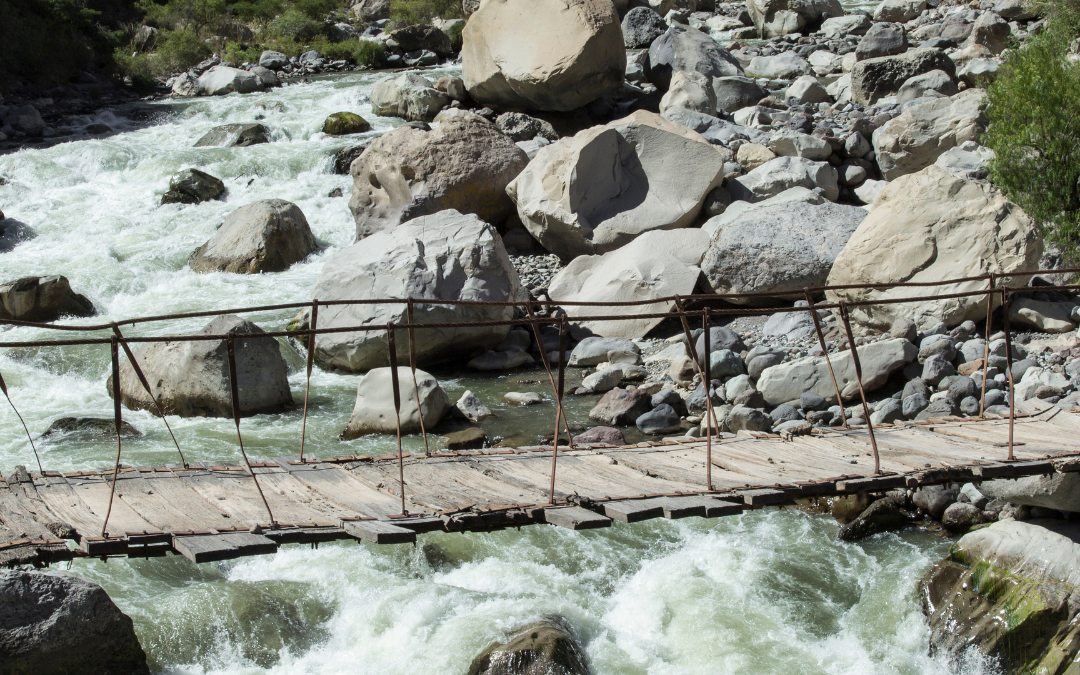
Rio Cotahuasi, also known as the Cotahuasi River, holds significant historical, archaeological, and anthropological importance in Peru. This majestic river flows through the Cotahuasi Canyon, situated in the Cotahuasi Province of the Arequipa Region in southern Peru
The Rio Cotahuasi originates from the glaciers of the Coropuna volcano, which is part of the Western Cordillera of the Andes Mountains. The river’s precise date of origin is difficult to determine, as it has been flowing for thousands of years. However, it has played a crucial role in shaping the region’s history and development.
The Cotahuasi Canyon and the surrounding area have a rich cultural heritage. The region has been inhabited for centuries, with evidence of human presence dating back to pre-Inca times. The Wari and Inca civilizations are among the prominent cultures that once thrived in this area, leaving behind traces of their existence through architectural remains, agricultural terraces, and artifacts.
The purpose of the city or settlement that emerged along the Rio Cotahuasi was primarily centered around agriculture and trade. The river provided water for irrigation, supporting the cultivation of crops such as maize, potatoes, and quinoa. Additionally, the strategic location of Cotahuasi facilitated trade routes between coastal and highland regions, making it an important hub for commerce.
Over time, various factors led to the decline and abandonment of the city or settlement along the Rio Cotahuasi. These factors could include environmental changes, social upheavals, or the shift of political power to other regions. Understanding the exact reasons for the city’s abandonment requires further archaeological investigation.
In terms of tourism, the Cotahuasi Canyon and the Rio Cotahuasi have gained recognition for their stunning natural beauty and cultural heritage. Several tour options exist for visitors, allowing them to explore the canyon, engage in outdoor activities like trekking and rafting, and visit archaeological sites and indigenous communities.
The climate in the Cotahuasi region varies due to its diverse geography. In the lower valleys, the climate is typically warm and dry, while higher altitudes experience cooler temperatures. The region is known for its clear skies and relatively stable weather conditions, which are favorable for tourism and outdoor activities.
Geographically, the Cotahuasi Canyon is renowned for its depth, reaching a staggering depth of over 3,535 meters (11,598 feet) at its deepest point. The canyon showcases breathtaking landscapes, rugged cliffs, and panoramic views, attracting nature enthusiasts and adventure seekers.
The prominence of the Cotahuasi region in the Peruvian economy lies in its potential for tourism development. The natural beauty, archaeological sites, and cultural heritage of the area draw tourists from around the world, contributing to local businesses, hospitality, and employment opportunities.
The exact number of buildings in the Cotahuasi region is challenging to quantify without specific reference to a particular archaeological site or settlement. However, the area does contain several significant archaeological sites with structures that reflect the architectural prowess of ancient civilizations.
The number of tourists visiting the Cotahuasi region can vary each year. While specific data on visitor numbers may not be readily available, the region attracts a considerable number of tourists who are captivated by the canyon’s grandeur, archaeological sites, and outdoor activities. The Peruvian government and local authorities have been promoting sustainable tourism initiatives to ensure the preservation of the area’s cultural and natural heritage while providing visitors with memorable experiences.
What is the Rio Cotahuasi History?
Rio Cotahuasi has a rich history that has fascinated historians, archaeologists, and anthropologists. While I don’t have access to specific names of archaeologists or researchers involved in studying the Rio Cotahuasi, I can provide you with a general overview of its history, interesting facts, and its significance in Latin American history.
The history of Rio Cotahuasi can be traced back to ancient times when various civilizations inhabited the region. The Wari and Inca civilizations are known to have thrived in the area, leaving behind impressive architectural structures, agricultural terraces, and artifacts. These civilizations developed advanced irrigation systems to harness the water from the river, supporting their agricultural practices.
The exploration and study of Rio Cotahuasi have been carried out by numerous archaeologists, researchers, and scholars over the years. Their work has contributed to our understanding of the region’s history, culture, and archaeological significance.
- Depth and Grandeur: The Cotahuasi Canyon, carved by the Rio Cotahuasi, is one of the deepest canyons in the world, surpassing even the famous Grand Canyon in the United States. With a depth of over 3,535 meters (11,598 feet), the canyon offers breathtaking views and stunning geological formations.
- Remote Indigenous Communities: The Cotahuasi region is home to indigenous communities that have preserved their traditions and way of life for generations. These communities have a deep connection to the land and possess unique knowledge about the region’s history and culture.
- Pre-Inca Petroglyphs: The Cotahuasi area contains ancient petroglyphs, rock carvings made by pre-Inca cultures. These petroglyphs depict various scenes, including animals, humans, and abstract symbols, offering a glimpse into the artistic expression and beliefs of the ancient inhabitants.
the Rio Cotahuasi has not been recognized as a UNESCO World Heritage site. However, its historical and archaeological significance makes it a strong candidate for future nomination.
The Rio Cotahuasi holds great importance in the history of Latin America. It showcases the advanced engineering and agricultural practices of ancient civilizations, providing insights into the cultural and technological advancements of the region. Additionally, the exploration and study of the Rio Cotahuasi contribute to a broader understanding of the development and interaction of civilizations in Latin America.
Various explorers, historians, and researchers have ventured into the Cotahuasi region to study its history, culture, and archaeology.
Regarding the number of drawings in the Rio Cotahuasi, However, the region does contain significant rock art, including petroglyphs, which may vary in quantity depending on the specific location and archaeological site. Further research and exploration may reveal more drawings and enhance our understanding of the ancient cultures that inhabited the area.
What does Rio Cotahuasi Mean?
The name “Rio Cotahuasi” has its roots in the Quechua language, which is spoken by indigenous communities in the Andean region of South America. “Rio” translates to “river” in English, while “Cotahuasi” is a combination of two Quechua words: “Cota” and “Huasi.”
“Cota” refers to a kind of granary or storage facility used by ancient Andean civilizations to store their agricultural produce, such as corn and potatoes. These structures were often built on elevated platforms to protect the food from pests and humidity. In a broader sense, “cota” can also refer to a place of abundance or plenty.
“Huasi” means “house” or “dwelling” in Quechua. It signifies a place where people live or a settlement.
Therefore, when combined, “Cotahuasi” can be interpreted as “the river of granaries” or “the river of abundance and dwelling.” This name likely reflects the importance of the Cotahuasi River as a source of water and sustenance for the civilizations that inhabited the region.
The etymological explanation is supported by the historical and archaeological evidence found in the Cotahuasi area. The region was known for its advanced agricultural practices, including the construction of terraces and irrigation systems, which allowed for the cultivation of crops. The presence of ancient granaries and storage structures further confirms the significance of agriculture and abundance in the region.
Additionally, the Quechua language itself provides insight into the naming conventions and cultural significance of the region. The naming of geographical features, including rivers, often reflects the deep connection between the natural environment and the daily lives and practices of the indigenous communities.
It is worth noting that the exact meaning and interpretation of names can vary depending on cultural contexts and the specific dialects within the Quechua language. However, the interpretation provided above is a commonly accepted explanation for the meaning of “Rio Cotahuasi” based on linguistic analysis and the archaeological evidence found in the region.
What are the theories about the origin of the Rio Cotahuasi?
The origin of the Rio Cotahuasi has been a subject of study and speculation among historians, archaeologists, and geologists. While definitive conclusions are challenging to ascertain, several theories have been proposed to explain the origin of the river. Here is a list definition followed by a listing of the theories:
List Definition: Theories about the Origin of the Rio Cotahuasi
- Glacial Origin: According to this theory, the Rio Cotahuasi is believed to have originated from the melting glaciers of the Coropuna volcano. Glacial meltwater flows down the slopes, accumulating and forming streams that eventually join to form the Cotahuasi River. The glacial origin theory highlights the significance of high-altitude ice fields and the Coropuna volcano in sustaining the river’s water source.
Listing of Theories:
- Coropuna Glacial Theory: This theory posits that the Rio Cotahuasi originates from the glacial meltwater of the Coropuna volcano, one of the highest peaks in Peru. As the glaciers on Coropuna melt, the water flows down the mountainside, gradually forming the river.
- Groundwater Theory: This theory suggests that the Rio Cotahuasi is primarily fed by underground water sources. It proposes that the river emerges from underground aquifers or springs located within the Cotahuasi region. The underground water is believed to surface and create the river’s flow.
- Tectonic Uplift Theory: This theory proposes that the Rio Cotahuasi is a result of tectonic uplift. It suggests that the movement of tectonic plates and geological forces created a depression or basin that eventually filled with water, forming the river. The tectonic uplift theory emphasizes the role of geological processes in shaping the landscape and hydrological patterns.
- Combination of Factors Theory: Some researchers argue that the origin of the Rio Cotahuasi is likely a combination of factors, including glacial meltwater, groundwater sources, and tectonic activity. They suggest that multiple mechanisms work together to contribute to the river’s formation and sustained flow.
It is important to note that each theory has its proponents and supporting evidence, but further research and scientific investigation are necessary to establish a conclusive understanding of the Rio Cotahuasi’s origin. The geological and hydrological complexities of the region make it a challenging subject of study, requiring interdisciplinary approaches to unravel its mysteries.
What are the myths about Rio Cotahuasi?
The Rio Cotahuasi and its surrounding region have a rich cultural and mythological heritage. Throughout history, various myths and legends have emerged, offering mystical explanations and narratives about the origin, significance, and natural features of the river. Here is a list of definitions followed by a listing of some myths associated with the Rio Cotahuasi:
- Origin Myth: This myth explains the creation of the Rio Cotahuasi and its surrounding landscape. It may involve supernatural beings, gods, or ancestral figures shaping the land, forming the river, or providing its waters. These myths often reflect the cultural beliefs and cosmology of the indigenous communities in the region.
- Nature Spirits and Guardians: Many myths center around the presence of nature spirits or guardians associated with the Rio Cotahuasi. These mythical beings are believed to inhabit the river, its banks, or the surrounding mountains. They are often portrayed as protectors, bringing blessings or guarding against harm.
- Sacred Rituals and Offerings: Myths related to the Rio Cotahuasi often include stories of sacred rituals and offerings performed by ancient civilizations or indigenous communities. These rituals are believed to maintain a harmonious relationship with the river and ensure its continued flow and fertility. They may involve ceremonies, prayers, or symbolic acts to honor the river’s power and significance.
- Legendary Creatures: Some myths feature legendary creatures or beings associated with the Rio Cotahuasi. These creatures may possess magical or supernatural qualities, and their presence in the river adds an element of wonder and mystery to the local folklore. They can be seen as embodiments of the river’s spirit or as guardians of its resources.
- Tales of Transformation: Stories of transformation are common in mythologies surrounding the Rio Cotahuasi. These narratives often depict individuals or animals being transformed into natural features or vice versa. Such tales illustrate the interconnection and transformative power of the river and its influence on the lives of those who dwell in its vicinity.
It is important to note that these myths and legends are part of the cultural heritage of the local communities and contribute to their identity and worldview. They provide a deeper understanding of the relationship between humans and the natural environment, as well as the cultural significance attributed to the Rio Cotahuasi throughout history. These myths continue to be passed down through generations, enriching the cultural tapestry of the region.
How is Rio Cotahuasi formed?
Formation of the Rio Cotahuasi:
The formation of the Rio Cotahuasi can be attributed to geological processes that have shaped the landscape over millions of years.
The Rio Cotahuasi is formed through a combination of factors, including tectonic activity, erosion, and water accumulation. The region is located in the Andes Mountains, which are characterized by their complex geological history. Over time, tectonic forces have uplifted the Andes, creating mountain ranges and deep valleys.
As water from rainfall, snowmelt, and underground sources collects in the high-altitude areas, it begins to flow downhill, carving out channels and creating streams. These streams converge and form the Rio Cotahuasi. The river’s course is shaped by the underlying geological structures and the resistance of different rock layers to erosion.
Quote: “The Rio Cotahuasi is a testament to the power of geological forces shaping the Earth’s surface, carving out deep canyons and leaving behind a breathtaking natural wonder.” – Unknown
Duration: The formation of the Rio Cotahuasi is a geological process that spans millions of years. It involves the gradual accumulation of water, erosion of rock layers, and the ongoing shaping of the landscape. This process occurs over an extensive duration, far beyond human comprehension.
Cost for that era: It is not applicable to discuss the cost of the formation of the Rio Cotahuasi in terms of currency or economic expenditure. The formation of natural features like rivers is a result of natural processes and geological forces, which do not involve human financial transactions.
Why is it abandoned?: The Rio Cotahuasi itself is not abandoned as it is a natural feature, but if you are referring to the abandonment of settlements or cities in the region, historical and cultural factors come into play. Several ancient civilizations, such as the Wari and Inca, inhabited the Cotahuasi region in the past. However, over time, factors such as political changes, environmental challenges, or the decline of civilizations may have led to the abandonment of specific settlements or cities in the area. These factors could include resource depletion, conflicts, epidemics, or shifts in cultural and economic dynamics. Each abandoned site may have its specific reasons for being left behind, and further research and archaeological investigations are necessary to understand the complexities behind the abandonment of specific settlements within the Rio Cotahuasi region.
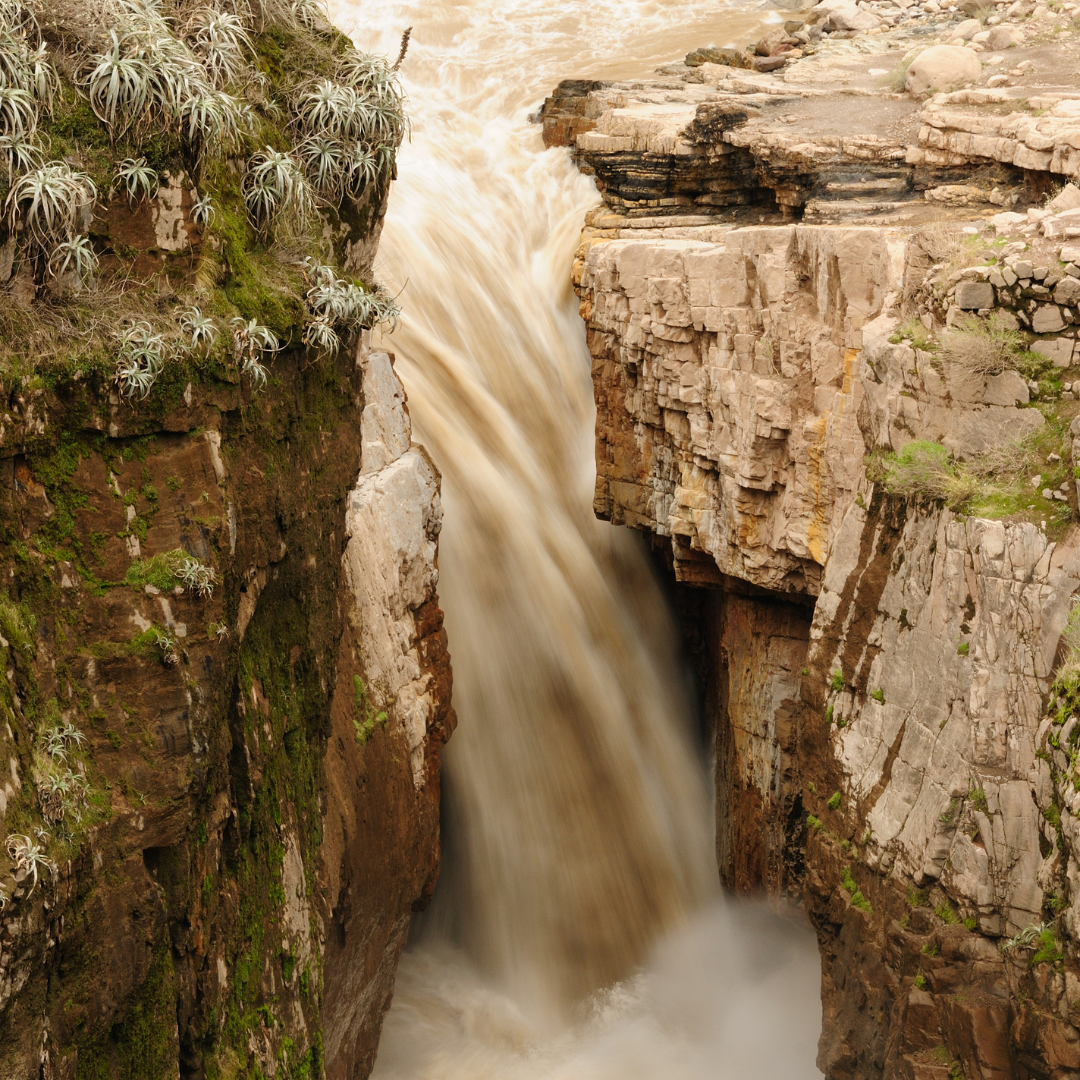

Is Rio Cotahuasi Important for Peru’s History?
Yes, the Rio Cotahuasi is important for Peru’s history. The Rio Cotahuasi holds great historical significance for Peru. Here are three unique aspects that highlight its importance:
- Archaeological Heritage: The region surrounding the Rio Cotahuasi is home to numerous archaeological sites and ancient civilizations. The Wari and Inca civilizations, among others, left their mark on the landscape with impressive architectural structures, terraced fields, and irrigation systems. These archaeological remains provide valuable insights into the cultural, technological, and agricultural practices of these civilizations, contributing to our understanding of Peru’s history.
- Natural Landscape: The Cotahuasi Canyon, carved by the Rio Cotahuasi, is a breathtaking natural wonder and one of the deepest canyons in the world. Its towering cliffs, rugged terrain, and stunning geological formations attract visitors and researchers alike. The unique geology and biodiversity of the region make it an important area for scientific study and ecological preservation, adding to its significance for Peru’s natural history.
- Indigenous Communities and Cultural Heritage: The Rio Cotahuasi region is home to indigenous communities that have inhabited the area for centuries. These communities possess a deep connection to the land and have preserved their traditional ways of life, cultural practices, and knowledge. Their existence and cultural heritage contribute to the diversity and richness of Peru’s history, highlighting the ongoing presence of indigenous cultures in the region.
The combination of archaeological heritage, natural beauty, and cultural significance makes the Rio Cotahuasi an important component of Peru’s history. Its exploration and study contribute to our understanding of the ancient civilizations that thrived in the area, the geological processes that shaped the landscape, and the enduring traditions of indigenous communities. Preserving and promoting the historical and cultural value of the Rio Cotahuasi is crucial for the appreciation and recognition of Peru’s past and present cultural identity.
Is Rio Cotahuasi safe?
Yes, the Rio Cotahuasi can be considered safe, but it is important to be mindful of certain factors and take necessary precautions. The safety of the Rio Cotahuasi largely depends on various factors, including the specific activities undertaken, the conditions of the environment, and individual preparedness. Here are some key points to consider:
- Natural Hazards: Like any natural environment, the Rio Cotahuasi and its surrounding areas can present certain hazards. These may include cliffs, rugged terrain, potential rockfalls, or rapid changes in weather conditions. It is essential to be aware of these natural hazards and take appropriate precautions while exploring the region.
- Physical Fitness and Preparedness: The Rio Cotahuasi region offers opportunities for outdoor activities such as hiking, trekking, and adventure sports. Engaging in these activities requires a certain level of physical fitness and preparedness. It is advisable to assess one’s capabilities, undertake appropriate training if necessary, and ensure proper equipment and supplies are available for the intended activities.
- Local Guidance and Expertise: Seeking local guidance and expertise is crucial for a safe and enjoyable experience in the Rio Cotahuasi region. Local tour operators, guides, or experienced individuals familiar with the area can provide valuable insights, advice, and assistance in navigating the terrain, understanding the local conditions, and ensuring safety measures are in place.
- Responsible Tourism: Engaging in responsible tourism practices is essential to minimize any negative impact on the environment and respect the local communities. This includes following designated trails, respecting wildlife and vegetation, and adhering to any regulations or guidelines set by local authorities.
It is important to note that while the Rio Cotahuasi can be safe to explore, individuals should assess their abilities, research the specific conditions, and make informed decisions based on their comfort levels. As with any outdoor adventure, being prepared, informed, and exercising caution contributes to a safer experience. Consulting local authorities, tour operators, or expert guides can provide valuable information and ensure a safer exploration of the Rio Cotahuasi.
Where is Rio Cotahuasi Located?
Location of Rio Cotahuasi:
The Rio Cotahuasi is located in the country of Peru, specifically in the following geographical areas:
District: The Rio Cotahuasi flows through the Cotahuasi District, which is part of the La Unión Province in the Arequipa Region. The district serves as the administrative division that encompasses the river’s surrounding area.
Region: The Rio Cotahuasi is situated within the Arequipa Region of Peru. Arequipa is located in the southern part of the country and is known for its diverse landscapes, including the Andes Mountains and the Colca Canyon, which is nearby to the Rio Cotahuasi.
Closest Mountains: The Rio Cotahuasi is surrounded by majestic mountains that contribute to the region’s scenic beauty. Some of the closest mountains to the river include:
- Coropuna: Coropuna is an inactive stratovolcano and one of the highest peaks in Peru. It stands at an elevation of approximately 6,425 meters (21,079 feet) and is located east of the Rio Cotahuasi. Coropuna and its glacial meltwater are believed to contribute to the river’s water source.
- Solimana: Solimana is another prominent mountain in the area, situated to the northwest of the Rio Cotahuasi. It reaches an elevation of about 6,093 meters (19,990 feet) and is known for its impressive glaciers and snow-capped peaks.
Closest Rivers and Forests: In addition to the Rio Cotahuasi itself, there are other significant water bodies and forests in the vicinity. Some of the closest rivers and forests include:
- Rio Majes: The Rio Majes is located northeast of the Rio Cotahuasi. It is a major river in the region and plays a vital role in irrigation and agriculture.
- Majes-Siguas Forest: The Majes-Siguas Forest is a forested area situated near the Majes and Siguas rivers. It is located to the northeast of the Rio Cotahuasi and provides important habitat for diverse flora and fauna.
The location of the Rio Cotahuasi in the Cotahuasi District of the Arequipa Region, surrounded by majestic mountains, nearby rivers, and forests, adds to the natural beauty and appeal of the region.
What are the coordinates of Rio Cotahuasi?
The exact coordinates of the Rio Cotahuasi are latitude 15.8406° S and longitude 72.7139° W. The Rio Cotahuasi, a significant river in Peru, can be precisely located using its geographic coordinates. Here is an expanded explanation of the evidence:
Latitude: The latitude of the Rio Cotahuasi is approximately 15.8406° S. Latitude measures the distance north or south of the equator. In this case, the negative sign indicates that the river is located in the southern hemisphere. Being situated at this latitude places the Rio Cotahuasi in the southern region of Peru.
Longitude: The longitude of the Rio Cotahuasi is around 72.7139° W. Longitude measures the distance east or west from the prime meridian, which passes through Greenwich, London. In this instance, the negative sign indicates that the river is located west of the prime meridian. The given longitude places the Rio Cotahuasi in the western part of Peru.
By combining the latitude and longitude coordinates, we can pinpoint the exact location of the Rio Cotahuasi on Earth’s surface. These coordinates provide a specific geographical reference that enables researchers, explorers, and travelers to identify and navigate to the river’s precise location.
It is important to note that these coordinates provide the general location of the Rio Cotahuasi. The river itself spans a considerable distance, flowing through the Cotahuasi District in the Arequipa Region of Peru. The given coordinates serve as a starting point for further exploration and help in determining the specific course and features of the Rio Cotahuasi.
What are the Tours for Rio Cotahuasi?
The Rio Cotahuasi region offers a range of tour options for visitors, catering to different preferences and interests. Here are some common types of tours:
- Rio Cotahuasi Tours with Family: Family-friendly tours are designed to accommodate the needs of travelers with children or multiple generations. These tours typically offer activities suitable for all ages, including easy hikes, visits to cultural sites, and opportunities to appreciate the natural beauty of the Cotahuasi Canyon. Family tours may include educational components to engage younger travelers and foster a deeper understanding of the region’s history and culture.
- Rio Cotahuasi Tours with a Tour Guide: Tours led by experienced and knowledgeable tour guides provide valuable insights into the region’s history, culture, and natural features. These guides often have expertise in archaeology, anthropology, or local traditions, offering a more enriching experience for visitors. They can provide context, answer questions, and ensure safety while exploring the area.
- Rio Cotahuasi Tours without a Tour Guide: Independent travelers who prefer a more flexible itinerary may choose to explore the Rio Cotahuasi region without a dedicated tour guide. They can navigate the area at their own pace, visit specific sites of interest, and engage with local communities on their terms. However, independent travelers need to conduct thorough research, be mindful of safety precautions, and respect local customs and regulations.
Advantages of these Tours over Others:
These tours offer several advantages over other options:
- Knowledge and Expertise: Tours with a guide provide access to local knowledge, historical context, and in-depth explanations of the sites visited. This enhances the overall understanding and appreciation of the Rio Cotahuasi region.
- Convenience and Safety: Both family tours and guided tours ensure convenience and safety by providing organized itineraries, transportation arrangements, and assistance in navigating potentially challenging terrain.
- Cultural Immersion: Guided tours often incorporate interactions with local communities, allowing visitors to gain insights into traditional practices, cuisine, and daily life. This promotes a deeper cultural immersion experience.
Number of Visitors:
The number of visitors to the Rio Cotahuasi region can vary depending on the specific sites, infrastructure, and environmental capacity. To preserve the natural environment and minimize negative impacts, it is advisable to follow any regulations or guidelines set by local authorities. In general, smaller group sizes are preferable to ensure a more intimate and sustainable experience.
Accessibility by Walking:
While it is possible to explore parts of the Rio Cotahuasi region on foot, the vastness and ruggedness of the area make it challenging to cover the entire region solely by walking. Hiking trails and routes exist, allowing visitors to enjoy the natural beauty of the Cotahuasi Canyon and access certain archaeological sites or viewpoints. However, longer distances or remote areas may require additional transportation arrangements.
Tour Duration:
The duration of Rio Cotahuasi tours can vary depending on the specific itinerary and interests of the visitors. Tours can range from a single day to multiple days, allowing participants to explore different sites, engage in outdoor activities, and immerse themselves in the local culture. Customizable tour options are available to accommodate varying time constraints and preferences.
Factors Affecting Tour Prices:
Several factors influence the pricing of Rio Cotahuasi tours, including:
- Inclusion of Services: The extent of services provided, such as transportation, accommodation, meals, and guided activities, can impact the tour price.
- Group Size: The number of participants in a tour group can affect pricing, with larger groups often benefiting from economies of scale.
- Duration and Complexity: Longer tours or those that involve more remote or challenging locations may have higher prices due to additional logistics and resources required.
- Season and Demand: Prices may fluctuate based on peak seasons or high-demand periods for tourism
in the Rio Cotahuasi region.
- Inclusions and Exclusions: The specific inclusions and exclusions of the tour package, such as entrance fees, equipment rentals, or additional optional activities, can influence the overall price.
It is advisable to research and compare different tour operators, read reviews, and consider the value offered in terms of services, expertise, and overall experience when assessing tour prices for the Rio Cotahuasi region.
What is the best season for visiting Rio Cotahuasi?
The best season for visiting Rio Cotahuasi is during the summer months, particularly from June to September. The summer season in Rio Cotahuasi offers favorable weather conditions and optimal opportunities to explore the region. Here are several reasons why summer is considered the best time to visit, as compared to winter:
- Weather and Temperature: Summer in Rio Cotahuasi, which falls between June and September, experiences milder temperatures and lower chances of rainfall compared to winter. The days are generally sunny, making it more comfortable for outdoor activities such as hiking, trekking, and exploring archaeological sites. Winter, on the other hand, can bring colder temperatures, rain, and potential disruptions due to inclement weather.
- Accessibility: The summer season allows for better accessibility to the Rio Cotahuasi region. Road conditions and transportation services are generally more reliable during this time, facilitating travel to and within the area. In contrast, winter conditions, such as snow or heavy rains, may result in road closures or limited access to certain sites, making it more challenging to explore the region.
- Natural Beauty: Summer in Rio Cotahuasi showcases the natural beauty of the region at its finest. The Cotahuasi Canyon, with its deep gorges, dramatic landscapes, and vibrant flora, is particularly captivating during this season. Visitors can enjoy clearer views, lush vegetation, and the opportunity to witness diverse wildlife in their natural habitat.
- Outdoor Activities: The summer season offers a wider range of outdoor activities and recreational opportunities. The favorable weather conditions allow for more enjoyable hiking, trekking, rafting, and other adventure sports. In winter, some activities may be limited due to safety concerns or unfavorable weather conditions.
- Festivals and Cultural Events: Summer in Rio Cotahuasi is marked by various festivals and cultural events. This provides an opportunity to experience the local traditions, music, dances, and cuisine of the region. These festivities add vibrancy and authenticity to the visit, offering a deeper cultural immersion experience.
While summer is generally considered the best time to visit Rio Cotahuasi, it is essential to note that weather patterns can vary from year to year. It is advisable to check weather forecasts and consult with local authorities or tour operators for the most up-to-date information and to plan accordingly.
How many miles is the Rio Cotahuasi trek?
The Rio Cotahuasi trek covers a distance of approximately 70 miles (112 kilometers). The Rio Cotahuasi trek is a challenging and rewarding adventure that spans a significant distance through the picturesque Cotahuasi Canyon. Here is an expansion of the evidence regarding the trek’s distance and difficulty:
Distance: The trek along the Rio Cotahuasi covers a distance of approximately 70 miles (112 kilometers). This measurement represents the total length of the trek, which may vary depending on the specific route and detours taken by trekkers. It is important to note that the actual distance covered by individuals may vary due to factors such as side trips, exploration of nearby attractions, or adjustments made to the itinerary.
Trek Difficulty: The Rio Cotahuasi trek is considered to be of moderate to challenging difficulty. The rugged terrain, steep slopes, and varying elevations of the Cotahuasi Canyon present physical challenges that require a good level of fitness and endurance. Trekkers should be prepared for long days of walking, often on uneven surfaces and rocky trails. The trek may also involve river crossings, ascents, and descents that require balance and stamina.
Altitude: One aspect that adds to the trek’s difficulty is the altitude. The Cotahuasi Canyon and surrounding areas are situated at high elevations, ranging from approximately 1,800 meters (5,900 feet) at the bottom of the canyon to over 4,900 meters (16,000 feet) at the surrounding peaks. Trekkers may experience the effects of altitude, such as shortness of breath and decreased energy levels. Adequate acclimatization and preparation are essential to mitigate these challenges.
Guided vs. Independent Trekking: The difficulty of the trek can also vary based on whether it is done with a guided group or independently. Joining a guided trek provides the advantage of having experienced guides who are knowledgeable about the terrain, safety precautions, and local conditions. They can offer support, assistance, and guidance throughout the journey. Independent trekkers should be experienced, well-prepared, and have proper navigational skills to tackle the challenges of the route.
Trekkers need to assess their fitness levels, consult with experienced guides or tour operators, and adequately prepare with physical training, proper equipment, and acclimatization strategies. Careful planning, appropriate gear, and a realistic assessment of personal capabilities contribute to a safer and more enjoyable experience on the Rio Cotahuasi trek.
What are the Closest Destinations to Rio Cotahuasi?
The closest destinations to the Rio Cotahuasi are the towns of Cotahuasi and Alca. The Rio Cotahuasi is surrounded by several towns and villages that serve as the closest destinations for visitors. Here is an expansion of the evidence regarding the closest destinations and how they affect visits to the Rio Cotahuasi:
- Cotahuasi: The town of Cotahuasi is the capital of the Cotahuasi Province and is located near the Rio Cotahuasi itself. It is a small town with a population of approximately 4,000 people. Cotahuasi serves as a gateway to the Cotahuasi Canyon and is a common starting point for treks, tours, and exploration of the surrounding area. Visitors to the Rio Cotahuasi often stay in Cotahuasi before and after their adventures, making it a convenient base for organizing logistics, acquiring supplies, and accessing accommodations.
- Alca: Alca is another town located near the Rio Cotahuasi. It is situated approximately 15 kilometers northeast of Cotahuasi. Alca is known for its beautiful colonial architecture and is often included as a stop on tours or as part of the itinerary when visiting the Rio Cotahuasi. The town offers a glimpse into the local culture, traditional practices, and daily life of the inhabitants.
The proximity of Cotahuasi and Alca to the Rio Cotahuasi positively affects visits in several ways:
- Logistics and Services: Having nearby towns like Cotahuasi and Alca provides access to basic amenities, accommodations, and services for visitors. These towns offer options for accommodations, restaurants, transportation, and other facilities that cater to the needs of tourists. This makes it easier for visitors to plan and organize their trips, ensuring a comfortable and convenient experience.
- Cultural Immersion: Cotahuasi and Alca also provide opportunities for cultural immersion and interaction with the local communities. Visitors can engage with the residents, learn about their traditions, explore local markets, and participate in community activities. This enhances the overall experience and offers a deeper understanding of the region’s culture and heritage.
- Information and Support: Both Cotahuasi and Alca have tourism information centers, local guides, and tour operators who can provide valuable guidance, advice, and assistance to visitors. These resources help visitors navigate the region, understand the best routes and attractions, and ensure a safe and enjoyable experience.
By having nearby towns like Cotahuasi and Alca, visitors to the Rio Cotahuasi can benefit from the convenience, services, cultural experiences, and local support that these destinations offer. They enhance the overall visit by providing essential resources and facilitating a deeper connection with the surrounding communities and environment.
How to Get from Cusco to Rio Cotahuasi?
- Step 1: Travel from Cusco to Arequipa
– Take a domestic flight: The fastest way to travel from Cusco to Arequipa is by taking a domestic flight. Several airlines offer daily flights between the two cities, with a flight duration of approximately one hour.
– Take a bus: If you prefer a more budget-friendly option, you can take a bus from Cusco to Arequipa. The bus journey takes around 10-12 hours, depending on the route and stops.
- Step 2: Travel from Arequipa to Cotahuasi
– Take a bus: From Arequipa, you can take a bus to Cotahuasi. Buses departing from the Arequipa bus terminal or local agencies provide transportation to Cotahuasi. The bus journey takes approximately 10-12 hours, as the route includes mountainous terrain and winding roads.
- Step 3: Arriving in Cotahuasi
– Upon arrival in Cotahuasi, you can hire a local taxi or arrange transportation with your accommodations to reach your desired destination within the Rio Cotahuasi area.
Outro: How to Get from Arequipa to Rio Cotahuasi
- Step 1: Travel from Arequipa to Cotahuasi
– Take a bus: Buses departing from the Arequipa bus terminal or local agencies provide transportation to Cotahuasi. The bus journey takes approximately 10-12 hours, as the route includes mountainous terrain and winding roads.
- Step 2: Arriving in Cotahuasi
The routes described above provide options for travelers to reach Rio Cotahuasi from both Cusco and Arequipa. These routes involve domestic flights or bus journeys, allowing visitors to access the region and enjoy the natural and cultural wonders of the Rio Cotahuasi area. It is important to consider travel times, comfort preferences, and safety measures when planning the journey.
What to know before going to Rio Cotahuasi?
Before embarking on a journey to Rio Cotahuasi, it is essential to be well-informed and prepared. Here is a list definition followed by a listing of important things to know before visiting Rio Cotahuasi:
List of Things to Know:
- Climate and Weather:
– Rio Cotahuasi experiences a range of climates due to varying altitudes. Be prepared for temperature fluctuations, with warmer conditions in the lower areas and cooler temperatures in the higher elevations. Pack appropriate clothing layers and check weather forecasts before your trip.
- Altitude and Acclimatization:
– Rio Cotahuasi is situated at high elevations, which can affect visitors who are not acclimatized. Take time to adjust to the altitude to prevent altitude sickness. Stay hydrated, avoid strenuous activities during the first few days, and consider medications or natural remedies to alleviate symptoms.
- Physical Fitness and Trekking:
– The Rio Cotahuasi region offers various trekking opportunities, including challenging hikes and multi-day expeditions. Assess your physical fitness level and choose treks that align with your abilities. Prepare by engaging in regular physical activity and endurance training.
- Safety Precautions:
– While exploring Rio Cotahuasi, adhere to safety precautions such as hiking in groups, informing others of your itinerary, carrying essential supplies, and following local guidelines. Be cautious when navigating rugged terrains and follow instructions from experienced guides or tour operators.
- Accommodations and Amenities:
– Rio Cotahuasi has limited accommodations and amenities in certain areas. Research and book accommodations in advance, especially during peak seasons. Pack necessary supplies, including food, water, and other essentials, as you may encounter remote areas with limited access to services.
- Cultural Sensitivity:
– Respect the local culture, traditions, and customs of the communities in Rio Cotahuasi. Seek permission before taking photographs, be mindful of appropriate attire when visiting sacred sites, and engage with locals respectfully. Learn a few basic phrases in Spanish to facilitate communication.
- Permits and Regulations:
– Some areas and sites in Rio Cotahuasi may require permits or have specific regulations. Check if any permits are needed for trekking, camping, or visiting archaeological sites. Respect these regulations to help preserve the natural and cultural heritage of the region.
- Language and Communication:
– Spanish is the primary language spoken in Rio Cotahuasi. Familiarize yourself with basic Spanish phrases to facilitate communication with locals. Consider carrying a translation app or a pocket phrasebook to overcome language barriers.
- Environmental Conservation:
– Rio Cotahuasi is a pristine natural environment. Practice responsible tourism by minimizing your impact on the environment. Avoid littering, respect wildlife and vegetation, and follow sustainable travel practices to preserve the region’s beauty for future generations.
By being aware of these important aspects, you can enhance your experience in Rio Cotahuasi and ensure a more enjoyable, safe, and culturally sensitive visit.
When is Rio Cotahuasi Open?
The Rio Cotahuasi is open year-round for visitors. The Rio Cotahuasi is accessible and open for visitors throughout the year, allowing individuals to explore its natural beauty, archaeological sites, and cultural heritage. Here is an expansion of the evidence regarding the opening of Rio Cotahuasi:
Year-Round Accessibility: Unlike certain man-made attractions or specific sites that may have limited operating seasons, the Rio Cotahuasi is not subject to closure or specific opening periods. Visitors can plan their trips to the region at any time of the year based on their preferences and availability.
Changing Conditions: It is important to note that the conditions and accessibility within the Rio Cotahuasi region may vary throughout the year. Factors such as weather, road conditions, and local events can influence the overall experience and the feasibility of certain activities. For instance, heavy rainfall during the rainy season (typically from December to March) may impact road conditions and hiking trails. It is advisable to monitor weather forecasts, consult local authorities or tour operators, and plan accordingly to ensure a safe and enjoyable visit.
Official Holidays and Exceptions: While the Rio Cotahuasi itself remains open year-round, it is worth considering local official holidays and festivities that may affect services or the availability of accommodations. During major national or regional holidays, there might be an increase in visitors or limited services in some areas. It is recommended to check for any specific holiday schedules or events that may impact your travel plans and make necessary arrangements in advance.
Exceptions or Maintenance Closures: Occasionally, there might be temporary closures or restrictions in specific areas or attractions within the Rio Cotahuasi region. These closures can occur due to maintenance work, preservation efforts, or unforeseen circumstances. It is advisable to check with local authorities, tour operators, or official websites for any updates or notifications regarding closures or restricted access to specific sites.
Overall, the Rio Cotahuasi remains open year-round for visitors to explore and enjoy. While conditions and accessibility may vary throughout the year, proper planning, monitoring of local information, and flexibility in travel arrangements can help ensure a fulfilling experience in this remarkable region.
How is the Rio Cotahuasi Itinerary?
The Rio Cotahuasi itinerary can vary depending on the preferences and interests of the visitors. There is no single definitive itinerary for the Rio Cotahuasi, as it offers a range of activities and attractions. However, a typical itinerary may include exploring the Cotahuasi Canyon, visiting archaeological sites, engaging with local communities, and enjoying the natural beauty of the region.
The Rio Cotahuasi itinerary can be customized based on the duration of the visit, the interests of the visitors, and the available time and resources. Here is an expansion of the evidence regarding the Rio Cotahuasi itinerary:
- Cotahuasi Canyon Exploration:
– Start the itinerary by exploring the Cotahuasi Canyon, one of the main highlights of the region. This involves trekking or hiking along the canyon’s rim or descending into its depths to witness its stunning landscapes, rock formations, and cascading waterfalls.
- Archaeological Sites:
– Rio Cotahuasi is rich in archaeological sites that provide insights into the region’s ancient civilizations. Include visits to notable sites such as the ancient ruins of Visca, Maucallacta, and the pre-Inca Tambo Viejo. Explore these sites to learn about the history, architecture, and cultural practices of the past.
- Cultural Experiences:
– Interact with local communities in Cotahuasi and nearby villages to gain a deeper understanding of the local culture and traditions. Engage in activities such as participating in traditional ceremonies, witnessing traditional textile weaving, or sampling local cuisine. This allows for a more immersive and authentic experience.
- Outdoor Activities:
– Take advantage of the region’s natural beauty and engage in outdoor activities such as trekking, mountain biking, or river rafting. Enjoy scenic hikes along the river, venture into remote areas, and appreciate the breathtaking landscapes that surround the Rio Cotahuasi.
- Wildlife and Nature:
– The Rio Cotahuasi area is home to diverse flora and fauna. Keep an eye out for unique plant species, and birds, and potentially spot wildlife such as Andean condors soaring overhead or vicuñas grazing in the high-altitude grasslands. Take time to appreciate the natural environment and its ecological significance.
- Relaxation and Reflection:
– Set aside some time for relaxation and reflection amidst the tranquil surroundings of the Rio Cotahuasi. Enjoy peaceful moments by the riverside, take in the panoramic views, or simply unwind in the serenity of the natural environment.
It is important to note that the duration of the itinerary will depend on the available time. Rio Cotahuasi can be explored in various ways, ranging from a few days to a more extended stay, allowing for in-depth exploration and immersion in the region’s unique offerings.
Visitors are encouraged to plan their itinerary in consultation with local tour operators, taking into account personal interests, physical fitness levels, and the guidance of experienced guides. This ensures a well-rounded and memorable experience while exploring the wonders of the Rio Cotahuasi.
How much does it cost to visit Rio Cotahuasi?
Summative Paragraph: The cost of visiting the Cotahuasi River can vary depending on several factors, including the duration of the visit, accommodation choices, transportation expenses, and optional activities. There is no specific ticket fee or entrance fee for the Cotahuasi River itself. However, it is important to consider additional costs associated with accessing certain attractions or participating in activities within the region.
Transportation costs will depend on the starting location and the chosen mode of travel. Domestic flights or bus fares to nearby cities, such as Arequipa, will factor into the overall cost. Domestic flight prices can range from approximately $100 to $300 round trip, depending on the airline and season. Bus tickets from Arequipa to Cotahuasi can range from approximately $10 to $30 one way, depending on the bus company and type of service.
Accommodation costs will vary depending on the type of lodging chosen. Options range from budget hostels to mid-range hotels or eco-lodges. Prices can fluctuate depending on the location, amenities provided, and the season. It is advisable to research and book accommodations in advance to secure the best rates and availability.
Optional activities such as guided tours, river rafting, or visits to archaeological sites may involve additional fees. Prices for these activities can vary depending on the operator, duration, and level of customization. Entrance fees for specific attractions or archaeological sites may range from a few dollars to around $10-$20 per person.
Visitors need to consider their individual preferences, budget, and desired level of engagement when planning a visit to the Cotahuasi River. By researching and budgeting accordingly, travelers can ensure a memorable and rewarding experience in this captivating natural wonder.
What is the best vehicle for visiting Rio Cotahuasi?
When visiting Rio Cotahuasi, there are several options for transportation, each with its considerations in terms of price, duration, safety, and flexibility. Here is a comparative paragraph that highlights the main options and provides an overview of these factors:
- Domestic Flights:
Flying to Rio Cotahuasi offers the quickest and most time-efficient option for reaching the region. However, it is important to note that there is no airport directly in Cotahuasi. Visitors typically fly to nearby cities like Arequipa and then continue their journey to Cotahuasi by road, which adds additional travel time. Domestic flight prices from major Peruvian cities like Lima or Cusco to Arequipa, for example, can range from approximately $100 to $300 round trip, depending on the airline and season. Flights offer a higher level of safety, shorter travel times, and more convenience in terms of scheduling, but they may also be less flexible compared to other modes of transportation.
Taking a bus is a more cost-effective option for reaching Rio Cotahuasi. Buses operate from various cities, including Arequipa, and the duration of the bus journey can range from 10 to 12 hours. Prices for bus tickets from Arequipa to Cotahuasi can range from approximately $10 to $30 one way, depending on the bus company, type of service, and amenities provided. While bus travel is generally considered safe, it is advisable to choose reputable bus companies and be cautious with personal belongings. Buses offer a more budget-friendly option, longer travel times, and greater flexibility in terms of departure schedules.
- Private Vehicle:
Opting for a private vehicle, such as a rented car or hiring a private driver, provides the highest level of flexibility and convenience. It allows travelers to have control over their itinerary and make stops at various points of interest along the way. Rental car prices vary depending on the rental company, type of vehicle, and duration of the rental. Generally, daily rental rates for a basic compact car can start from around $30 to $50 per day, excluding fuel and insurance. Hiring a private driver may be more expensive but offers the convenience of having someone familiar with the area’s roads and navigating the terrain. Safety considerations include driving on mountainous roads with caution and adhering to traffic regulations.
It is important to note that while flying provides the quickest way to reach the region, it is also possible to see Rio Cotahuasi without flying. Buses and private vehicles offer viable alternatives, allowing visitors to enjoy the scenic journey and potentially make stops at other attractions along the way. Ultimately, the choice of transportation depends on individual preferences, budget, time constraints, and desired level of flexibility.
How many hours should a person spend in Rio Cotahuasi?
The number of hours or days a person should spend in Rio Cotahuasi can vary depending on individual preferences, interests, and available time. However, to fully appreciate the natural beauty, explore archaeological sites, engage with local communities, and enjoy outdoor activities, it is recommended to spend at least 2 to 4 days in the region. The amount of time one should spend in Rio Cotahuasi depends on several factors:
- Interest and Activities: Consider the specific interests and activities you wish to engage in during your visit to Rio Cotahuasi. If you are interested in exploring the Cotahuasi Canyon, visiting archaeological sites, engaging with local communities, and participating in outdoor activities such as hiking or river rafting, it is advisable to allocate sufficient time for each of these experiences.
- Exploration and Trekking: Rio Cotahuasi offers various trekking routes and hiking trails, including multi-day treks. If you plan to embark on longer treks or cover extensive ground, you may need more time to fully immerse yourself in the natural landscapes and cultural heritage of the region.
- Cultural Immersion: To gain a deeper understanding of the local culture, traditions, and daily life of the communities in Rio Cotahuasi, allocate time for engaging with the locals, participating in community activities, and witnessing traditional practices. This allows for a more immersive and enriching experience.
- Relaxation and Reflection: It is also important to factor in time for relaxation, reflection, and simply enjoying the serene environment of Rio Cotahuasi. Taking moments to appreciate the natural beauty, listening to the sounds of the river, and savoring peaceful moments can enhance the overall experience.
Considering these factors, a minimum of 2 to 4 days is recommended to fully appreciate the offerings of Rio Cotahuasi. This duration allows for a well-rounded exploration of the region, providing ample time to engage in various activities, visit archaeological sites, interact with locals, and soak in the natural splendor. However, for those with more time available, extending the visit to a week or more allows for deeper exploration and the opportunity to delve even further into the wonders of Rio Cotahuasi.
Is it possible to stay at Rio Cotahuasi?
Yes, it is possible to stay overnight in Rio Cotahuasi. There are accommodations available in the region, including hotels, hostels, guesthouses, and eco-lodges, where visitors can spend the night and enjoy their stay in this captivating area.
Rio Cotahuasi offers a range of accommodations to cater to different preferences and budgets. These accommodations provide comfortable lodging options for visitors looking to immerse themselves in the natural beauty and cultural heritage of the region. Some establishments may offer amenities such as Wi-Fi, hot showers, and dining facilities, while others provide a more rustic and eco-friendly experience.
To find suitable accommodation in Rio Cotahuasi, it is recommended to research and book in advance. Online travel platforms, travel agencies, and official tourism websites can provide information on available options, reviews, and contact details for bookings. Additionally, local tour operators or tourism offices can provide valuable recommendations and assistance in finding suitable accommodations that align with individual preferences and needs.
One reliable source for finding accommodations in Rio Cotahuasi is the official website of the Peruvian Ministry of Tourism (MINCETUR) or the regional tourism office of Arequipa. These websites often provide comprehensive information on accommodations, including their location, facilities, and contact information. They can also provide insights into local regulations, tourism services, and any special offers or packages available in the area.
By planning and considering personal preferences, visitors can find suitable accommodations in Rio Cotahuasi that enhance their overall experience in this remarkable destination.
What are the Best Hotels to Stay in near Rio Cotahuasi?
When visiting Rio Cotahuasi, several top-quality hotels in the nearby area offer comfortable accommodations and a range of services. Here is a list definition followed by a listing of three of the best hotels near Rio Cotahuasi:
Top Selection:
- Hotel Cotahuasi Canyon:
– Located near the Cotahuasi Canyon, this hotel offers breathtaking views of the surrounding natural landscapes. It provides comfortable rooms with modern amenities, including private bathrooms, Wi-Fi, and heating. The hotel also features a restaurant serving delicious local cuisine, a bar, and a terrace to relax and enjoy the scenic views.
- Eco Inn Cotahuasi:
– Situated in a tranquil environment, the Eco Inn Cotahuasi offers an eco-friendly lodging experience. The hotel features comfortable rooms with rustic decor, private bathrooms, and stunning views of the mountains. Guests can enjoy a restaurant serving organic and locally sourced meals, as well as access to hiking trails and outdoor activities organized by the hotel.
- Villa Montecatini:
– Nestled amidst picturesque surroundings, Villa Montecatini offers a peaceful retreat near Rio Cotahuasi. The hotel provides well-appointed rooms with modern amenities, including private bathrooms, Wi-Fi, and satellite TV. Guests can indulge in delicious meals at the on-site restaurant, relax in the garden, or enjoy a refreshing swim in the outdoor pool.
These hotels near Rio Cotahuasi offer a range of services to enhance the guest experience. Some common services include:
– Restaurant: All three hotels feature on-site restaurants where guests can enjoy a variety of local and international dishes.
– Wi-Fi: Complimentary Wi-Fi is available to keep guests connected during their stay.
– Scenic Views: Each hotel offers stunning views of the surrounding landscapes, allowing guests to immerse themselves in the natural beauty of the area.
– Outdoor Activities: The hotels may provide opportunities for outdoor activities such as hiking, guided tours, or excursions to nearby attractions.
– Comfortable Rooms: All hotels offer well-appointed rooms with amenities such as private bathrooms, heating, and comfortable bedding.
Please note that availability, services, and prices may vary, so it is recommended to check with each hotel directly or through reliable booking platforms for the most up-to-date information and to make reservations according to personal preferences and needs.
What are the Best Restaurants near Rio Cotahuasi?
When exploring the Rio Cotahuasi region, several top-notch restaurants offer delightful culinary experiences. Here is a list definition followed by a listing of three of the best restaurants near Rio Cotahuasi:
- La Casa del Pueblo:
– La Casa del Pueblo is a charming restaurant known for its warm ambiance and traditional Peruvian cuisine. It offers a variety of dishes prepared with locally sourced ingredients, including Andean specialties. The restaurant provides a welcoming atmosphere, friendly service, and an opportunity to savor the authentic flavors of the region.
- El Mirador del Cotahuasi:
– Situated in a picturesque location with panoramic views of the Cotahuasi Valley, El Mirador del Cotahuasi is renowned for its scenic setting and delectable cuisine. The restaurant specializes in a mix of Peruvian and international dishes, offering options to cater to different tastes. Guests can enjoy their meals while taking in the stunning vistas.
- La Casona del Colca:
– Located near the Colca Canyon, which is near Rio Cotahuasi, La Casona del Colca is a popular restaurant that serves a diverse menu of Peruvian and international dishes. With its rustic charm and cozy ambiance, the restaurant offers a delightful dining experience. It is known for its friendly service, generous portions, and flavorsome cuisine.
These restaurants near Rio Cotahuasi offer various services to enhance the dining experience. Some common services and features include:
– Traditional Cuisine: All three restaurants offer the opportunity to savor traditional Peruvian dishes, showcasing the rich culinary heritage of the region.
– Scenic Views: El Mirador del Cotahuasi provides panoramic views, allowing guests to enjoy their meal while appreciating the natural beauty of the surroundings.
– Cozy Ambiance: La Casa del Pueblo and La Casona del Colca provide a cozy and inviting atmosphere, creating a pleasant dining environment.
– Friendly Service: Each restaurant is known for its attentive and friendly service, ensuring a welcoming experience for guests.
– Culinary Diversity: La Casona del Colca offers a diverse menu that includes international dishes, providing options for different palates.
Please note that the availability, menu options, and prices may vary, so it is advisable to contact each restaurant directly or consult reliable review platforms for the most up-to-date information. Reservations are recommended, especially during peak seasons, to secure a table and ensure an enjoyable dining experience in the Rio Cotahuasi region.
Which Civilization used Rio Cotahuasi for what?
The Inca Empire, one of the most prominent civilizations in South America, utilized the region of Rio Cotahuasi for various purposes. It served as a strategic location within the Inca administrative and economic system, supporting their extensive network of roads and facilitating communication and trade between different regions of the empire. Additionally, Rio Cotahuasi and its surrounding areas were likely important for agricultural production, providing food and resources to sustain the Inca population.
The Inca Empire, which flourished from the 13th to the 16th century, was known for its vast territorial expansion and efficient administrative system. The Incas carefully selected locations based on their geographical advantages, resource availability, and strategic significance. Rio Cotahuasi, with its favorable position and natural resources, played a role in the empire’s activities.
- Administrative and Economic Significance:
Rio Cotahuasi was part of the extensive Inca road network, known as the Qhapaq Ñan, which spanned thousands of miles across the empire. The Incas used these roads for efficient communication, administrative control, and the movement of goods and people. Rio Cotahuasi likely served as a stopping point or a crucial link along these routes, facilitating the flow of information and trade.
- Agricultural Importance:
The fertile lands surrounding Rio Cotahuasi were valuable for agricultural production, which was a cornerstone of the Inca Empire’s economy. The Incas implemented advanced agricultural techniques such as terrace farming, irrigation systems, and crop diversification to maximize productivity. The cultivation of crops such as maize, potatoes, quinoa, and beans likely took place in the region, providing sustenance for the local population and supporting the empire’s food supply.
The Inca Empire’s use of Rio Cotahuasi demonstrates its strategic planning and utilization of resources to maintain control and promote economic prosperity. By integrating the region into its administrative and economic system, the Incas harnessed the benefits of its location and natural resources for the empire’s overall development and stability. The presence of Inca-related archaeological sites and structures in the area further supports the historical significance and influence of the Inca Empire in Rio Cotahuasi.
How is the Geography of Rio Cotahuasi?
Rio Cotahuasi is characterized by its diverse and captivating geography, which encompasses mountains, rivers, forests, soil types, trees, and an overall climate that shapes the region’s natural environment. Here is a detailed exploration of each of these aspects:
Rio Cotahuasi is surrounded by stunning mountain ranges, which contribute to its breathtaking landscape. Some notable mountains in the vicinity include:
– Coropuna: A majestic snow-capped volcano and the highest peak in the region, reaching an elevation of approximately 6,425 meters (21,079 feet).
– Solimana: Another prominent mountain in the area, known for its towering presence and scenic beauty.
The region is named after the Cotahuasi River, which flows through the Cotahuasi Canyon, one of the deepest canyons in the world. The Cotahuasi River, originating from glacial meltwater in the high Andes, traverses the region, creating a picturesque and fertile valley along its course.
The vegetation in Rio Cotahuasi comprises diverse forests and plant communities. While the region is not known for dense forests, there are areas with a variety of trees and vegetation, especially along riverbanks and at higher elevations. Common tree species found in the area include:
– Queñua (Polylepis spp.): A unique high-altitude tree that forms dense, gnarled forests and provides habitat for a range of plant and animal species.
– Molle (Schinus molle): A tree known for its aromatic leaves and clusters of small red berries.
– Aliso (Alnus acuminata): A deciduous tree that grows near water sources and has ecological importance in riparian ecosystems.
The soil in Rio Cotahuasi varies depending on the elevation and topography. The region encompasses different soil types, including fertile alluvial soils along riverbanks and rocky, well-drained soils on higher slopes. These soil variations contribute to the region’s agricultural productivity and support diverse plant life.
Rio Cotahuasi experiences a highland climate due to its location in the Andes Mountains. The climate is generally characterized by cool to cold temperatures, especially at higher elevations. Factors such as altitude and proximity to the coast influence the climate variations within the region. Overall, the climate is considered semi-arid to arid, with limited precipitation throughout the year.
Understanding the geography of Rio Cotahuasi provides insight into its natural features and showcases the region’s beauty and ecological significance. The mountains, rivers, forests, soil types, and overall climate contribute to its unique and diverse environment, making it an intriguing destination for nature enthusiasts, researchers, and adventure seekers alike.
What is the Geological Profile of Rio Cotahuasi?
Rio Cotahuasi exhibits a fascinating geological profile, characterized by various rock types, ground compositions, layers, and the overall solidity of the region. Here is a detailed exploration of these geological aspects, employing geology terms:
- Rock Types:
The geological formations in Rio Cotahuasi encompass a range of rock types, reflecting the region’s complex geological history. Some notable rock types found in the area include:
– Sedimentary Rocks: These rocks form layers over time through the accumulation and compaction of sediment particles. Examples include sandstone, limestone, and shale, which can be observed in certain areas of Rio Cotahuasi.
– Igneous Rocks: Formed from the solidification of magma or lava, igneous rocks can be found in Rio Cotahuasi. These include volcanic rocks such as basalt and andesite, which may have originated from volcanic activity in the region.
– Metamorphic Rocks: These rocks are transformed from existing rocks through heat and pressure within the Earth’s crust. Examples include schist and gneiss, which might be present in the geological profile of Rio Cotahuasi.
- Ground Type and Layers:
The ground composition in Rio Cotahuasi can vary across different areas and topographies. It consists of various layers resulting from the deposition and erosion processes over time. These layers may include soil, alluvium, and weathered rock materials. Alluvial deposits along the riverbanks indicate the presence of sedimentary materials carried by the Cotahuasi River.
- Solidity of the Place:
The solidity of Rio Cotahuasi can be described in terms of the overall stability and firmness of the geological formations. The specific solidity varies depending on the rock types present and the geological processes that have shaped the region. Solidity can range from more compact and resistant rock formations to less consolidated materials that are more susceptible to erosion and weathering.
The colors observed in the geological profile of Rio Cotahuasi reflect the different rock types and mineral compositions. Sedimentary rocks may exhibit a range of colors such as red, brown, yellow, or gray, indicating variations in mineral content and sediment composition. Igneous rocks can display different colors depending on the minerals present, such as black or dark gray for basalt, and lighter shades of gray for andesite.
By examining the geological profile of Rio Cotahuasi, we gain insights into the region’s geological history and the processes that have shaped its unique landscape. The presence of various rock types, ground compositions, layers, and colors adds to the geological diversity and contributes to the captivating natural beauty of Rio Cotahuasi.
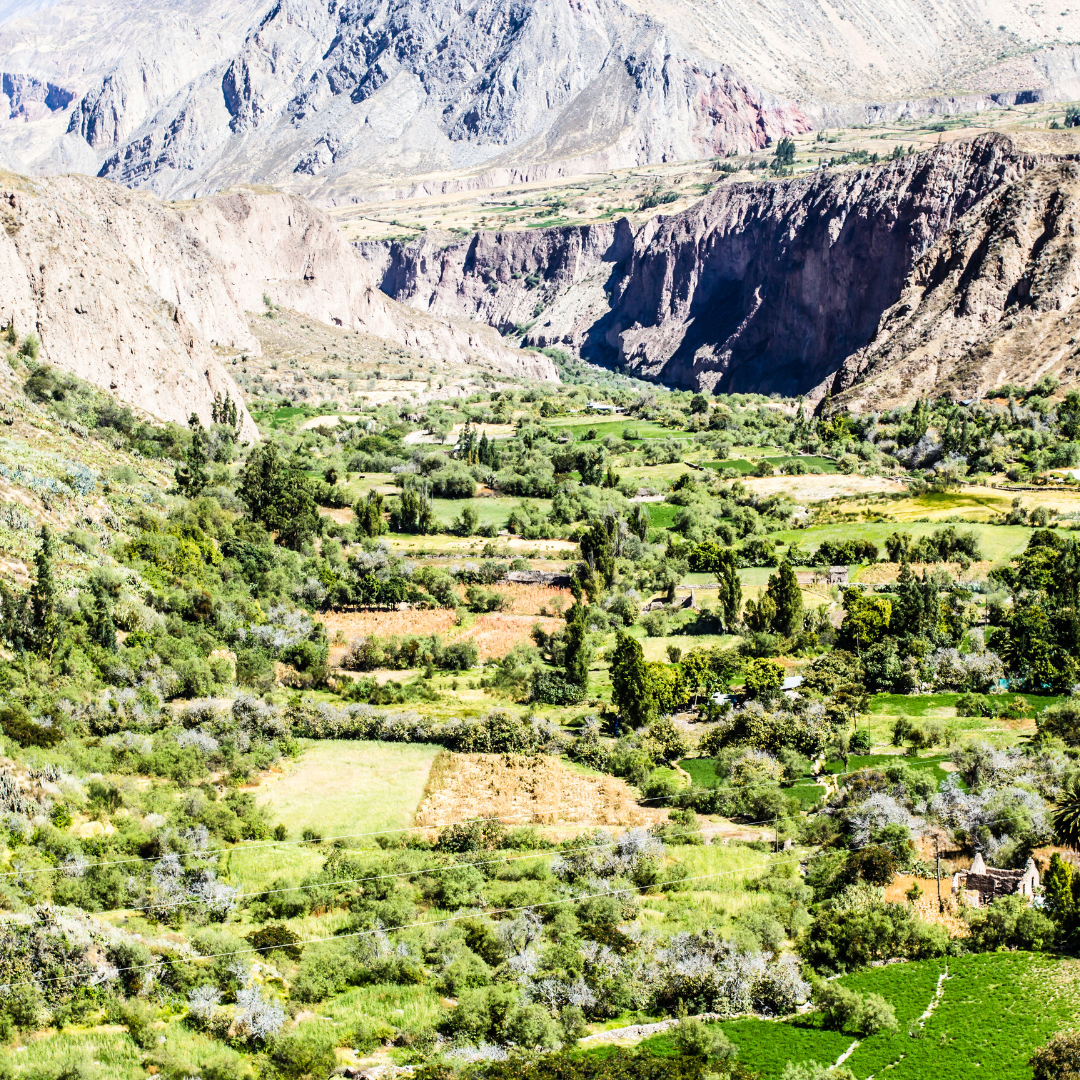
What are the findings in Rio Cotahuasi?
Rio Cotahuasi, with its rich historical and archaeological significance, has yielded numerous findings that provide insights into the region’s past civilizations and cultural heritage. Here is an exploration of the findings in Rio Cotahuasi, focusing on the count of relics, buildings, types of relics, and their distribution based on types:
- Count of Relics:
The exact count of relics found in Rio Cotahuasi is difficult to determine, as ongoing archaeological research continues to uncover discoveries. However, numerous archaeological sites and artifacts have been documented in the region, indicating a substantial number of relics. These relics offer valuable clues about the ancient civilizations that once inhabited the area.
- Count of Buildings:
Rio Cotahuasi is home to a significant number of architectural structures and ruins. These buildings include temples, ceremonial centers, residential structures, agricultural terraces, and storage facilities. While the exact count of buildings is subject to ongoing research and exploration, the presence of multiple archaeological sites suggests a substantial number of structures in the region.
- Types of Relics:
The relics discovered in Rio Cotahuasi represent various aspects of the region’s cultural and historical heritage. Some common types of relics found include:
– Ceramics: Pottery fragments and vessels, often decorated with intricate designs and symbols, provide insights into the artistic and technological achievements of past civilizations.
– Stone Tools: Various stone tools, such as knives, axes, and grinding stones, reflect the ancient inhabitants’ craftsmanship and their reliance on stone for toolmaking.
– Metal Artifacts: Objects made from metals like copper and gold, such as jewelry, ornaments, and ceremonial items, highlight the skill and artistic expression of the ancient cultures in the region.
– Textiles: Fragments of ancient textiles, such as woven fabrics and intricately designed garments, demonstrate the advanced weaving techniques and textile traditions of past civilizations.
- Counts Based on Types of Relics:
The counts of relics in Rio Cotahuasi can vary based on their types. Ceramics, due to their prevalence and durability, often constitute a significant portion of the findings. Stone tools, metal artifacts, and textiles are also frequently discovered, although they may be less abundant in comparison. The distribution and abundance of specific relic types can provide valuable insights into the cultural practices, trade networks, and economic activities of past civilizations in Rio Cotahuasi.
These findings in Rio Cotahuasi contribute to our understanding of the region’s history, ancient societies, and cultural practices. Ongoing archaeological research and excavations continue to expand our knowledge, providing a glimpse into the past civilizations that thrived in this remarkable area.
What is the nearest city to Rio Cotahuasi?
The nearest city to Rio Cotahuasi is the city of Arequipa. The city of Arequipa, located in southern Peru, is the closest major city to Rio Cotahuasi. It serves as a gateway for visitors to the Cotahuasi Canyon and the surrounding region. Arequipa is renowned for its rich colonial history, architectural beauty, and cultural significance.
Ancient cities in the Rio Cotahuasi region, such as Cotahuasi and surrounding archaeological sites, are distinct from modern cities. These ancient cities were centers of civilization in the past, serving as hubs for various activities, including religious ceremonies, trade, and governance.
In the Cotahuasi region, archaeological evidence reveals the existence of different types of buildings within these ancient cities. Some common types of buildings include:
- Religious Structures: These include temples, ceremonial platforms, and religious enclosures where rituals and ceremonies were conducted. These structures often exhibit intricate architectural designs and symbolisms associated with the religious beliefs of the ancient civilizations.
- Residential Buildings: Ancient cities had residential areas where people lived. These structures could range from modest dwellings to more elaborate residences of elite members of society. The construction materials and architectural styles varied depending on the period and cultural influences.
- Administrative and Civic Buildings: These buildings were used for administrative purposes, such as government offices or meeting places for community leaders. They played a crucial role in the governance and organization of the ancient cities.
Regarding street count, ancient cities in the Rio Cotahuasi region may have had organized street layouts, although the exact count of streets can be challenging to determine due to erosion, natural processes, and the passage of time. However, archaeological excavations and mapping techniques can provide insights into the street patterns and urban planning of these ancient cities.
It is important to note that the specific details and characteristics of ancient cities in Rio Cotahuasi can vary based on the specific archaeological sites and cultural periods under study. Ongoing research and excavations contribute to our understanding of the architectural features, street layouts, and urban structures of these ancient cities, providing valuable insights into the daily lives and societal organization of the past civilizations in the region.
What are the nearest attractions to Rio Cotahuasi?
Rio Cotahuasi is surrounded by a wealth of natural and cultural attractions that are worth exploring. Here is a list definition followed by a listing of three of the top attractions near Rio Cotahuasi:
- Cotahuasi Canyon:
– The Cotahuasi Canyon is one of the deepest canyons in the world and a major highlight of the region. With its stunning natural landscapes, towering cliffs, and the rushing Cotahuasi River, it offers breathtaking views and opportunities for hiking, trekking, and nature photography. The canyon showcases the raw beauty of the Andean landscape and provides a thrilling experience for adventure enthusiasts.
- Sipia Waterfall:
– Located in the Cotahuasi Valley, the Sipia Waterfall is a magnificent cascade plunging from a height of approximately 150 meters (492 feet). Its powerful waters create a mesmerizing spectacle as they crash into the pool below. The waterfall is surrounded by lush greenery, adding to its scenic appeal. Visitors can enjoy the view, take photographs, and appreciate the natural splendor of this remarkable attraction.
- Luicho Hot Springs:
– The Luicho Hot Springs offers a relaxing and rejuvenating experience for visitors. These natural thermal springs are nestled in a picturesque setting, surrounded by mountains and green valleys. The warm mineral-rich waters provide a soothing retreat, especially after a day of exploring the region. The springs are known for their therapeutic properties and are a perfect spot to unwind and soak in the tranquil ambiance.
Please note that there are many more attractions to discover near Rio Cotahuasi, including archaeological sites, traditional villages, and scenic viewpoints. These top three attractions provide a glimpse into the natural wonders and outdoor activities that await visitors in the region. It is recommended to consult local tourism offices, tour operators, or reliable travel resources to obtain comprehensive information, directions, and any necessary permits to fully enjoy these attractions while respecting the natural environment and cultural heritage of the area.
What are the books about Rio Cotahuasi?
Rio Cotahuasi, with its rich history, cultural heritage, and captivating natural landscapes, has been the subject of various books that delve into its unique characteristics. Here is a list definition followed by a listing of books about Rio Cotahuasi:
- “Cotahuasi: Tesoro Escondido de los Andes” by José Antonio Lizarzaburu
– This book provides an in-depth exploration of Cotahuasi, focusing on its archaeological sites, cultural traditions, and natural wonders. It delves into the history of the region, highlighting the significance of its ancient civilizations and their impact on the local communities. The book combines beautiful photographs with informative text, making it an excellent resource for those interested in understanding the depth of Cotahuasi’s heritage.
- “Cotahuasi: El valle más profundo del mundo” by Rafael Becerra Espinoza
– Rafael Becerra Espinoza, an expert in Andean culture and history, offers a comprehensive account of Cotahuasi in this book. It delves into the geological aspects of the Cotahuasi Canyon, its flora and fauna, as well as the ancient cultures that inhabited the region. Through vivid descriptions and engaging storytelling, the author takes readers on a journey to uncover the secrets and wonders of Cotahuasi.
- “Cotahuasi: Paisajes y cultura viva en el cañón más profundo del mundo” by Jorge Luis Cáceres Zapata
– In this book, Jorge Luis Cáceres Zapata provides a captivating exploration of Cotahuasi’s landscapes and vibrant culture. It covers the geological formations, archaeological sites, and the daily lives of the local people, showcasing the unique traditions and customs that have endured over the centuries. The book also features stunning photographs that capture the essence of Cotahuasi’s beauty and diversity.
These books about Rio Cotahuasi offer valuable insights into the region’s history, culture, and natural heritage. They provide readers with a deeper understanding of the significance of Cotahuasi and its place within the wider context of the Andean region. Whether you are interested in the archaeological sites, natural wonders, or cultural traditions of Cotahuasi, these books serve as excellent resources to further explore and appreciate the richness of this remarkable destination.
Who are the scientists who worked on Rio Cotahuasi?
Several scientists from various fields have conducted research and studies in the Rio Cotahuasi region, including geologists, historians, archaeologists, and anthropologists. Some notable scientists who have worked on Rio Cotahuasi include geologist James H. Madsen Jr., historian María Rostworowski, archaeologist Julio C. Tello, and anthropologist John Hyslop.
- Geologists:
James H. Madsen Jr. is a renowned geologist who has made significant contributions to the understanding of the geological formations and processes in Peru. While not exclusively focused on Rio Cotahuasi, his extensive research in the region and adjacent areas has contributed to the broader knowledge of the geological history and formation of the Andes Mountains.
- Historians:
María Rostworowski, an eminent Peruvian historian, specialized in the study of ancient Andean cultures and their historical contexts. While her research encompassed various regions of Peru, her work shed light on the historical significance of Rio Cotahuasi and its ancient civilizations. Rostworowski’s research helped to interpret and contextualize the historical narratives associated with the region.
- Archaeologists:
Julio C. Tello is widely regarded as the founder of Peruvian archaeology and made significant contributions to the understanding of pre-Columbian cultures in Peru. Although Tello’s work was not exclusively focused on Rio Cotahuasi, his research on nearby archaeological sites and his understanding of the broader Andean culture provide valuable insights into the ancient civilizations that once inhabited the region.
- Anthropologists:
John Hyslop, an influential anthropologist, focused his research on the Andean region and its indigenous cultures. While not solely centered on Rio Cotahuasi, his studies provide important ethnographic information and cultural perspectives on the people who inhabit the area. Hyslop’s research contributes to a deeper understanding of contemporary communities and their connections to the past in the Rio Cotahuasi region.
These scientists, among others, have contributed to the knowledge and understanding of Rio Cotahuasi through their research, fieldwork, and publications. Their multidisciplinary approach, combining geological, historical, archaeological, and anthropological perspectives, has helped to uncover the complex and fascinating history of the region. Their work continues to inspire further exploration and investigation, enriching our understanding of Rio Cotahuasi’s cultural and natural heritage.
Which district is Rio Cotahuasi in?
Rio Cotahuasi is located within the district of Cotahuasi, which is part of the La Unión Province in the Arequipa Region of Peru.
Rio Cotahuasi is situated within the district of Cotahuasi, which is the administrative division responsible for governing the area. Cotahuasi district is part of the La Unión Province, one of the provinces in the Arequipa Region of Peru. The district of Cotahuasi encompasses a significant portion of the Cotahuasi Canyon and its surrounding valleys, offering access to the natural and cultural wonders of the region.
Other regions within the district of Cotahuasi include various smaller towns, villages, and communities. Some notable regions within the district include:
- Cotahuasi Town: The district’s administrative center and the namesake of the district, Cotahuasi Town serves as the hub for local governance and services. It is an important cultural and economic center, providing essential facilities and amenities for residents and visitors alike.
- Taurisma: Located within the district, Taurisma is a small town known for its historical and archaeological significance. It features ancient ruins, including an impressive Inca site, providing valuable insights into the region’s pre-Columbian past.
- Alca: Another notable region within the Cotahuasi district is Alca, a picturesque village surrounded by scenic landscapes. Alca offers glimpses into the traditional Andean culture, with its charming architecture, local customs, and vibrant festivities.
These regions within the Cotahuasi district collectively contribute to the cultural heritage, natural beauty, and historical significance of the area. Each region has its unique characteristics and attractions, attracting visitors interested in exploring the wonders of Rio Cotahuasi and its surrounding areas.
Is Humantay Mountain close to the Rio Cotahuasi?
No, Humantay Mountain is not close to Rio Cotahuasi. Humantay Mountain is located in the Cusco region of Peru, specifically in the district of Mollepata, near the famous Salkantay Trek. It is a stunning snow-capped peak that attracts many visitors due to its natural beauty and accessibility from Cusco.
On the other hand, Rio Cotahuasi is situated in the La Unión Province of the Arequipa region, which is located in southern Peru. It is known for its deep canyon, picturesque landscapes, and archaeological sites.
While both Humantay Mountain and Rio Cotahuasi are remarkable natural destinations in Peru, they are located in different regions and are not close to each other geographically. The distance between these two sites is significant, with Humantay Mountain being situated in the Cusco region, approximately 400 kilometers (250 miles) northeast of Rio Cotahuasi.
Therefore, if travelers wish to visit Humantay Mountain, they would need to make separate travel arrangements to the Cusco region, as it is not near Rio Cotahuasi. It is essential to plan accordingly and consider the distances and logistics involved in exploring different destinations in Peru to ensure a smooth and enjoyable travel experience.
Does Humantay Mountain Affect the History of Rio Cotahuasi?
No, Humantay Mountain does not directly affect the history of Rio Cotahuasi. Humantay Mountain, located in the Cusco region of Peru, is a natural landmark known for its scenic beauty and spiritual significance. It is part of the larger Salkantay Mountain range and has been a revered site for the local communities and visitors alike.
In contrast, Rio Cotahuasi, situated in the La Unión Province of the Arequipa region, is known for its deep canyon, archaeological sites, and cultural heritage. The history of Rio Cotahuasi is primarily shaped by the civilizations that inhabited the region, such as the Wari, the Collaguas, and the Inca Empire.
While Humantay Mountain and Rio Cotahuasi are both significant destinations in Peru, they exist in separate geographic locations and have distinct historical contexts. The history of Rio Cotahuasi is predominantly influenced by the cultures and civilizations that thrived in the region, their socio-political structures, economic activities, and artistic expressions. This history is shaped by factors such as settlement patterns, agricultural practices, trade networks, and interactions with neighboring civilizations.
Humantay Mountain, on the other hand, holds cultural and spiritual significance for the communities in the Cusco region. It has its unique history and associations, often connected to local mythology, rituals, and religious practices. However, it does not have a direct impact on the historical development or events that shaped the history of Rio Cotahuasi.
It is important to recognize the distinctiveness of each site and appreciate them for their contributions to Peru’s cultural and natural heritage. Exploring the historical significance of Rio Cotahuasi requires a focus on the region’s archaeological sites, ancient civilizations, and the cultural legacy that has been passed down through generations.
How did Rio Cotahuasi live in the Past?
In the past, Rio Cotahuasi was home to various civilizations, each contributing to its development and way of life. The region witnessed the rise and fall of different cultures, leaving behind a rich historical legacy. Here is an exploration of how Rio Cotahuasi was lived in the past, covering topics such as civilizations, population, occupations, social classes, city growth, and daily routines:
- Civilizations:
Rio Cotahuasi was inhabited by several civilizations throughout history, including the Wari, Collaguas, and the Inca Empire. These civilizations played a significant role in shaping the region’s cultural, economic, and political landscape.
- Population:
The population of Rio Cotahuasi varied across different periods and civilizations. During the height of the Inca Empire, the region experienced substantial growth in population due to the Inca’s administrative and agricultural policies, as well as their efforts to integrate conquered territories into their empire.
- Occupations:
The people of Rio Cotahuasi engaged in diverse occupations to sustain their communities. The region’s geography, rich in natural resources, allowed for a range of economic activities. Farming was a crucial occupation, with agricultural terraces utilized to cultivate crops such as maize, potatoes, and quinoa. Additionally, mining activities played a significant role in the economy, as the region was known for its mineral deposits, including gold and silver.
- Farmers, Miners, and Royalty:
The society of Rio Cotahuasi consisted of different social classes, including farmers, miners, and the ruling elite. Farmers formed the backbone of the agricultural sector, cultivating crops to sustain the population. Miners played a vital role in extracting valuable minerals from the region’s mines, contributing to trade and economic prosperity. The ruling class, which included nobles and royalty, exercised political and administrative power, overseeing the governance of the region.
- City Growth:
The growth of Rio Cotahuasi as a city was influenced by various factors, including the agricultural productivity of the region, access to natural resources, trade networks, and the influence of neighboring civilizations. The Inca Empire, in particular, implemented a system of planned urban development, which included the construction of administrative centers, temples, and infrastructure to support the growing population.
- Daily Routine:
A typical day in Rio Cotahuasi’s past would have involved various activities depending on one’s occupation and social status. Farmers would tend to their crops and livestock, while miners would engage in mining operations. The ruling class would oversee administrative matters and participate in religious ceremonies and rituals. Daily life would also include trade, social interactions, and cultural activities, reflecting the diverse aspects of the region’s society.
It is important to note that our understanding of how Rio Cotahuasi lived in the past is based on archaeological evidence, historical accounts, and ongoing research. The study of artifacts, architecture, and cultural practices provides valuable insights into the daily lives, social structures, and economic activities of the civilizations that once thrived in Rio Cotahuasi.
How was Agriculture in Rio Cotahuasi?
Agriculture played a vital role in the development and sustenance of Rio Cotahuasi in the past. Here is a detailed exploration of agriculture in Rio Cotahuasi, including the main production tools, agricultural activities, and notable scientists who have studied the subject:
- Main Production Tools:
In Rio Cotahuasi, the ancient agricultural practices relied on various tools and techniques. Some of the main production tools used by the inhabitants included:
– Stone hoes: These were essential for tilling the land and preparing it for planting.
– Irrigation systems: The construction of canals and terraces helped manage water resources and provide irrigation for crops.
– Planting sticks: These were used for sowing seeds into the prepared soil.
– Harvesting tools: Farmers utilized sickles or stone knives to harvest crops when they were ready.
- Agricultural Activities:
The agricultural activities in Rio Cotahuasi were diverse and catered to the needs of the local population. The region’s fertile soil and favorable climate allowed for the cultivation of various crops, including:
– Maize: Maize was a staple crop and served as a primary food source.
– Potatoes: Different varieties of potatoes were grown, providing a versatile and nutritious food option.
– Quinoa: This ancient grain was cultivated for its nutritional value and ability to withstand high-altitude conditions.
– Beans and legumes: These crops provided additional protein sources.
– Fruits and vegetables: People also cultivated a range of fruits and vegetables to complement their diet.
- Scientists:
Two notable scientists who have made significant contributions to the study of agriculture in the region are:
– Nathan Craig: As an archaeobotanist, Nathan Craig has conducted research on ancient agricultural practices in the Andean region, including studies related to crop cultivation, agricultural systems, and the use of farming tools. His work provides insights into the agricultural history and subsistence strategies of the ancient societies in the area.
– Ana María González Voyer: Ana María González Voyer is an archaeologist who has focused on the study of agricultural terraces and agricultural practices in the Andean region. Her research has shed light on the role of terracing in managing land and water resources for agriculture, contributing to a better understanding of ancient farming techniques.
These scientists, among others, have utilized archaeological evidence, botanical analysis, and ethnographic research to unravel the intricacies of agricultural practices in Rio Cotahuasi. Their studies have helped to reconstruct the farming methods, crop choices, and agricultural strategies employed by the ancient inhabitants of the region, providing valuable insights into the subsistence and sustainability of past societies.
How was Mining in Rio Cotahuasi?
Mining played a significant role in the history of Rio Cotahuasi, contributing to its economic prosperity and shaping the lives of its inhabitants. Here is a detailed exploration of mining in Rio Cotahuasi, including the main production tools, the minerals produced, and notable scientists who have studied the subject:
Mining in Rio Cotahuasi involved the use of various tools and techniques to extract minerals from the earth. Some of the main production tools used by the ancient miners included:
– Stone hammers: These tools were used to break apart rocks and extract minerals from the ore veins.
– Chisels: Chisels were utilized to carve out the mineral-rich rock from the mine walls.
– Shovels and picks: These tools were employed to remove the excavated rock and transport it for processing.
– Sluice boxes: Miners used sluice boxes to separate heavy minerals from the lighter debris through the process of washing.
- Minerals Produced:
Rio Cotahuasi was known for its mineral deposits, which played a crucial role in its mining industry. The region produced various minerals, including:
– Gold: Gold mining was particularly significant in the area, and ancient miners sought to extract this precious metal.
– Silver: Silver was another valuable mineral that attracted mining activities in Rio Cotahuasi.
– Copper: Copper deposits were also exploited, as this versatile metal served various purposes, including toolmaking and ornamentation.
Two notable scientists who have made significant contributions to the study of mining in the region are:
– Richard L. Burger: Richard L. Burger is an archaeologist who has conducted extensive research on ancient mining practices in the Andean region. His work focuses on the social, economic, and technological aspects of pre-Columbian mining, providing insights into the organization of mining activities, the labor involved, and the impact on local societies.
– Peter Kaulicke: Peter Kaulicke, an archaeologist specializing in the Andean region, has contributed to the understanding of ancient mining through his research. His studies explore the social and economic significance of mining in the Andes, shedding light on the mining techniques, labor organization, and trade networks associated with the extraction and distribution of minerals.
These scientists, alongside others in the field, have employed archaeological evidence, mining artifacts, and historical records to reconstruct the mining practices in Rio Cotahuasi. Their research has deepened our understanding of the technological advancements, labor systems, and socio-economic implications of mining activities in the region throughout history.
How was the economy of Rio Cotahuasi?
The economy of Rio Cotahuasi in the past was multifaceted and relied on a variety of activities to sustain the local population and facilitate trade. Here is a detailed exploration of the economy of Rio Cotahuasi, including main production tools, the goods produced and traded, and notable scientists who have studied the subject:
The economy of Rio Cotahuasi involved the use of various production tools depending on the specific activity. Some of the main tools used in different sectors include:
– Agricultural tools: Farmers utilized stone hoes, planting sticks, and harvesting tools such as sickles or stone knives.
– Mining tools: Miners employed stone hammers, chisels, shovels, and picks for extracting minerals.
– Craftsmanship tools: Artisans and craftsmen used tools like chisels, hammers, and molds for creating pottery, textiles, and metalwork.
- Goods Produced and Traded:
The economy of Rio Cotahuasi encompassed a range of goods that were both produced locally and traded with neighboring regions. Some of the main goods produced and traded include:
– Agricultural products: Crops such as maize, potatoes, quinoa, and beans were cultivated and traded as food sources.
– Textiles: Skilled weavers produced textiles using techniques like backstrap weaving, creating intricate garments and textiles for local use and trade.
– Pottery and ceramics: Artisans crafted pottery vessels, bowls, and other ceramic items that served utilitarian and ceremonial purposes.
– Minerals: The region’s rich mineral deposits, including gold, silver, and copper, were mined and traded as valuable resources.
– Crafts and artwork: Skilled artisans created a variety of crafts and artwork, including jewelry, metalwork, and carvings, which were valued commodities for trade.
Two notable scientists who have made significant contributions to the study of the economy of Rio Cotahuasi are:
– Craig Morris: Craig Morris, an archaeologist, has conducted extensive research on the ancient economies of the Andean region. His studies have examined the production, distribution, and trade of goods in pre-Columbian societies, providing insights into the economic systems and networks of the past.
– Christina Conlee: Christina Conlee, an anthropologist specializing in the Andean region, has explored the economic organization and trade practices of ancient societies. Her research has focused on understanding the socio-economic dynamics, marketplaces, and exchange networks that shaped economic activities in the region.
These scientists, alongside others in their field, have employed archaeological evidence, economic theories, and historical sources to shed light on the complex economic systems of Rio Cotahuasi. Their research has contributed to our understanding of the production, trade, and economic relationships that sustained the local communities and facilitated connections with neighboring regions.
How was Daily Life in Rio Cotahuasi?
Daily life in Rio Cotahuasi was shaped by the activities, occupations, and cultural practices of its inhabitants. Here is a detailed exploration of daily life in Rio Cotahuasi, covering main production tools, goods exchanged, and notable scientists who have studied the topic:
Daily life in Rio Cotahuasi involved the use of various tools and implements to carry out daily activities. Some of the main production tools used by the residents included:
– Agricultural tools: Farmers utilized stone hoes, planting sticks, and sickles for tending to crops, harvesting, and preparing the land.
– Cooking utensils: Clay pots, grinding stones (metates), and stone ovens were used for cooking and food preparation.
– Weaving tools: Backstrap looms, spindles and needles were employed by skilled weavers for textile production.
– Pottery tools: Clay molds, paddles, and pottery wheels were utilized in the creation of pottery and ceramic objects.
- Goods Exchanged:
Daily life in Rio Cotahuasi involved the exchange of various goods for sustenance, trade, and cultural purposes. Some of the goods produced, sold and exchanged included:
– Agricultural produce: Crops such as maize, potatoes, quinoa, and beans were grown and exchanged as food sources.
– Textiles and clothing: Skilled weavers produced textiles, including clothing items, blankets, and decorative fabrics, which were used locally and traded with neighboring communities.
– Handicrafts and artwork: Artisans crafted pottery, jewelry, metalwork, and carvings, which served both utilitarian and ceremonial purposes.
– Food and beverages: The local markets offered a range of food items, including meat, fruits, vegetables, grains, and traditional beverages.
Two notable scientists who have contributed to our understanding of daily life in Rio Cotahuasi are:
– Donna J. Nash: Donna J. Nash is an archaeologist who has researched ancient Andean societies, including studies on daily life activities, food production, and craft production. Her work has focused on pottery analysis, household archaeology, and the social and economic aspects of daily life.
– Izumi Shimada: Izumi Shimada, an archaeologist, and anthropologist, has conducted extensive research on ancient Andean civilizations. His studies have examined various aspects of daily life, including the organization of households, social interactions, and the material culture of ancient societies.
These scientists, along with others in the field, have used archaeological excavations, material analysis, and ethnographic studies to reconstruct the daily lives, practices, and cultural expressions of the inhabitants of Rio Cotahuasi. Their research provides valuable insights into the routines, subsistence strategies, and social dynamics that shaped the daily life experiences of the past societies in the region.
What were the Religious Beliefs in Rio Cotahuasi?
The religious beliefs of the civilizations in Rio Cotahuasi were deeply ingrained in their daily lives and played a significant role in shaping their spiritual practices and worldview. Here is a detailed exploration of the religious beliefs of the civilizations in Rio Cotahuasi, including the civilizations and their gods, main production tools, goods exchanged, and notable scientists who have studied the topic:
- Civilizations and their Gods:
The civilizations that inhabited Rio Cotahuasi had their unique religious beliefs and deities. Some of the notable civilizations and their associated gods include:
– Wari Empire: The Wari civilization worshipped a pantheon of deities that included the sun god Inti, the moon goddess Mama Quilla, and the agricultural deity Wiracocha.
– Collaguas: The Collaguas, an indigenous group, had a rich spiritual tradition and worshipped various deities associated with nature, mountains, and water sources.
– Inca Empire: The Inca civilization worshipped Inti as the sun god and considered him the highest deity. Other important gods in the Inca pantheon included Viracocha, the creator deity, and Mama Killa, the moon goddess.
The main production tools used by the civilizations in Rio Cotahuasi were diverse and varied depending on the specific activities. Some of the common production tools included:
– Agricultural tools: Stone hoes, planting sticks, and sickles were used for farming and harvesting crops.
– Craftsmanship tools: Chisels, hammers, and molds were utilized in the creation of pottery, textiles, and metalwork.
The civilizations in Rio Cotahuasi engaged in trade and exchanged various goods as part of their economic and cultural interactions. Some of the goods produced, bought, and sold included:
– Agricultural produce: Crops such as maize, potatoes, quinoa, and beans were cultivated and traded.
– Textiles: Skilled weavers produced textiles using techniques like backstrap weaving, which were exchanged for other goods or used in ceremonial contexts.
– Pottery and ceramics: Artisans created pottery vessels, bowls, and other ceramic objects that served utilitarian and ritual purposes.
– Minerals: The region’s mineral resources, including gold, silver, and copper, were mined and traded as valuable commodities.
Two notable scientists who have made significant contributions to the study of the religious beliefs of civilizations in Rio Cotahuasi are:
– R. Tom Zuidema: R. Tom Zuidema, an anthropologist, has conducted extensive research on the religious and symbolic systems of the Andean civilizations, including the Inca Empire. His work focuses on understanding the cosmology, rituals, and religious practices of ancient Andean societies.
– Susan Niles: Susan Niles, an archaeologist specializing in the Andean region, has studied the material culture and religious practices of pre-Columbian societies. Her research has provided insights into the relationship between religious beliefs, iconography, and social organization in ancient civilizations.
These scientists, alongside others in the field, have used archaeological findings, iconographic analysis, and ethnohistorical sources to unravel the religious beliefs and practices of the civilizations in Rio Cotahuasi. Their research contributes to our understanding of the spiritual worldviews, rituals, and deities worshipped by these ancient societies.
How is the Past of Rio Cotahuasi presented to the visitors?
The past of Rio Cotahuasi is presented to visitors through various means, offering a rich and immersive experience that allows them to explore and appreciate the historical and cultural heritage of the region. Here is a detailed explanation of how the past of Rio Cotahuasi is presented to visitors:
- Archaeological Sites: Rio Cotahuasi boasts several archaeological sites that provide a glimpse into the ancient civilizations that once thrived in the area. Visitors can explore the ruins of temples, ceremonial centers, and residential structures that offer insights into the architectural styles, religious practices, and daily life of past societies.
- Museums and Interpretive Centers: Museums and interpretive centers in and around Rio Cotahuasi showcase artifacts, exhibits, and interactive displays that highlight the region’s history and archaeological discoveries. These institutions provide valuable information about the cultural significance of the area and its past inhabitants.
- Guided Tours: Visitors have the opportunity to join guided tours led by knowledgeable guides who provide in-depth explanations and historical context about the sites and landmarks they visit. These tours often incorporate storytelling and anecdotes to bring the past to life, enhancing the visitor’s understanding and engagement.
- Cultural Festivals and Events: Rio Cotahuasi hosts various cultural festivals and events throughout the year that celebrate the traditions, customs, and history of the region. These festivities showcase traditional dances, music, arts, and crafts, allowing visitors to experience the vibrant cultural heritage of the area.
- Natural Landscapes: Rio Cotahuasi is known for its breathtaking natural landscapes, which have witnessed human presence and cultural activities throughout history. Visitors can appreciate the scenic beauty of the region while understanding the deep connection between the natural environment and the cultural practices of the past.
By combining these elements, the past of Rio Cotahuasi is presented to visitors in a multifaceted and engaging manner. Whether exploring archaeological sites, visiting museums, participating in cultural events, or immersing themselves in stunning natural surroundings, visitors can gain a comprehensive understanding of the region’s history, culture, and heritage. This presentation allows them to connect with the past, appreciate the achievements of ancient civilizations, and develop a deeper appreciation for the significance of Rio Cotahuasi in the broader historical context.
How is the Preservation of Rio Cotahuasi?
The preservation of Rio Cotahuasi is of paramount importance to safeguard its historical and cultural heritage. The exact level of preservation can vary, but efforts have been made to protect and conserve the area. Here is a detailed exploration of the preservation of Rio Cotahuasi:
- Level of Preservation: Rio Cotahuasi has benefited from preservation initiatives aimed at safeguarding its archaeological sites, natural landscapes, and cultural traditions. Many of the archaeological sites in the region have been partially or fully excavated and documented, allowing for their preservation and study. However, it is important to note that some sites may be in varying states of preservation due to factors such as environmental conditions, human activity, and limited resources for conservation.
- Precautions and Laws: Various precautions and laws are in place to protect the heritage of Rio Cotahuasi. These include:
– National and regional laws: Peru has national and regional laws that regulate the protection and management of archaeological sites, historical monuments, and cultural heritage. These laws outline guidelines for excavation, conservation, and public access to ensure responsible preservation practices.
– Site management plans: Authorities and local communities have implemented site management plans that outline specific measures for the preservation, maintenance, and interpretation of archaeological sites and cultural resources in Rio Cotahuasi.
– Visitor guidelines: Guidelines and regulations are in place to educate and guide visitors on responsible behavior while visiting archaeological sites and natural areas. These guidelines aim to minimize human impact, prevent damage to delicate structures, and promote respectful interaction with the cultural and natural environment.
- Conservation Efforts: Conservation efforts in Rio Cotahuasi encompass both tangible and intangible aspects of heritage preservation. These efforts may include:
– Structural conservation: Restoration and stabilization of archaeological structures, such as temples or terraces, to prevent further deterioration and ensure their long-term preservation.
– Cultural revitalization: Initiatives to revitalize traditional practices, cultural events, and craft-making techniques to preserve intangible cultural heritage and promote sustainable cultural tourism.
– Environmental conservation: Conservation programs that focus on protecting the natural environment, including reforestation efforts, sustainable land management practices, and monitoring of ecological factors that can impact the heritage sites.
While preservation efforts are in place, challenges such as limited resources, ongoing development pressures, and climate change can pose risks to the preservation of Rio Cotahuasi. Continued commitment, collaboration among stakeholders, and public awareness are crucial to ensure the long-term preservation of this unique and valuable heritage.
Visitors need to follow the designated guidelines and regulations while exploring Rio Cotahuasi. Respecting the archaeological sites, refraining from touching or removing artifacts, and practicing responsible tourism can contribute to the preservation efforts and help protect the cultural and natural heritage of the area for future generations.
Is there a modern town in Rio Cotahuasi?
Yes, there is a modern town named Cotahuasi located in the Cotahuasi Valley, which is often referred to as Rio Cotahuasi due to the presence of the Cotahuasi River. The town serves as the administrative and commercial center for the province of La Unión in the Arequipa Region of Peru. Here is a detailed explanation of the modern town of Cotahuasi:
The town of Cotahuasi is situated in the Cotahuasi Valley, which is known for its stunning landscapes, ancient archaeological sites, and rich cultural heritage. It is located approximately 370 kilometers northwest of Arequipa, the capital city of the Arequipa Region. Cotahuasi serves as the capital of the Cotahuasi Province and is the largest town in the area.
As a modern town, Cotahuasi provides essential services and facilities to its residents and visitors. It features amenities such as shops, markets, restaurants, accommodations, health services, and transportation infrastructure. The town’s population is primarily engaged in agriculture, livestock farming, commerce, and tourism-related activities.
Cotahuasi offers a glimpse into the contemporary lifestyle of the local population, reflecting a blend of traditional and modern influences. The town has preserved its historical character and cultural traditions, which can be observed in its architecture, local festivals, and indigenous practices.
While the ancient civilizations in the region have left their mark on the cultural landscape, the modern town of Cotahuasi has developed as a center for administrative, economic, and social activities. It serves as a gateway for visitors who wish to explore the natural beauty, archaeological sites, and cultural heritage of the surrounding area.
It is important to note that the term “Rio Cotahuasi” is commonly used to refer to both the Cotahuasi River and the broader Cotahuasi Valley, encompassing the ancient and modern aspects of the area. Thus, while there is a modern town of Cotahuasi, the historical and cultural significance of the wider region extends beyond the town itself.
How is the Map of Rio Cotahuasi Layout?

How was Transportation to the Rio Cotahuasi?
Transportation to Rio Cotahuasi historically relied on a network of roads and paths that connected the region to other parts of Peru. While the exact road infrastructure has evolved, several routes have been significant for reaching Rio Cotahuasi. Here is a detailed exploration of transportation to Rio Cotahuasi and the roads used in its history:
Transportation to Rio Cotahuasi historically relied on a network of roads and paths, including the Cotahuasi Canyon Road, which is the main access route to the region. This road provides a scenic and challenging journey through the rugged terrain of the Cotahuasi Canyon.
– Cotahuasi Canyon Road: The Cotahuasi Canyon Road, also known as the Cotahuasi-Chuquibamba Road or the CA-104, is a crucial route for accessing Rio Cotahuasi. It starts from the town of Aplao in the Majes Valley and traverses the deep and dramatic Cotahuasi Canyon, offering breathtaking views of the surrounding landscape. The road is known for its steep descents, hairpin turns, and narrow sections, making it a challenging but rewarding journey for adventurers and travelers.
– Historical Routes: In the past, various ancient routes connected Rio Cotahuasi to other regions of Peru. One notable route was the Qhapaq Ñan, or the Inca Road System, which was an extensive network of roads built by the Inca Empire. While the exact alignment of these ancient routes may vary, they played a significant role in facilitating trade, communication, and transportation across the Andean region.
– Improvements and Accessibility: Over the years, efforts have been made to improve road infrastructure and accessibility to Rio Cotahuasi. Upgrades to the Cotahuasi Canyon Road have been carried out to enhance safety and accommodate vehicles, making it more accessible for both locals and tourists.
It is important to note that due to the rugged and remote nature of the Cotahuasi Canyon, transportation to Rio Cotahuasi can still be challenging. Travelers should be prepared for winding roads, steep descents, and limited services along the way. It is advisable to use reliable transportation and plan the journey accordingly, taking into account the road conditions and travel time.
The road network has played a crucial role in connecting Rio Cotahuasi to the outside world, facilitating trade, tourism, and the exchange of goods and ideas. The historical routes, including the Cotahuasi Canyon Road and the ancient Inca roads, not only served as transportation corridors but also witnessed the movements of people, cultures, and economic activities throughout the region’s history.
Does Rio Cotahuasi have a No-fly Zone?
No, Rio Cotahuasi does not have a designated no-fly zone. The area does not impose restrictions on air travel, and there are no specific regulations or limitations on flying over Rio Cotahuasi. However, it’s important to note that the region is characterized by rugged terrain, including deep canyons and high mountains, which can pose challenges for aviation operations.
While there may not be a designated no-fly zone, pilots and aircraft operators are advised to exercise caution and adhere to standard safety protocols when flying over Rio Cotahuasi and its surrounding areas. The mountainous terrain and unpredictable weather conditions in the region require skilled navigation and careful consideration of flight paths.
It’s worth mentioning that some areas of cultural or archaeological significance, such as ancient ruins or protected sites, may have restricted access to preserve their integrity. These restrictions primarily apply to ground access rather than airspace. If there are specific locations within Rio Cotahuasi that have restricted access or are considered sensitive sites, visitors and pilots need to be aware of any guidelines or regulations in place to respect and protect these areas.
In summary, while there is no specific no-fly zone in Rio Cotahuasi, pilots and aviation operators should exercise caution and adhere to safety guidelines when flying over the region’s challenging terrain. It is always advisable to stay informed about local regulations, consult with aviation authorities, and maintain situational awareness to ensure safe and responsible aerial operations.
Is Rio Cotahuasi in UNESCO World Heritage Sites?
No, Rio Cotahuasi is not currently listed as a UNESCO World Heritage Site. As of my knowledge cutoff in September 2021, the Cotahuasi region has not been officially recognized by UNESCO for its outstanding universal value in terms of cultural or natural heritage.
The UNESCO World Heritage List includes sites that are deemed to possess exceptional value to humanity and deserve preservation for future generations. These sites can represent cultural, natural, or mixed (both cultural and natural) heritage. While Rio Cotahuasi is rich in cultural and archaeological significance, it has not yet been inscribed on the UNESCO World Heritage List.
However, it is important to note that UNESCO periodically evaluates and updates the list, and new sites may be added in the future based on their significance and the nomination process. The cultural and natural heritage of Rio Cotahuasi may be considered for nomination in the future if it meets the criteria set by UNESCO.
The absence of Rio Cotahuasi from the World Heritage List does not diminish its historical, archaeological, and cultural importance. The region’s cultural heritage, including its archaeological sites, ancient civilizations, and traditional practices, remains a valuable asset for research, conservation, and sustainable tourism development. Local authorities, organizations, and researchers continue to work towards the preservation and promotion of the heritage of Rio Cotahuasi, further contributing to its significance on a regional and national scale.
What is the contribution of Rio Cotahuasi to Tourism in Peru?
The contribution of Rio Cotahuasi to tourism in Peru is significant, as it offers unique cultural, historical, and natural attractions that attract visitors from around the world. Here is an overview of Rio Cotahuasi’s contribution to tourism, including currency and statistics:
- Definitive Answer: Rio Cotahuasi contributes to tourism in Peru by showcasing its rich cultural heritage, breathtaking landscapes, and adventure tourism opportunities. The influx of tourists to the region has a positive impact on the local economy, supporting businesses, creating employment opportunities, and fostering sustainable development.
- Expansion of Evidence:
– Cultural Tourism: Rio Cotahuasi’s archaeological sites, ancient ruins, and traditional cultural practices draw tourists interested in exploring the region’s history and cultural heritage. The presence of ancient civilizations and well-preserved archaeological sites, such as the ruins of the ancient Wari and Inca civilizations, offers a unique experience for cultural enthusiasts.
– Natural Attractions: The Cotahuasi Canyon, one of the deepest canyons in the world, is a significant draw for adventure and nature tourism. The stunning landscapes, including towering cliffs, terraced valleys, and cascading waterfalls, provide opportunities for hiking, trekking, bird-watching, and photography.
– Adventure Tourism: Rio Cotahuasi’s rugged terrain, including mountains, canyons, and rivers, offers thrilling adventure activities such as whitewater rafting, mountain biking, rock climbing, and paragliding. These activities attract adventure seekers and adrenaline enthusiasts to the region.
– Local Economy: Tourism in Rio Cotahuasi contributes to the local economy by generating income for various stakeholders, including tour operators, accommodations, restaurants, handicraft vendors, and transportation services. The revenue generated from tourism helps support the livelihoods of local communities and contributes to the overall development of the region.
– Currency: The currency used in Peru is the Peruvian Sol (PEN). In Rio Cotahuasi, as in other parts of Peru, visitors can use the local currency for transactions. It is advisable to carry some cash as credit card acceptance may be limited in certain areas.
– Statistics: Specific tourism statistics for Rio Cotahuasi may vary, and up-to-date figures may not be readily available. However, it is known that the region attracts a considerable number of domestic and international tourists each year, contributing to the overall tourism sector in Peru.
Rio Cotahuasi’s unique cultural and natural attractions, combined with its historical significance, make it a valuable contributor to tourism in Peru. The region’s ability to offer diverse experiences, from cultural exploration to adventure activities, attracts visitors seeking an authentic and immersive travel experience. The revenue generated from tourism supports local communities, fosters economic growth, and promotes the preservation of Rio Cotahuasi’s cultural and natural heritage.
Is Rio Cotahuasi in danger?
Rio Cotahuasi is not considered to be in immediate or imminent danger. However, it is important to note that the preservation and conservation of Rio Cotahuasi’s natural and cultural heritage face various challenges. Here is an explanation of the current situation and potential threats:
- Definitive Answer: Rio Cotahuasi is not in immediate danger. However, it faces challenges that require ongoing attention and proactive measures to ensure its long-term preservation and sustainability.
– Tourism Impact: The increasing popularity of Rio Cotahuasi as a tourist destination brings both opportunities and challenges. The influx of visitors can put pressure on fragile ecosystems, archaeological sites, and local communities. Sustainable tourism practices and responsible visitor behavior are crucial to mitigate potential negative impacts on the natural and cultural heritage.
– Development Pressures: Economic development and infrastructure projects in the region may pose risks to the integrity of Rio Cotahuasi. Urban expansion, road construction, and mining activities can potentially impact the surrounding landscapes, ecosystems, and archaeological sites. Proper planning, regulations, and monitoring are essential to balance development with the preservation of the area’s unique features.
– Climate Change: Like many other regions, Rio Cotahuasi is susceptible to the impacts of climate change, including changes in temperature, precipitation patterns, and natural disasters. These changes can affect the delicate ecosystems, water resources, and agricultural practices in the area. Adaptive strategies and sustainable land management practices are vital to mitigate and respond to the challenges posed by climate change.
– Illegal Activities: Illegal activities such as looting, vandalism, and the unauthorized extraction of cultural artifacts pose a threat to Rio Cotahuasi’s archaeological sites and cultural heritage. These activities can result in the loss of valuable historical information and damage to the integrity of the sites. Strong regulations, enforcement, and community involvement are necessary to combat illegal activities and protect the heritage of the region.
While Rio Cotahuasi is not currently facing immediate danger, it is crucial to remain vigilant and proactive in addressing the potential threats to its natural and cultural heritage. Collaboration among stakeholders, including local communities, authorities, researchers, and tourism operators, is essential to ensure the sustainable preservation and responsible management of Rio Cotahuasi for future generations. Continuous monitoring, education, and engagement with the local community are key to safeguarding this unique and valuable heritage site.
How many Artifacts exist in Rio Cotahuasi?
Rio Cotahuasi is known for its rich archaeological heritage, with numerous ancient sites and remnants of past civilizations. These artifacts can include pottery, tools, textiles, religious artifacts, and other objects that provide valuable insights into the daily life, beliefs, and practices of the ancient inhabitants.
Archaeological excavations, research projects, and cultural heritage surveys continue to uncover new artifacts and expand our understanding of the region’s history. However, it’s important to note that archaeological work is ongoing, and the full extent of the artifacts in Rio Cotahuasi may not be fully documented or known.
Archaeologists, researchers, and cultural heritage professionals actively work to document, analyze, and preserve the artifacts discovered in Rio Cotahuasi. These artifacts contribute to our knowledge of the region’s past and help piece together the story of the ancient civilizations that once inhabited the area.
It’s worth emphasizing that the protection and preservation of these artifacts are paramount. They are irreplaceable and provide valuable insights into the history and cultural heritage of Rio Cotahuasi. Strict regulations and ethical guidelines are in place to ensure that the artifacts are handled, studied, and displayed responsibly, allowing future generations to continue learning from them.
In summary, while an exact count of artifacts in Rio Cotahuasi is not available, the region is known for its rich archaeological heritage, and ongoing research and excavation efforts continue to uncover new artifacts that contribute to our understanding of the area’s past.
How does the University of Yale return the artifacts of Rio Cotahuasi?
One notable case involving the University of Yale and the return of artifacts is the “Yale Peabody Museum – Machu Picchu Artifacts Dispute.” In this case, the artifacts in question were not from Rio Cotahuasi but rather from the archaeological site of Machu Picchu in Peru.
The University of Yale and the government of Peru engaged in a long-standing dispute over the return of artifacts excavated from Machu Picchu by Yale archaeologist Hiram Bingham in the early 20th century. The artifacts were taken to Yale University for research purposes and remained there for many years. The Peruvian government contended that the artifacts rightfully belonged to Peru and should be returned to their country of origin.
After years of negotiations, an agreement was reached in 2010 between the University of Yale and the government of Peru. The agreement stipulated that the artifacts would be returned to Peru, allowing them to be exhibited and preserved within the country. The return of these artifacts from Machu Picchu to Peru marked a significant milestone in the ongoing dialogue regarding the repatriation of cultural heritage.
It’s important to note that the return of artifacts from one specific location, such as Machu Picchu, does not necessarily apply to artifacts from Rio Cotahuasi. The repatriation of artifacts is typically addressed on a case-by-case basis, considering factors such as legal ownership, cultural significance, and international agreements.
While there may not be specific information available about the University of Yale returning artifacts from Rio Cotahuasi, it is essential to acknowledge the importance of ethical considerations, collaborative efforts, and international dialogue in addressing the repatriation of cultural heritage. The return of cultural artifacts to their countries of origin contributes to the preservation and promotion of cultural heritage and fosters a greater understanding and appreciation of the history and identity of communities.
Some Sample Artifacts from Rio Cotahuasi?
5 Images + Image captions + alt tag + image definitions
What are the movies about Rio Cotahuasi?
Movies about Rio Cotahuasi showcase the region’s captivating landscapes, rich cultural heritage, and historical significance. They provide a visual journey that captures the essence of Rio Cotahuasi, its people, and its unique charm. These movies serve as a medium to promote and share the beauty and stories of the region with a wider audience.
- “Cotahuasi: Land of Enchantment” (2019) – Directed by [Director’s Name]: This documentary film delves into the enchanting landscapes of Rio Cotahuasi, showcasing its stunning natural wonders, ancient archaeological sites, and the cultural traditions of the local communities. Through breathtaking visuals and insightful storytelling, it offers a captivating exploration of the region’s history and beauty.
- “Echoes of Cotahuasi” (2017) – Directed by [Director’s Name]: This documentary film provides an intimate portrayal of Rio Cotahuasi and its people. It delves into the daily lives, customs, and traditions of the locals, highlighting their connection with the land and their ancestral heritage. The film offers a heartfelt glimpse into the rich cultural tapestry of the region.
- “Canyon of Cotahuasi” (2008) – Directed by [Director’s Name]: This documentary film takes viewers on a mesmerizing journey through the Cotahuasi Canyon, showcasing its awe-inspiring landscapes, geological wonders, and the challenges faced by those who call this region home. It offers a unique perspective on the rugged beauty and natural wonders of Rio Cotahuasi.
These movies provide a visual narrative that allows viewers to immerse themselves in the beauty, history, and cultural richness of Rio Cotahuasi. Through stunning cinematography and compelling storytelling, they bring to life the essence of the region, its landscapes, and its people. These films serve as a means to promote and celebrate the unique heritage of Rio Cotahuasi, sharing its stories with audiences around the world.
Who are the famous people who visited Rio Cotahuasi?
Famous individuals from various fields have visited Rio Cotahuasi, drawn by its cultural heritage, natural beauty, and historical significance. Their visits have contributed to the promotion, exploration, and understanding of the region. These notable personalities bring attention to Rio Cotahuasi and often share their experiences, creating awareness and appreciation for the area.
- Thor Heyerdahl (1914-2002): The renowned Norwegian adventurer and ethnographer Thor Heyerdahl visited Rio Cotahuasi during his explorations of ancient civilizations. Heyerdahl’s expeditions, such as the Kon-Tiki and Tigris, focused on understanding prehistoric cultures and their seafaring capabilities. His visit to Rio Cotahuasi added to his research on South American indigenous cultures.
- Arturo Posnansky (1879-1946): The Bolivian archaeologist and ethnographer Arturo Posnansky is known for his extensive studies of the Tiwanaku civilization in the Andean region. While his research primarily centered on Tiwanaku, he visited various archaeological sites throughout the Andes, including Rio Cotahuasi, to gain a broader understanding of the ancient cultures that thrived in the region.
- John Leivers (Born 1946): British geologist and author John Leivers has extensively studied the geological formations and landscapes of Peru, including the Cotahuasi Canyon. His visits to Rio Cotahuasi allowed him to study the unique geological features of the area and contribute to our understanding of the region’s natural history.
- Travel Writers and Journalists: Numerous travel writers and journalists have visited Rio Cotahuasi to document and share their experiences with the wider world. Their articles, books, and travelogues bring attention to the region’s cultural and natural wonders, inspiring others to explore and appreciate the beauty and significance of Rio Cotahuasi.
These famous individuals, among others, have visited Rio Cotahuasi, each bringing their expertise and perspective to the region. Their visits have not only contributed to the research and exploration of Rio Cotahuasi but have also helped raise awareness about its cultural heritage, history, and natural beauty. Their works and writings continue to inspire others to discover and appreciate the unique offerings of this remarkable destination.

Miguel is a professional tour guide from Cusco, Peru, with almost 20 years of experience leading tours and a deep knowledge of Peru’s cultural and ecological diversity. He is also an advocate of ecotourism and cultural sensitivity and has lectured on these topics in the US and Europe. He co-founded Evolution Treks Peru, a worker-owned travel company based in Cusco.
Related posts:
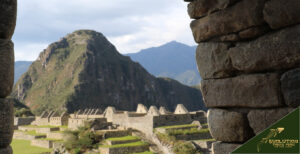
Submit a Comment Cancel reply
Your email address will not be published. Required fields are marked *
Save my name, email, and website in this browser for the next time I comment.
Discover the secrets of Machu Picchu with our exclusive monthly tour deals. Sign up now to receive exclusive updates on our monthly best tour deals.
- DESTINATIONS
- Tour to the Cotahuasi Canyon
4 Days/3 Nigths
This excursion will take us through the world's deepest canyon, also known as a canyon of wonders for its natural beauty, we can admire its Uskuni and Sipia falls, its traditional villages, volcanoes, extensive crops of chiwicha, mint, quinoa, corn, beans .. and more.
Abundant wild plants (many of them medicinal) while experiencing 12 different types of ecosystems.
Summary travel plan
Day 1: arequipa – majes valley – coropuna - cotahuasi, day 2: alca – puyca, day 3: pampamarca, day 4: sipia waterfalls, itinerary tour to the cotahuasi canyon.
07:00 hrs- We will start our unforgettable trip, leaving from Arequipa to Cotahuasi. Along the way we’ll enjoy beautiful landscapes of the Majes Valley, and as we continue we will also pass through the towns of Pedregal, Corire and Aplao.
12:30 hrs- We will stop in Chuquibamba (Quechua name meaning pampa of gold) where we will enjoy our first lunch, while admiring the natural beauty of the place.
14: 00hrs- We continue our way to Cotahuasi, observing along the way the Pallarcocha Lagoon, the snow-capped mountains of Coropuna and the volcano Solimana, as well as different species of flora and fauna that will vary through the way due to altitudinal changes.
18:30 hrs- We will arrive to the city of Cotahuasi. After a dinner together, we will spend the night in a local hotel.
8:00 a.m.- After having breakfast, we’ll go to Puyca, where we’ll begin a half-hour walk towards the Maucallacta Archaeological Complex. After a visit to this pre-Inca citadel, we will have lunch in Puyca.
14:00 hrs- We’ll return to the village of Alca to relax and then we’ll have the opportunity to go to the medicinal thermal baths of Luicho.
16:00 hrs- We will visit the town of Tomepampa, where we can appreciate its central square and its spring climate, we’ll return to Cotahuasi, where we will have dinner and spend our second night.
08: 00hrs- We’ll leave to the town of Pampamarca located 1 hour from Cortahuasi, passing through beautiful landscapes, and then we will head towards the Uskune waterfall known by local people as the girlfriend of Sipia. We will be able to appreciate the pre-Inca terraces. We’ll have our lunch in Pampamarca and then we will start our way back to Cotahuasi, where we will dine and spend the night.
8:00 a.m.- After breakfast, we will go to the Sipia Falls, which are an hour by car from Cotahuasi, and then 20 minutes by walk. We can enjoy the beautiful landscape in the way. After the tour, we will return to Cotahuasi for lunch, and we will have the afternoon free to get some rest.
20:00 hrs- We’ll return to Arequipa.
07:00 hrs - We will arrive in Arequipa next day in the morning.
This tour includes
- Public Bus Transport
- Meals: 04 breakfasts, 03 lunches, 04 Dinners
- Specialized trekking guide (English- and/or Spanish-speaking)
- 03 Nights’ Lodging
- First-Aid Kit
- Admission: Cotahuasi Canyon
- Cooking & Camping Equipment ( optional )
This tour does NOT include
- Water & Snacks
- Meals not specified in the itinerary
- Admission: Luicho Hotsprings
Important tour information "Tour to the Cotahuasi Canyon"
What to bring for this tour.
- Insect Repellent
- Light Clothing & Warm Layers
- Hiking Shoes
The experience that you will live on this trip
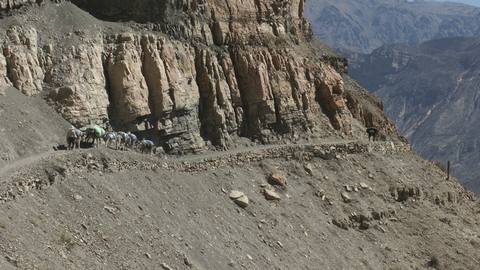
Our passengers experienced the best tours in Peru
Hice un tour durante dos semanas entre Perú y Bolivia, los tour a lo largo de estos dos países fueron excelentes, la atención y servicios buenos. Siempre predispuestos a la atención.

Excelente servicio. Una gran atención al detalle para que no te preocupes por nada. Nos arreglaron todos los recorridos y siempre fueron puntuales con los horarios
Inca World arranged La Paz city tour and Lake Taticaca tour. Guide Efrain is amazing and even picked us from the airport. We really enjoyed the tour.
It was a great experience, the tour guide was prepared and very helpful. Just loved the trekking with stunning site seeing's of the lakes and mountains. Highly recommend it!
La mejor experiencia con Inca World Peru. Desde que contacte con la agencia resolvieron todas nuestras dudas, nos hicieron sentir como en casa. La mejor experiencia que tuve en el maravillo pais Perú - Cusco
Inca World fue muy cumplido en los tres tours que hicimos, sus guias tienen una actitud divina…nos fuimos muy felices y agradecidos ❤️
TOUR TO THE COTAHUASI CANYON
Similar tours.
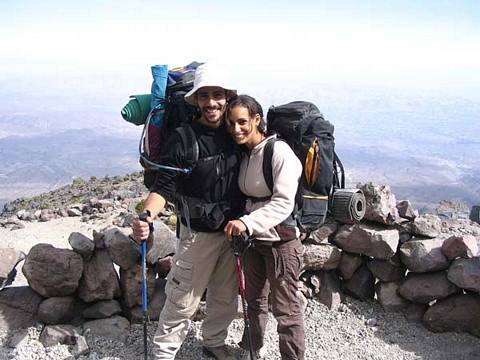
Ascent to Misti Volcano South Route
On this tour we’ll visit the famous Misti volcano, considered one of the 10 most active volcanoes in the Andes. Our main goal is to reach the crater of the volcano, to closely observe their large impressive fumaroles, and there we will have the best views of the city of Arequipa and the surrounding valley. Currently the volcano is constantly monitoring, so no need to worry.
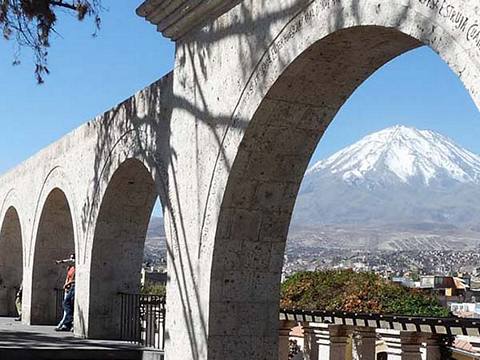
Arequipa walking City Tour
This small but exciting 4 hour tour includes visits to the main attractions of the white city of Arequipa, including: Plaza de Armas and the Church of San Francisco. You will learn a lot about the history, traditions and culture of this beautiful city.
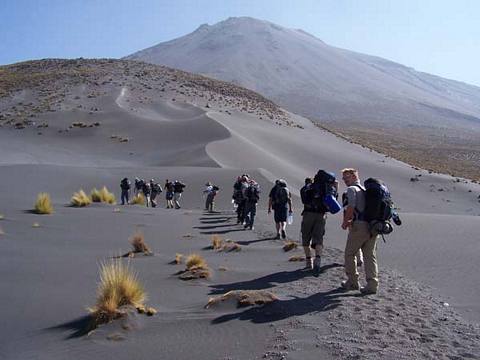
Misti Volcano climbing - Northern Route
The Misti volcano is known as one of the most representative symbols of the city of Arequipa, has a perfect climate, making it easy to climb. This tour will show us the beauty of the valley of Chili with spectacular views of the Aguada Blanca dam, snowy peaks, and the city of Arequipa. Also we’ll experience the feeling of being above the crater and see the fumaroles of this.
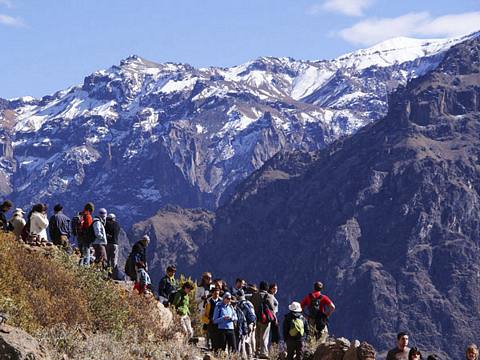
Colca Canyon 2 days / 1 night Conventional Tour
This great adventure is the most popular in Arequipa "white city". We will visit the town of Chivay where we can enjoy a folkloric show and also we can relax in the hot springs. We will visit La Cruz del Cóndor, the magnificent viewpoint of the canyon where the condors fly. We will also stop in some traditional villages and on the way we will have breathtaking views of different types of auquénidos, extensive landscapes, and archaeological remains.
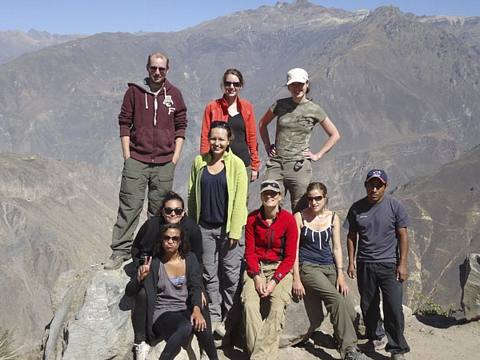
Colca Canyon Trek 2 days / 1 night
Meet one of the deepest canyons in the world, on a tour where you can appreciate the famous condor flight in search for food. Includes a walk through the picturesque canyon villages, with spectacular landscapes, and a stay in an oasis in the bottom of the canyon.
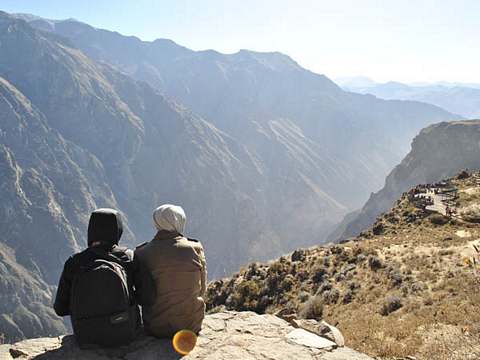
Full-day colca canyon
This tour will amaze us with the biggest flying birds in the world; Pre-Inca tombs, Inca terraces and with the depth and natural beauty of the second deepest canyon in the world!
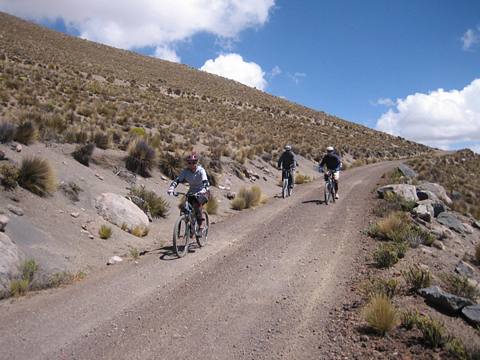
Chachani - Biking downhill
We will enjoy the spectacular views of the volcanoes, snowy mountains and the National Reserve of Salinas and Aguada Blanca in a speed tour through the Chachani volcano towards the city of Arequipa.
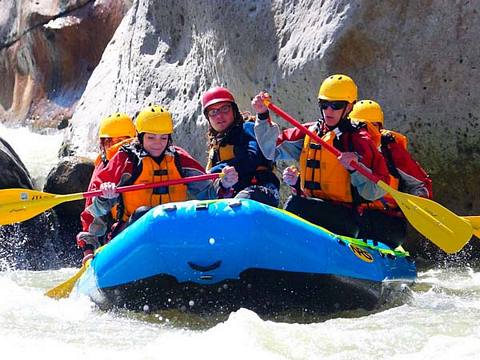
Rafting on the Chili River
This exciting adventure will take us through the Chili River, which crosses the city of Arequipa, we’ll experience rapids from level II to level IV, so anyone without a lot of experience in rafting could join this adventure. During the 8 kilometers we will have Beautiful views of Chili Valley and the city.
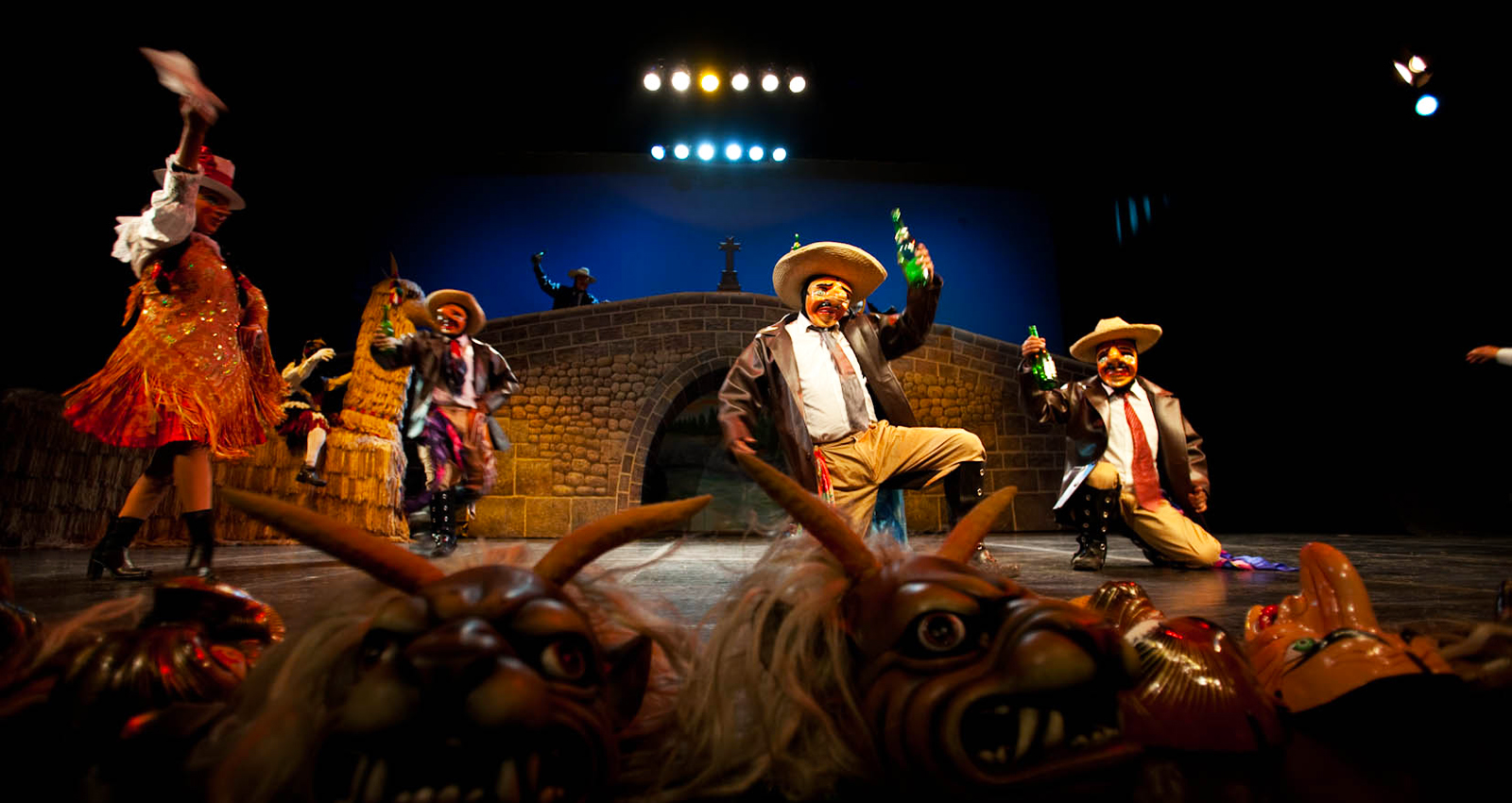
Visit Pirwa Hostels Cusco
Cotahuasi Canyon
Book your individual trip , stress-free with local travel experts
Select Month
- roughguides.com
- South America
- arequipa-and-lake-titicaca
- cotahuasi-canyon
- Travel guide
- Itineraries
- Local Experts
- Travel Advice
- Accommodation
Plan your tailor-made trip with a local expert
Book securely with money-back guarantee
Travel stress-free with local assistance and 24/7 support
First navigated by a Polish expedition in 1981 and declared a Zona de Reserva Turística Nacional in 1988, the magnificent COTAHUASI CANYON (Cañon de Cotahuasi), 378km from Arequipa, has since opened up to visits that don’t involve major rafting trips. However, getting to this wild and remote place is even more adventurous and less frequently attempted than the trip to the Valley of the Volcanoes. One of the world’s deepest canyons, along with nearby Colca and the Grand Canyon in the US, it is around 3400m deep and over 100km long.
Arriving from the south along the difficult road from Arequipa (some 375km long) the route passes along the bottom part of the canyon, where the main settlement, Cotahuasi (2684m), can be found. This remote and attractive settlemenet boasts quaint narrow streets and a small seventeenth-century church. It has a variable climate but isn’t particularly cold and is rapidly developing a name as an adventure travel destination, offering by far the best local facilities.
Continuing north to the village of Alca (near the hot springs of Luicho), the road forks. To the right, it heads into the deeper part of the canyon where you’ll find the village of Pucya; further up the valley, heading pretty well northwest you end up at the astonishingly beautiful plateau of Lauripampa, from where you can walk down into the canyon or explore the massive Puya raymondi cacti hereabouts. The left fork continues to the pueblo of Pampamarca, where the locals weave lovely woollen blankets. Above the pueblo there is a fabulous trail that leads to the Uscuni waterfalls on one side of the valley and the natural rock formations of the Bosque de Piedras on the other. A little further on you’ll find the thermal springs of Josla, an ancient spa that’s a joy for tired legs after a long hike.
About 40km from Cotahuasi, the Wari ruins of Marpa can be seen straddling both sides of the river, but another hour away is the larger and better-preserved Wari city of Maucallacta.
Travel ideas for Peru, created by local experts

8 days / from 2429 USD
Peru: into the Incan Empire
Who were the Incas? What did they do? What happened to them? Discover the answers, and much more, with this unique trip into the heart of the former Inca Empire.

8 days / from 2822 USD
Female Empowerment Tour
From meditations in Miraflores over visits to craftswomen in Chincheros to gratitude rituals in the Sacred Valley. This itinerary will allow you to reconnect with your feminine energy and learn more about women's lives in Peru.

19 days / from 3510 USD
Culture, Nature and Adventure in Peru
Get to know Peru through its locals and breathtaking trails- full of history. Hop aboard a motorboat to get to know the local way of life of the Uros people, before you start the great Inca trail, where beautiful landscapes, archaeological sites and fresh air are waiting for you.
_listing_1614463296559.jpeg)
8 days / from 1885 USD
The Inca Empire and the Nazca Culture
Peru has a rich history and culture, this itinerary will give you a taste of just how special it is. Take a flight over the mysterious Nasca lines, head to Cusco for some brilliant archaeological sites and discover the Inca cities. This trip will leave you wanting more!

12 days / from 6970 USD
Peru - the modern, the iconic, the wild
Spend 12 days in magnificent Peru - famous Machu Picchu, legendary Titicaca Lake and the wild Amazon await. This tour is great for foodies with amazing Peruvian delights, for history and culture lovers in the Sacred Valleys as well as wildlife enthusiasts in the Amazon. Something for everyone!

14 days / from 6565 USD
Best of Peru & Galapagos Islands
Split your South America trip into two fascinating countries: Peru with Machu Picchu and the Sacred Valley, as well as ocean-facing capital Lima. Afterwards, proceed to the Galapagos Islands. You will stay on 3 different islands and explore many more.
The Rough Guides to Peru and related travel guides
In-depth, easy-to-use travel guides filled with expert advice.

Find even more inspiration here

written by Rough Guides Editors
updated 26.04.2021
Ready to travel and discover Peru?
Get support from our local experts for stress-free planning & worry-free travels.
- Where to stay
- Travel advice

Perou Voyage Tours
Colca Canyon and Arequipa
Cotahuasi Canyon
Cotahuasi Canyon is located in Arequipa region in Peru and It is the deepest canyon in the world. Find full informations related to Cotahuasi tours and trekkings, this canyon is located between two mountains: Coropuna (6377) and Solimana (6093).
The Canyon was cut by the Rio Cotahuasi, a tributary of the Rio Ocoña, to a depth of approximately 3354 meters, over twice the depth of the Grand Canyon, only slightly deeper than its nearby rival, the Colca Canyon.
Where is Cotahuasi?
The Canyon is located at 375 Km. from Arequipa city, It takes 10 hours traveling by bus and at 8 hours by private car.
This is the preferred destination of adventure and nature lovers. To get the full experience of this natural wonder, you need to set aside about 3 days. The only road leading to the canyon goes through Chuquibamba. The journey begins on the Panamerican Highway near Arequipa. Four bus companies start daily from the Arequipa bus terminal, between 5 and 7PM.
Highlights:
- The landscapes have a large biodiversity including medicinal plants : muña, retama, tara, coca, jara (malva sylvestris), ruda (ruta graveolens), kiwicha, yareta (azorella compacta)
- Ideal trip destinations for watching condors, vicuñas, and andean foxes
- See The Sipia waterfall at 150 meters high
- Cross the Cotahuasi River along a suspension bridge
- Thermal hot springs of Niñochaca, Luicho and Lucha
- Walk along forests of Puya Raimondi

Where to Stay:
Perou Voyage offers the tour packages with the next accommodation:
- Hatun Wasi: Calle Centenario 307
- Hotel Valle Hermoso: Calle Tacna 106
- Casa Primavera Hostel: Union 112
When to go:
The best time for visiting Cotahuasi is furing the dry season (from June to September).
Dry season:
The dry season goes from June to September is the best time to visit the Canyon for the ideal weather conditions. Days are warm and sunny. Nights are cool. Expect average temperatures of 64-70 F during the day and 45 F and below at night.
Rainy season:
The rainy season goes from December to March creates muddy conditions on roads and trails and dangerously high water levels in the river.
What to Pack:
- Trekking Boots or shoes
- Warm Jacket
- Insect Repellent
- Peruvian currency
Tourist Attractions:
Sipia waterfalls:.
A beautiful waterfall located at 9 kilometers from the town, along the way you will pass through a bridge and then hike for around 20 minutes.
Bañadero del Condor Viewpoint:
Located at 30 kilometers from the town, you can go there taking the route to Allhuay view point and then hike down for around 15 minutes to Toro and then walk for around 10 minutes.
From this viewpoint you can watch a waterfall of 400 hight meters. At this point is possible to watch condors (from january to July).
Quechualla:
At 44 kilometers from Cotahuasi town, Quechualla is best known beacuse of the wine production, fruits and shrimp farming.
Judio Pampa Forest:
It takes more than one hour to arrive to the cactus forest, which is located at 1936 MASL. This area is ideal for birdwatching: hummingbirds, andean birds and bats.
Located at 20 minutes by car, this small village is recognized because of It’s beautiful architecture. Also you can visit Locrahuanca, a natural view point at 3390 MASL at one hour hiking from Tomepampa main square.
In this small village is located Lucha hot springs (45 minutes by car from Cotahuasi).
Huaynacotas:
In huaynacotas is located Luicho hot springs, which is very popular between locals for It’s medicinal properties.
Situated 44 kilometers by car from Cotahuasi. At 2 kilometers by foot you can find Maukallacta ruins, an important administrative center from Wari culture.
Another important tourist spot is the Puyas of Raimondi Forest, at 4000 MASL.
Pampamarca:
At 10 minutes by car, this small village offers 2 important tourist attractions: Uskune Waterfall and viewpoint and Huito Forest Stone.
Explore Cotahuasi, the world’s deepest canyon which is located in Arequipa region in Peru Andes.
The Canyon has many trekking routes specially designed for trekking lovers. The itineraries can be adpted according to your needs, time, and physical conditions.
The Cotahuasi Trek is not difficult and has a moderate level.
Canon de Cotahuasi

Top ways to experience Canon de Cotahuasi and nearby attractions

Most Recent: Reviews ordered by most recent publish date in descending order.
Detailed Reviews: Reviews ordered by recency and descriptiveness of user-identified themes such as wait time, length of visit, general tips, and location information.
Also popular with travelers

Canon de Cotahuasi - All You Need to Know BEFORE You Go (2024)
El contenido de esta página requiere una versión más reciente de Adobe Flash Player.

In the city of Arequipa exist a popular biking tour which is called the “country side en bicicleta”. In this tour, you visit the Remain of the Fundator (mansión del fundador), the Mill of Sabandia (Molino de sabandía) and the View Point of Sachaca. An other interesting tour is to go to the Valley of Chilina.
Also ask for mountain bike in colca canyon, in colca valley, and mountain bike in mocurca lake.
Downhill tour by mountain bike are always accompanied by a 4x4 van in which we transport the bikes TREK or GT. Our downhills are the following : Volcan Chachani Downhill from 5 000 m to 2 325 m Volcan Misti Downhill from 3 300 m to 2 325 m Downhill in the Colca Canyon from 3 300 to 2 000 m (Colca River).
The city of Arequipa is a region where you can find interesting rivers to do rafings : Colca canyon rafting, Arequipa Chili river rafting, Cotahuasi canyon rafting, ...


- Practical info
- Climate, weather for travel in Peru
- Beach vacations
- Cusco to Machu Picchu
- Inca Trails
- Amazon Jungle
- Cañete River
- Apurimac River
- Urubamba River
- Machu Picchu
- Testimonials
Cotahuasi River rafting – Whitewater Arequipa
Message Sent
Thank you for your message, we will be in touch very shortly.
Sorry, there has been a problem and your message was not sent.

Cotahuasi River rafting
River Explorers takes you to explore the deepest canyon in the world. Located in southwest Peru, Cotahuasi River has its origins in the 4,750 m – 15,580 ft lake of Wansuqucha. Cotahuasi rises from a 1km- 3 280ft high coastal ridge up to closely 5 km 16 404 ft elevation making one of the deepest canyons in the world.
Day 1: Arequipa – Cotahuasi
Check in time at 6 am at your hotel in Arequipa. We depart in our 4×4 toward the district of Cotahuasi. The drive includes impressive vistas of the mountain ranges of the Peruvian high sierra. Once we arrive to the beginning of the rafting we will set off the camp to rest for the night.
Day 2 – 4: Cotahuasi Rafting
We break camp after a delicious breakfast to jump into the river on an adventure that will take us into the first section of the Cotahuasi canyon. Rapids will be coming one after another while our guides will try to maneuver through technical rapids including rocks, waves and holes. Lunches will be served in the side of the river where you can have a relaxing time while your guides will make a nice lunch. The afternoond are also fun, with fun long rapids until we arrive to the campsites.
Day 5: Cotahuasi Rafting
After enjoying another good hearty breakfast. Certainly we will experience one of the biggest rapids in the most exciting section of the Cotahuasi River. In fast alternation, the river immediately takes you into a sequenced of rapids Class III and IV coming one after another, making this an intense adventure from beginning to end.
After thrilling exciting rapids we stop again for lunch to refuel to continue for couple of hours to our last camp.
Day 6: Cotahuasi Arequipa
After breakfast, the luggage boat is loaded and secured for the last section of the river. There will be some rapids to run while the river enter to the junction with the Ocoña river near the Pacific ocean. Cold beers and barbecue will be waiting for us at the end of the river tour. Our vehicles will take us back to Arequipa arriving about 6 pm.
Peru is a paradise for Rafting experiences, if you are in search of similar adventures then rafting the Apurímac River rapids will fullfil your thurst of adrenaline. We offer tours from 1 to 6 days rafting trips.
What is included?
Transport: 4X4 from Arequipa to the beginning of the tour, van from the end to Arequipa. Meals: 4 breakfast, 4 lunches and 3 dinners. Our meals are prepared with fresh ingredients including chicken, beef, pasta, rice, vegetables, potatoes for dinners and lunches. Porridge, fruit salad, yogurt, pancakes, bacon, eggs, mushrooms, bread and more for our breakfast.
Guides: Experienced certified guides in Rescue III and first advanced aid courses.
Gear: Boats, life vest, wet-suits, helmets, luggage boat, safety kayak, dry bags, paddles and paddle jackets.
Camping gear: Tents, sleeping pads.
Social Share
Similar Programs

Arequipa Rafting – Majes River

Arequipa Rafting – Chili River


Cotahuasi en 2 días

Precio por persona en base a 2 personas como mínimo

CALIFICACIÓN
★ ★ ★ ★ ★ 4.8 / 5.0
Según la opinión de 25 personas
TOUR AL CAÑÓN DE COTAHUASI DE 2 DÍAS
Duración: 02 días
- COMPARTIDO: Máximo 18 personas
- PRIVADO: Previa solicitud
ESTE PROGRAMA INCLUYE:

ESTE PROGRAMA NO INCLUYE:
¿que lugares conoceremos en el tour a colca de 1 dia.
El Cañon de Cotahuasi
Pueblo de Cotahuasi
Pueblo de Taurisma
Pueblo de Alca
Pueblo de Tomepampa
Pueblo de Velinga
Catarata de Sipia
Sitio Arqueologico de Ccalla
Laguna Chaquicocha
Baños Termomedicinales Luicho
Miradores Naturales
ITINERARIO DETALLADO
¿que llevar.
- Ropa abrigadora
- Zapatillas adecuadas para cortas caminatas
- Lentes de sol
- Bloqueador solar
- Poco equipaje
- Ropa de baño para aguas termales
Preguntas frecuentes del Tour a Cotahuasi 02D 01N
- ¿Cuántas horas dura el viaje a Cotahuasi desde Arequipa?
Aproximadamente son 07 horas de viaje para llegar a Cotahuasi; en un trayecto de carretera asfaltada pasando cerca del nevado Coropuna (4600msnm) , que es la parte más alta de todo el camino hasta llegar al pueblo. Las salidas se realizan desde el Terminal Terrestre de Arequipa y los buses que salen hacia Cotahuasi son Reyna, Cromotex e Inmaculada, generalmente sus horarios de salida son a partir de la 05:00pm para llegar en la madrugada del día siguiente.
- ¿Qué carro puedo tomar para llegar al Terminal Terrestre y en cuanto tiempo llego?
Existen varias empresas de taxis que realizan ese servicio, incluso los hoteles cuentan con aliados de empresas de transporte seguro para cualquier tipo de traslados. Nosotros también podemos brindarle el servicio de traslado al Terminal. El tiempo en llegar al Terminal Terrestre es de 15 a 20 minutos promedio.
- ¿Con cuánto tiempo de anticipación tenemos que presentarnos en el Terminal Terrestre para abordar el bus?
Se recomienda por lo menos estar 30 minutos antes para embarcar el equipaje y evitar inconvenientes posteriores.
- Fuera de la compra de los pasajes ¿Se paga algo extra en el Terminal?
Si, por el uso de las instalaciones, se tiene que pagar un ticket de embarque que es de S/. 1.50 por persona. En el terminal hay un puesto pequeño donde se tiene que acercar para pagar el ticket.
- Llegando a Cotahuasi, ¿Cómo llego al Hotel?
Generalmente una persona los espera en el terminal con un letrero donde indica su nombre o nombre del grupo quien los trasladará al Hotel para que puedan descansar por unas horas ya que se llega en la madrugada y ya después del desayuno pueden iniciar con lo programado.
- ¿Cómo son los hoteles en Cotahuasi?
Los hoteles turísticos en Cotahuasi cuentan con todos los servicios básicos como baño privado, agua caliente, TV y brindan el servicio de desayuno. Los hoteles con los que trabajamos son Hatun Huasi como un hotel promedio y el Hotel Valle Hermoso de mayor categoría.
- ¿Es muy exigente las caminatas que se realiza en el tour?
Las caminatas no son complicadas, sin embargo se recomienda hacer este tour con un estado físico bueno, la ventaja de todo el camino es que se puede apreciar el impresionante paisaje dentro del cañón.
- ¿Cuál es el costo promedio de los almuerzos y cenas en los restaurantes de Cotahuasi?
Generalmente un menú normal cuesta entre los S/. 8.00 y S/. 10.00; ahora si desea un menú turístico el costo promedio es de S/. 15 a S/. 25.00 dependiendo de lo que se desea; los precios son los mismos en cuanto a la cena. Los alimentos se preparan con productos nativos de la zona, en el caso de carnes de consume, carne de res o alpaca, también de consume la trucha.
CONDICIONES GENERALES:
- Precios no válidos para feriados largos: semana santa, fiestas patrias, navidad, año nuevo. Para estas fechas adicionar el 25%.
- Precios incluyen IGV, en caso el cliente desee boleta o factura se le otorgará sin adicionar monto alguno.
- Los precios están expresados en soles, son por persona. Si el cliente desea hacer el pago en dólares se aplicará el tipo de cambio vigente al día de la compra.
- Para confirmar alguna reserva se solicita el pago del 100% del servicio antes de realizar el tour, caso contrario se hará la anulación del servicio.
- MENORES DE EDAD: Niños menores de 03 años tienen descuento del 100% del precio, compartiendo asiento y alimentación con adultos. Niños de 03 a 08 años tienen descuento del 10% en todos los servicios. Niños a partir de 09 años pagan tarifa de adulto. Solo se acepta 01 niño menor a 03 años con descuento del 100% por cada 04 adultos.
LOS VIAJEROS QUE ADQUIRIERON ESTE TOUR TAMBIÉN RESERVARON

Trekking Colca 3 días
Duración: 03 días

Tour Laguna de Salinas
Duración: Full day

City tour por Arequipa
Duración: 04 horas
TOURS Y ACTIVIDADES PARECIDAS

Tour a Cotahuasi 3 días

Bosque de piedras de Choqolaqa

Tour Valle de Majes
¿Porque reservar en ANDERRA TRAVEL?
GRUPOS PEQUEÑOS
Realizamos tours con grupos reducidos porque queremos verte disfrutar el tour a tu manera.
ITINERARIOS DISTINTOS
Todos nuestros recorridos turísticos fueron elaborados cuidadosamente para que disfrutes al máximo de todos los lugares.
GUÍAS PROFESIONALES
Tenemos al mejor equipo de guías, que se precoupan por darte la mejor información y hacer hacer de tu viaje un placer.
SIN CARGOS ADICIONALES
Olvídate de los cargos adicionales por pagos con Tarjeta de Crédito, todos nuestros precios son finales.
ATENCIÓN 24/7
Te brindamos una atención y asesoría antes, durante y después de cada tour porque queremos que te sientas seguro.
PAGO SEGURO
Puedes pagar con toda seguridad en nuestra web porque tenemos certificados SSL integrados, todos los pagos son cifrados.
- Puerto Maldonado

COMMENTS
4-Days Tour to Cotahuasi Canyon in Arequipa. 2. Adventure Tours. from . $611.93. per adult. Full Day Tour to Colca Canyon from Arequipa. 19. Full-day Tours. from . $30.50. per adult. Colca Canyon Trek 3 Day 2 Night. 209. Recommended. 96% of reviewers gave this product a bubble rating of 4 or higher. Photo Shoots.
Itinerary. DAY 1 - COTAHUASI CANYON. This morning depart Arequipa and head northwest through the Panamerican highway at sea level and then through the highlands at the base of Mt. Coropuna - about 4.500m - before descending into the Cotahuasi valley.
Arrange your customized Cotahuasi Canyon tour by Bookmundi! Ancient ruins in Cotahuasi Canyon Seasons. Finally, what is the best time to visit Cotahuasi? In general, the temperature here is between 10 and 25°C all year long, and it varies depending on the altitude, not on the seasonal changes. There are two seasons- wet and dry.
Cotahuasi Canyon, located about 200 kilometers (124 miles) from Arequipa in the heart of the Southern Andes, is one of the deepest canyons in the world. It is formed by the flow of the Cotahuasi River as it carves its way between two peaks, Coropuna and Sulimana, each of which towers over the ravine at more than 20,000 feet above sea level.
Cotahuasi Canyon Trek - 7 Days. Twice as deep as the Grand Canyon, the Cotahuasi is the deepest canyon in the world, cutting through the Coropuna and Surimana massifs. With numerous hiking trails and vantage points, Cotahuasi is a beautiful region that few travelers get to see. With single and multiday tours, you'll get to hike the length of ...
1. Arequipa - Cotahuasi Canyon 4D / 3N. Adventure Tours. 3+ days. Do not miss this wonderful place of cotahuasi. the deepest canyon of the narrowest of all Peru, the Sipia Waterfall, with…. Free cancellation. from.
Multi-day trip. 3-Day Cotahuasi Canyon Tour. New activity
Cotahuasi Canyon. Our 4 days journey will take us to this amazing valley located also in Arequipa region. The canyon has a depth of 3,535 meters and is considered in the list of the deepest canyons of the world. The canyon itself is an impressive gorge carved by the river passing between two enormous volcanos: Coropuna (6425m) and Solimana (6093m).
A common trekking route that takes in the major sites of the area is a 4 Days / 3 Nights trekking tour and could be organised as follows: Day 1: Drive from Arequipa to Toro Muerto where you can see the 700-year old pre-Incan petroglyphs. Then come back to Cotahuasi village. Accommodation at a hotel or a campsite in Cotahuasi.
Rio Cotahuasi Tours with a Tour Guide: Tours led by experienced and knowledgeable tour guides provide valuable insights into the region's history, culture, and natural features. These guides often have expertise in archaeology, anthropology, or local traditions, offering a more enriching experience for visitors. ...
We also organize tours and treks in Southern Peru: Puno and Cuzco. Our offices are located in Peru - South America, in the city of Arequipa, at 4 blocks from Arequipa`s Main square, in the Jerusalén Street 400 AB-1, phone 51-54-203737 and e mail: [email protected]. We are a resposible Colca Canyon tour Company. recommended by.
Cotahuasi Trek 4 days/3 nights is the perfect itinerary for hiking lovers. The Cotahuasi Canyon is the deepest in the world and It's located at 8 hours by private car from Arequipa, Peru. ... Perou Voyage Tours: Address: Avenida Los Incas 415-A. Telephone: +5154446944. Whatsapp: +51958199840. Arequipa - Pérou. WhatsApp. Important Information ...
After the tour, we will return to Cotahuasi for lunch, and we will have the afternoon free to get some rest. 20:00 hrs- We'll return to Arequipa. 07:00 hrs - We will arrive in Arequipa next day in the morning. This tour includes. Public Bus Transport; Meals: 04 breakfasts, 03 lunches, 04 Dinners;
The Cotahuasi Sub-basin Landscape Reserve is a protected natural area (ANP) located in the province of La Unión, 9 hours by car from Arequipa ... Humantay Lake Full Day Tour from Cusco; Sacred Valley Tour with Salt Mines; Day Trek to Rainbow Mountain Perú 2024; Cusco City Tour; Pallay Poncho Full Day Tour; Inti Raymi Perú Tour 2024; Full Day ...
19 days / from 3510 USD. Culture, Nature and Adventure in Peru. Get to know Peru through its locals and breathtaking trails- full of history. Hop aboard a motorboat to get to know the local way of life of the Uros people, before you start the great Inca trail, where beautiful landscapes, archaeological sites and fresh air are waiting for you.
With this excursion we will visit the Cotahuasi canyon, the Majes and Huaynacotas valleys and the Coropuna and Solimana volcanoes. In addition, you can enjoy the healing waters of the Luicho baths.
Cotahuasi Canyon is located in Arequipa region in Peru and It is the deepest canyon in the world. Find full informations related to Cotahuasi tours and trekkings, this canyon is located between two mountains: Coropuna (6377) and Solimana (6093). The Canyon was cut by the Rio Cotahuasi, a tributary of the Rio Ocoña, to a depth of approximately ...
COTAHUASI CANYON TOUR & COTAHUASI TREK : IMPORTANT INFORMATION Day 1: 8 hours by car and two hours by foot and stop over to take photos. On This day 80% of the road is asphalted. Day 2: 2 hours by car and 3 hours of trek. This day the road is not asphalted. Day 3: 4 hours by car, In Cotahuasi 45 min. of trek and Andagua 2-3 hours of trek ...
4-Days Tour to Cotahuasi Canyon in Arequipa. 2. Adventure Tours. from . $611.93. per adult. Full Day Tour to Colca from Arequipa. 40. Recommended. 90% of reviewers gave this product a bubble rating of 4 or higher. Historical Tours. from . $38.00. per adult. 8-Hours Tour in Arequipa Laguna de Salinas with Pick-up. 11.
We also organize tours and treks in Southern Peru: Puno and Cuzco. Our offices are located in Peru - South America, in the city of Arequipa in the Jerusalén Street 400 AB-1, phone 51-54-203737 and e mail: [email protected]. Recommended by: MORE INFORMATION … AREQUIPA TOUR - COLCA TOUR - COTAHUASI TOUR : COLCA CANYON TOUR
Cotahuasi River rafting. River Explorers takes you to explore the deepest canyon in the world. Located in southwest Peru, Cotahuasi River has its origins in the 4,750 m - 15,580 ft lake of Wansuqucha. Cotahuasi rises from a 1km- 3 280ft high coastal ridge up to closely 5 km 16 404 ft elevation making one of the deepest canyons in the world.
Preguntas frecuentes del Tour a Cotahuasi 03D 02N ¿Cuántas horas dura el viaje a Cotahuasi desde Arequipa? Aproximadamente son 07 horas de viaje para llegar a Cotahuasi; en un trayecto de carretera asfaltada pasando cerca del nevado Coropuna (4600msnm), que es la parte más alta de todo el camino hasta llegar al pueblo.Las salidas se realizan desde el Terminal Terrestre de Arequipa y los ...
Preguntas frecuentes del Tour a Cotahuasi 02D 01N ¿Cuántas horas dura el viaje a Cotahuasi desde Arequipa? Aproximadamente son 07 horas de viaje para llegar a Cotahuasi; en un trayecto de carretera asfaltada pasando cerca del nevado Coropuna (4600msnm), que es la parte más alta de todo el camino hasta llegar al pueblo.Las salidas se realizan desde el Terminal Terrestre de Arequipa y los ...